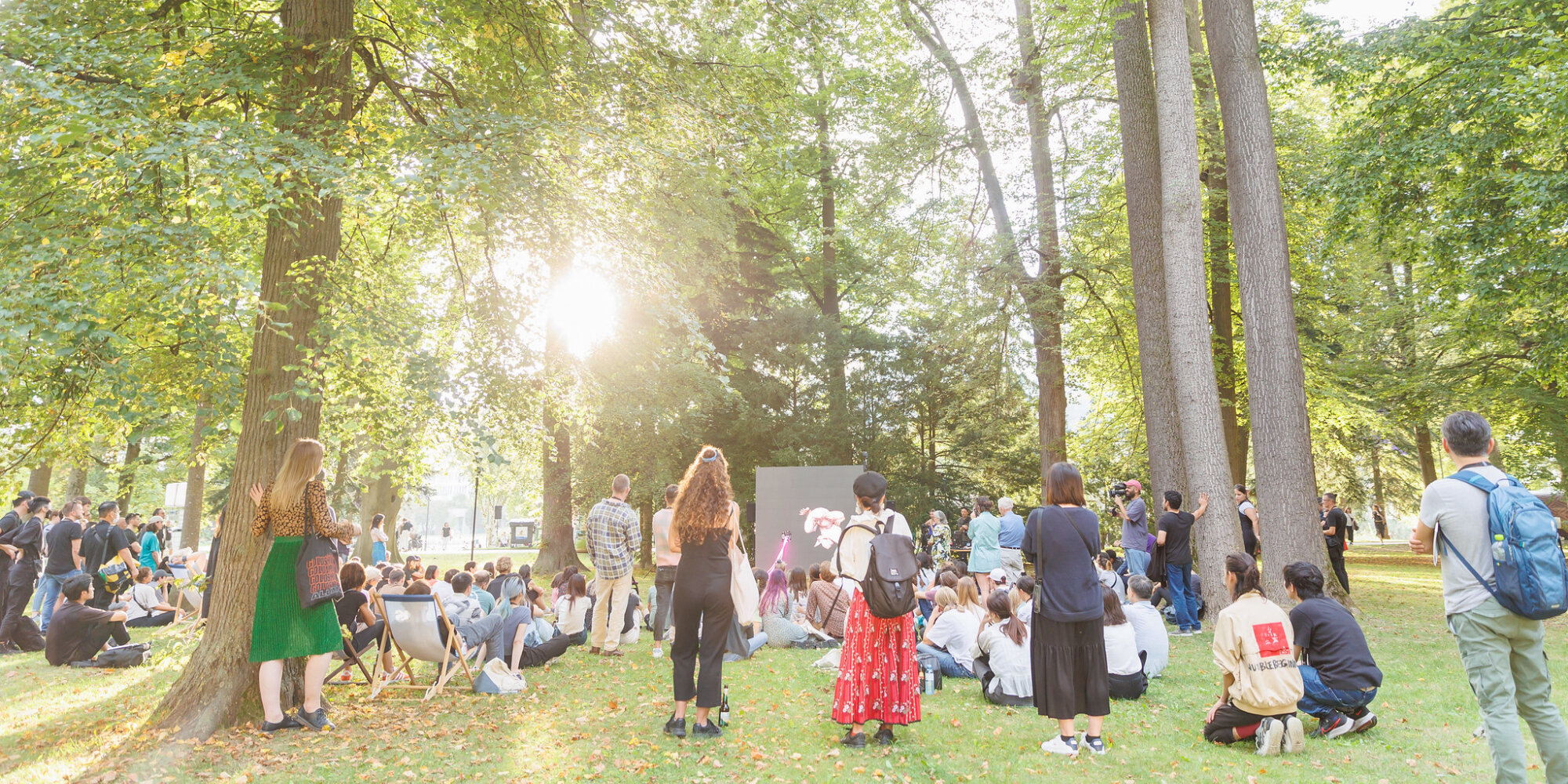After two quieter years, this year’s Ars Electronica Festival was again a hive of activity, there’s probably no better way to describe it: 71,000 visitors at 11 locations, spread over 5 days and 425 events. 953 artists, researchers and activists, together with 337 cooperation partners and brought into existence by 439 employees.
Amid all the excess, however, the festival’s core theme should not be forgotten. “Anyone who was at this year’s Ars Electronica and heard 24-year-old Selina Neirok Leem from the Marshall Islands knows two things: first, that we still don’t have a clue what the climate crisis will mean for us. And second, that the change coming will have to be a very fundamental one,” says Gerfried Stocker. “But anyone who has been to the festival has also experienced that this truth is reasonable and does not cause people to fall into panic or resignation. On the contrary – all over the world, artists, researchers, activists and students have been doing their utmost to initiate the necessary change for a quite some time. And the determination and creativity with which they are doing so is encouraging.”
We would like to invite you with numerous pictures, anecdotes and videos to once again let the last 5 days pass in revue here. We invite you to process the many impressions one more time, to let the inspirations that you have gained take effect and, last but not least, to highlight the following date in your calendar: See you again from September 6 to 10, 2023!
Let’s start on the evening before the actual opening of the Ars Electronica: On Tuesday, September 6, the Ars Electronica, together with the Linz University of Art Design, the Mariendom, the Lentos and the Salzamt, invited the public to a Pre-Opening Walk through downtown Linz, which was already fully geared up for the festival. Above all, the local audience was able to get a first glimpse at projects. The evening culminated at the Ars Electronica Center, where the Depp Space 8K became a stage for media art.
A particularly large number of people wanted to experience for themselves the quality of the media art from Latin America that was presented at Lentos in cooperation with CIFO and Ars Electronica. The exhibited works are the result of the CIFO Ars Electronica Awards and can be seen until September 29.
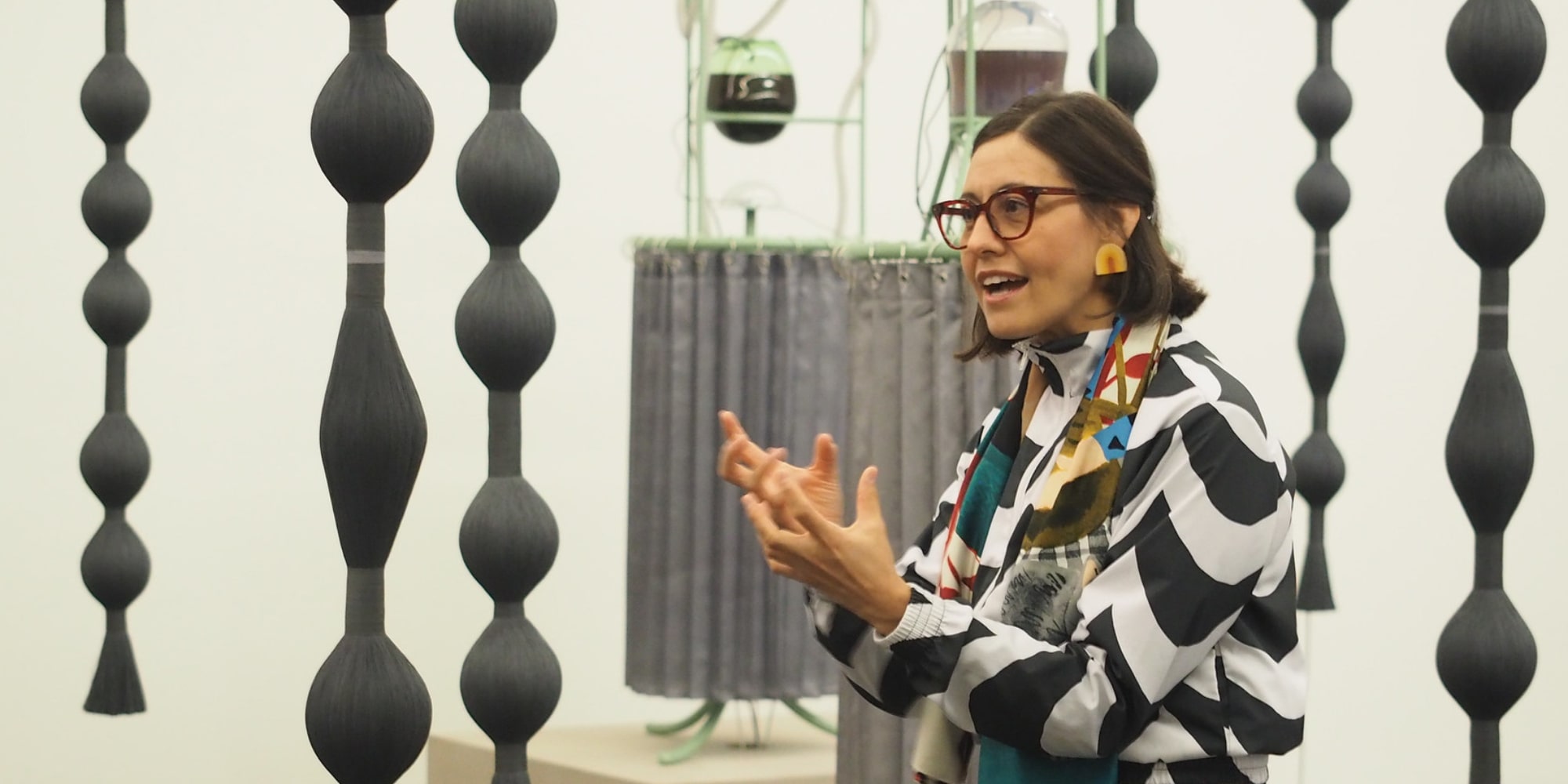

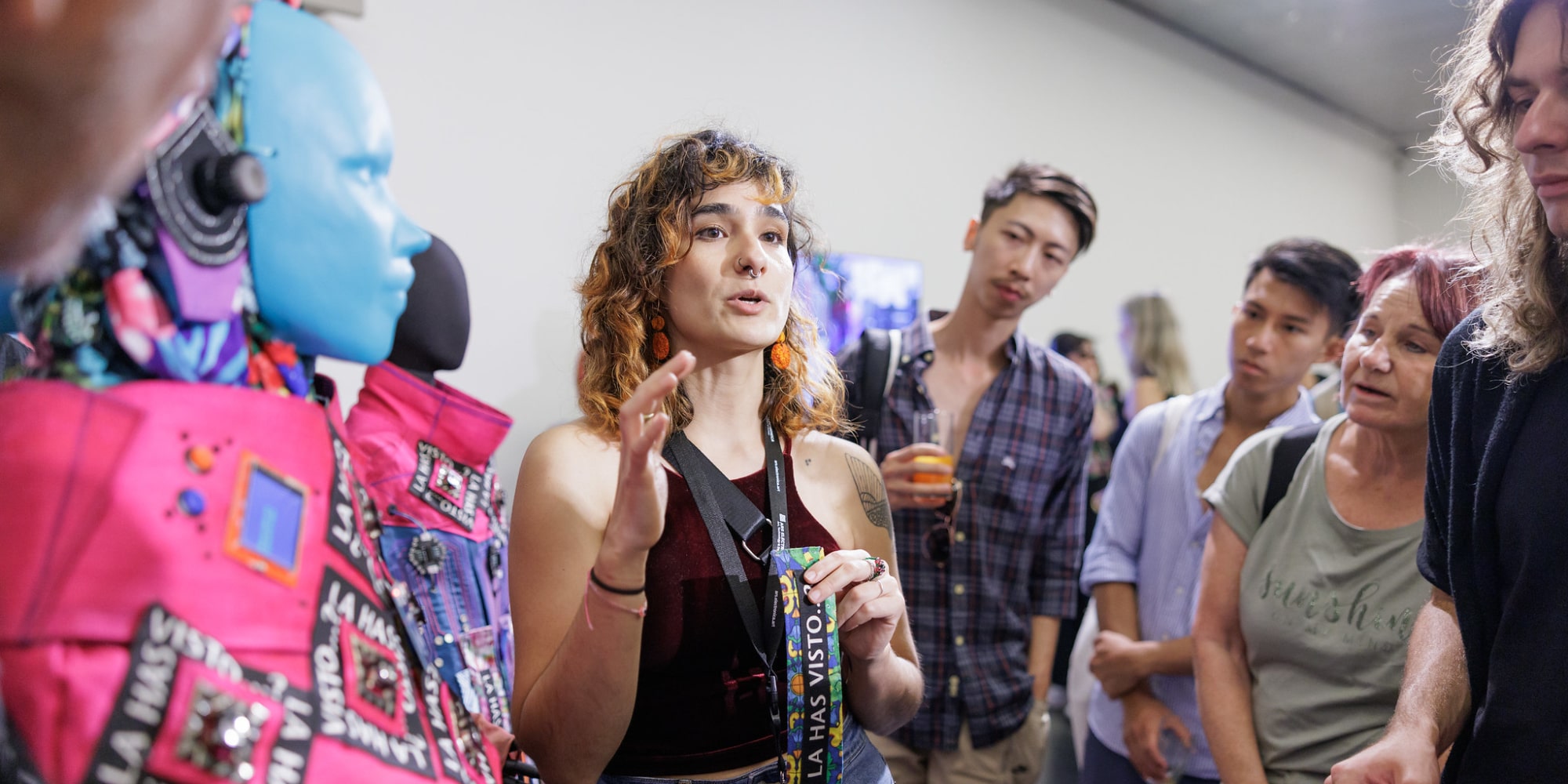
The Mariendom once again served as a spectacular sacred setting for LightSense, a huge walk-in architecture that communicates with the visitor and presents itself as a pavilion of love, anger, curiosity or joy, depending on the emotional state.
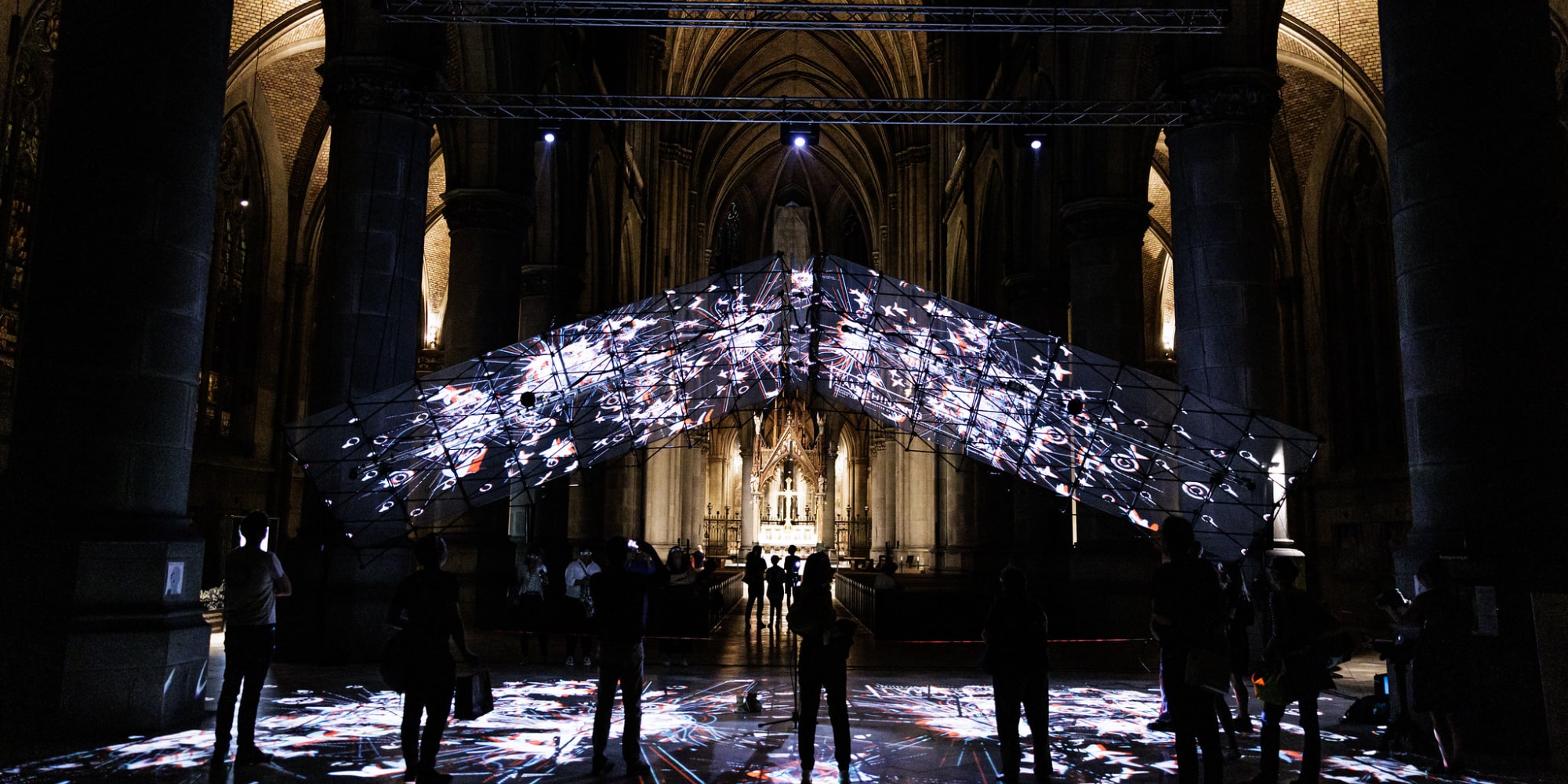
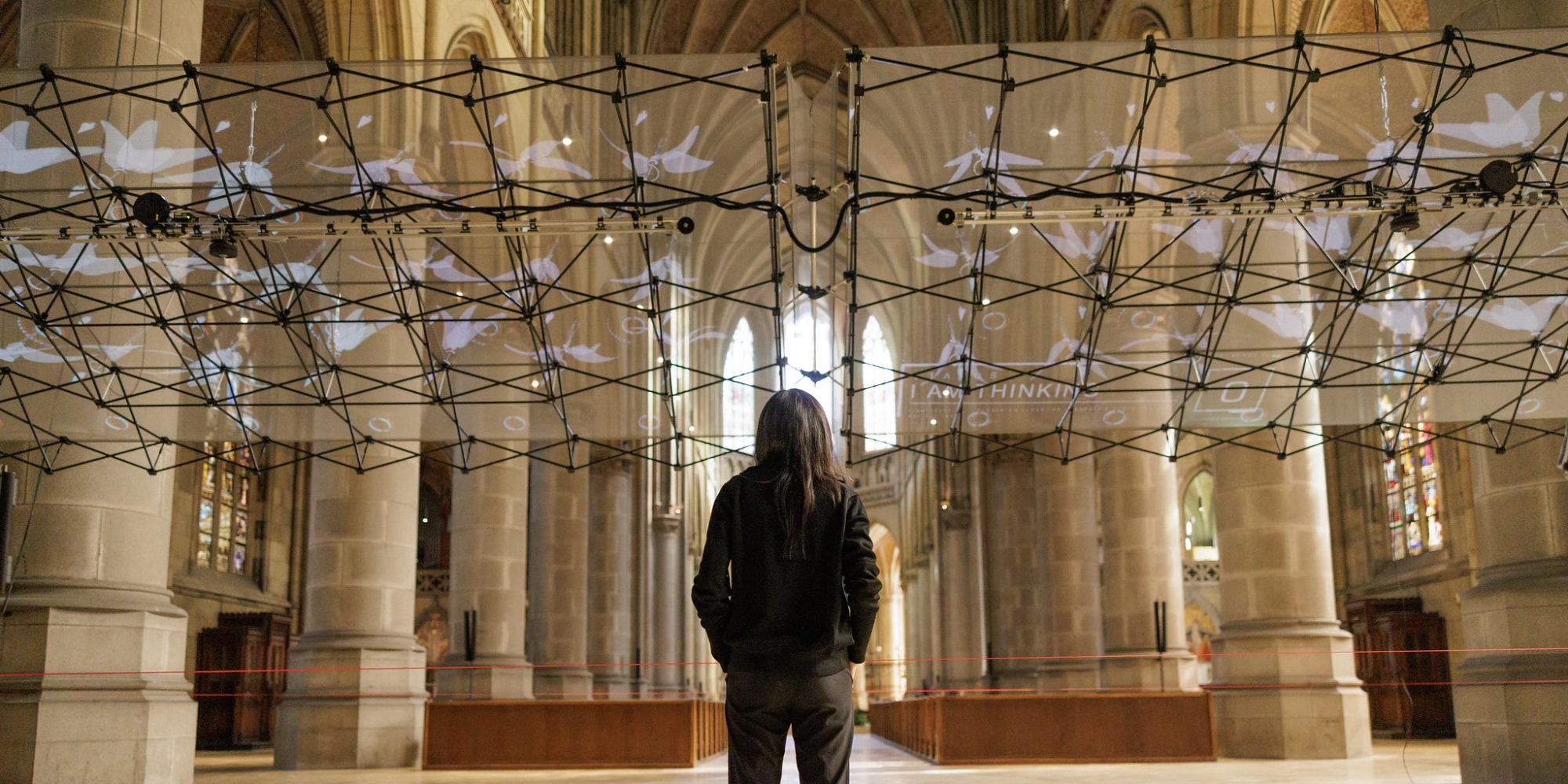
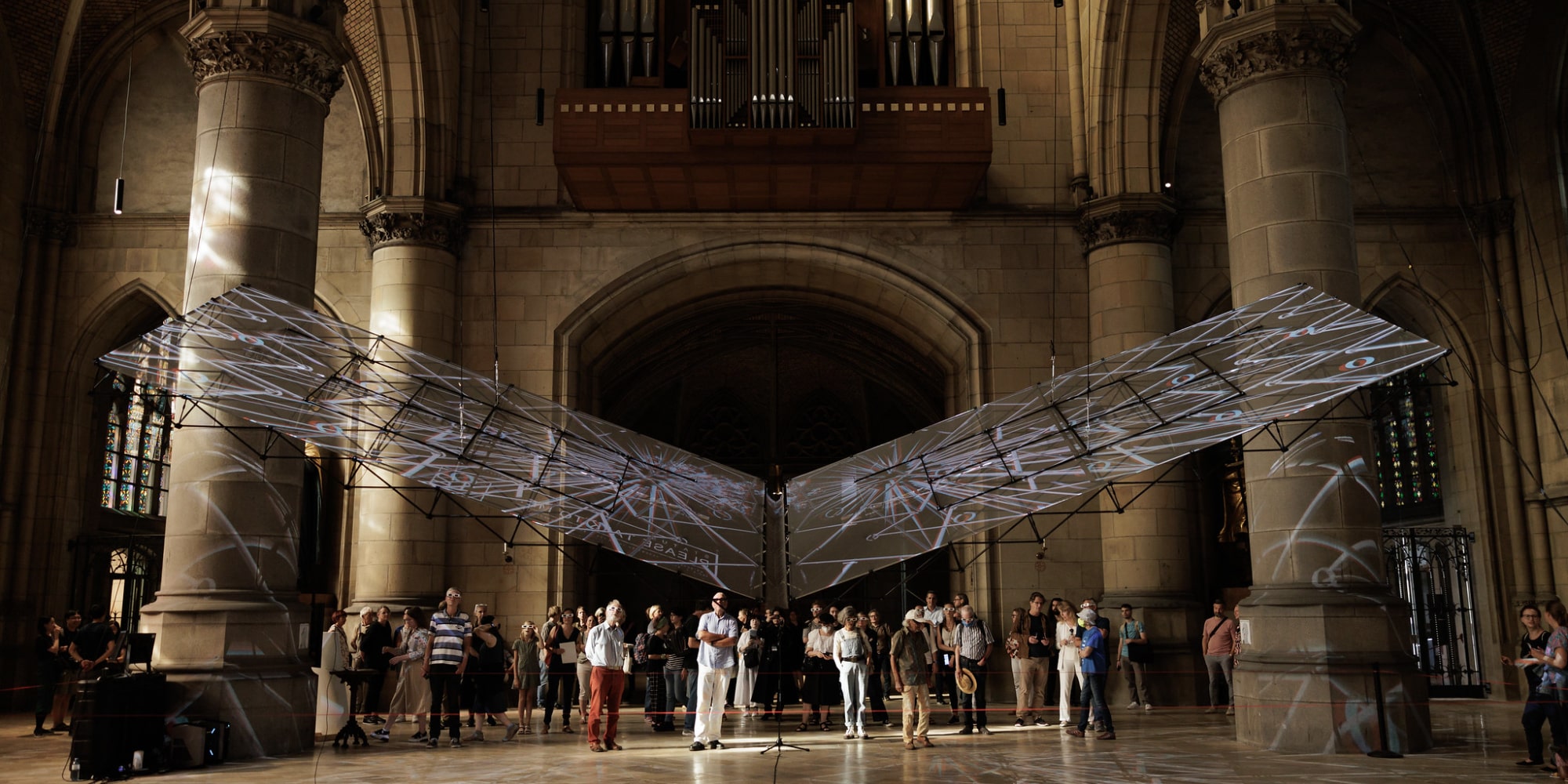
Since 2002, the Linz University of Art and Design has been inviting art universities from all over the world to Linz as part of the Ars Electronica Festival. In 2022, no less than 24 academic institutions accept this invitation and present works by their professors and students, including Aalto University School of Arts, Design and Architecture, Arizona State University, Bauhaus Universität Weimar, Birmingham City University, Korea National University of Arts (K-ARTS), Musrara the Naggar School of Art and Society, Technische Universität Berlin, Universidad Austral de Chile, Berlin University of the Arts (UdK), University of Auckland, University College London, University of Applied Sciences Berlin, University of the Arts London or the University of Tokyo.

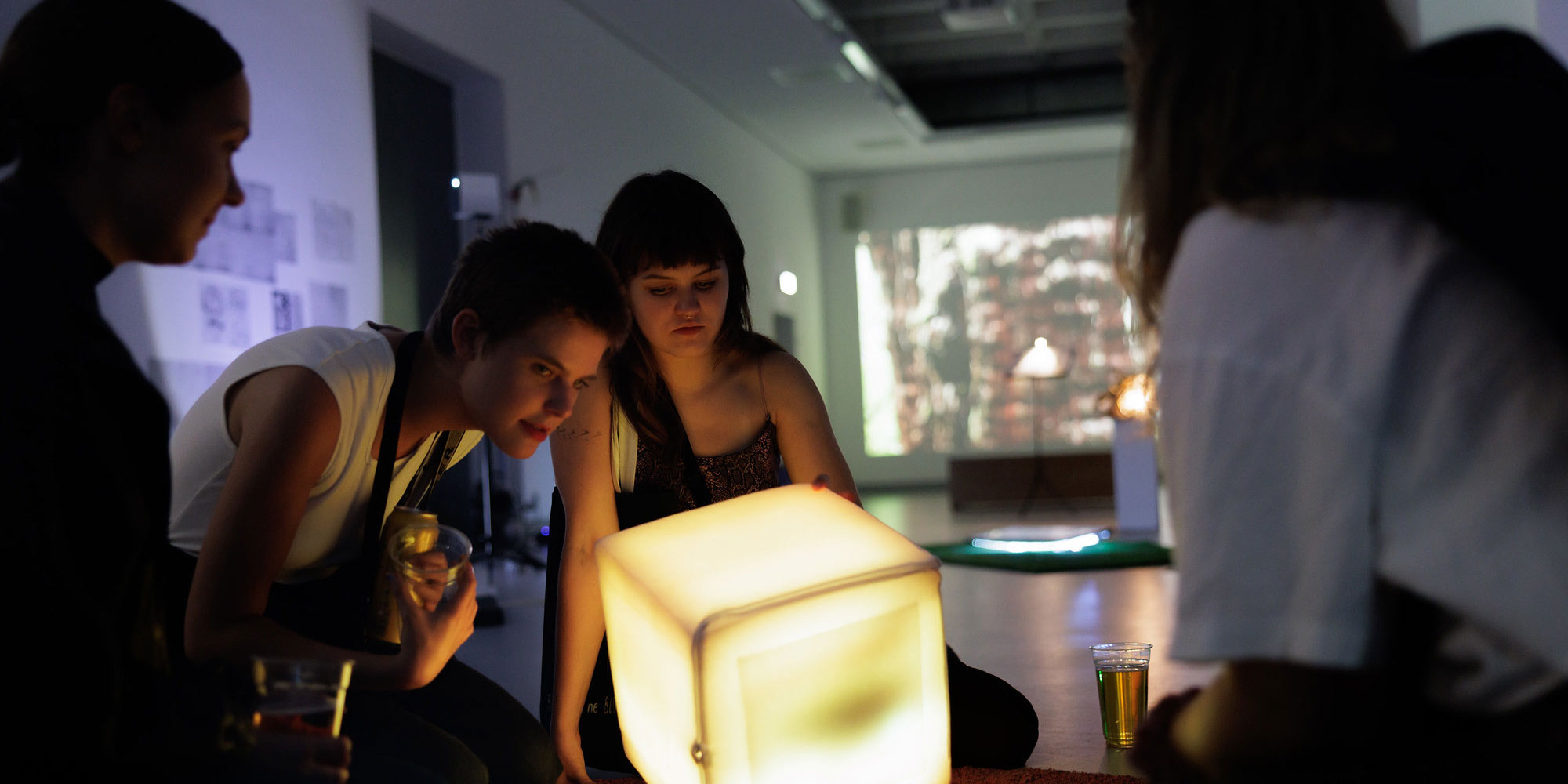

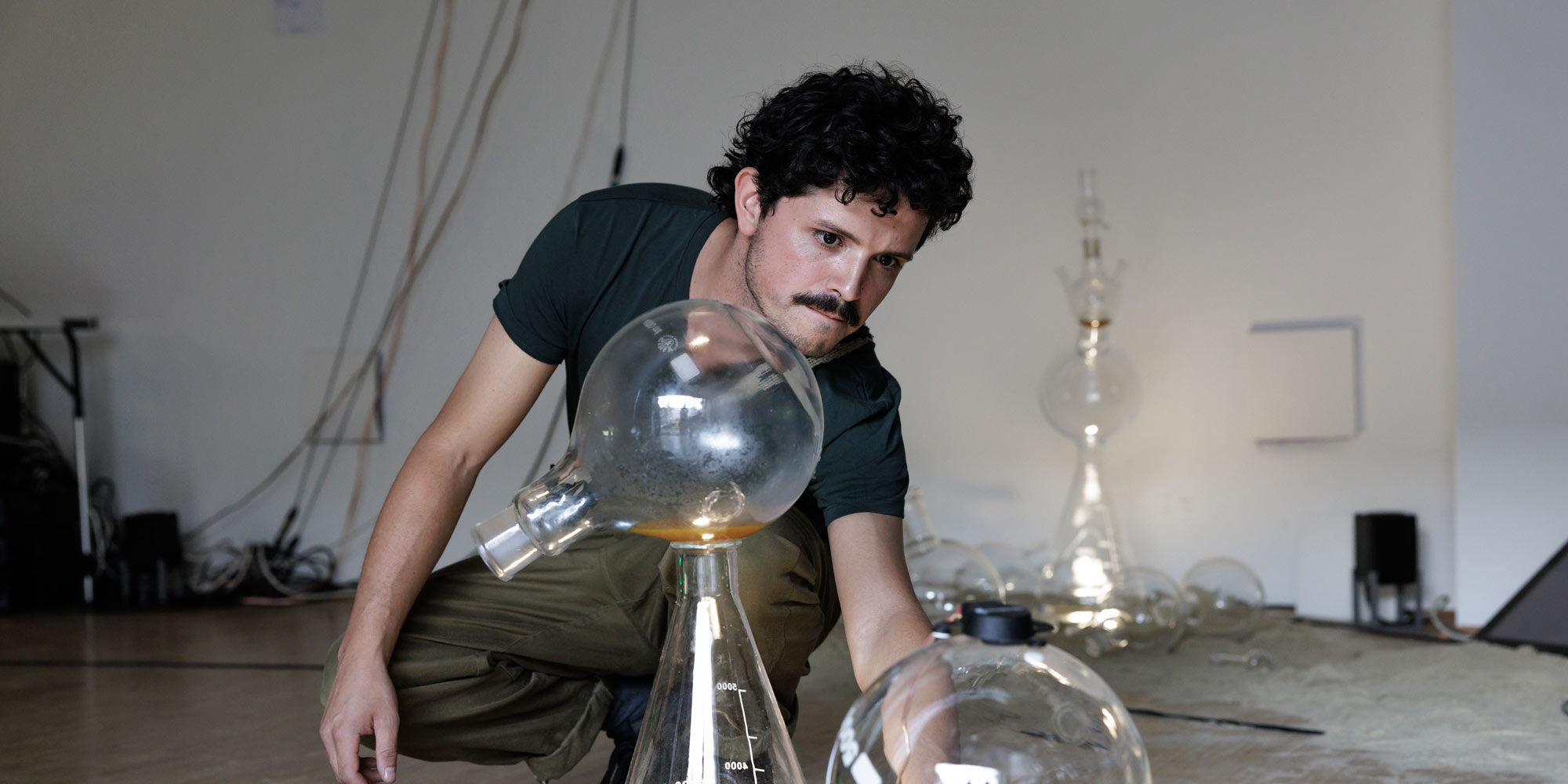
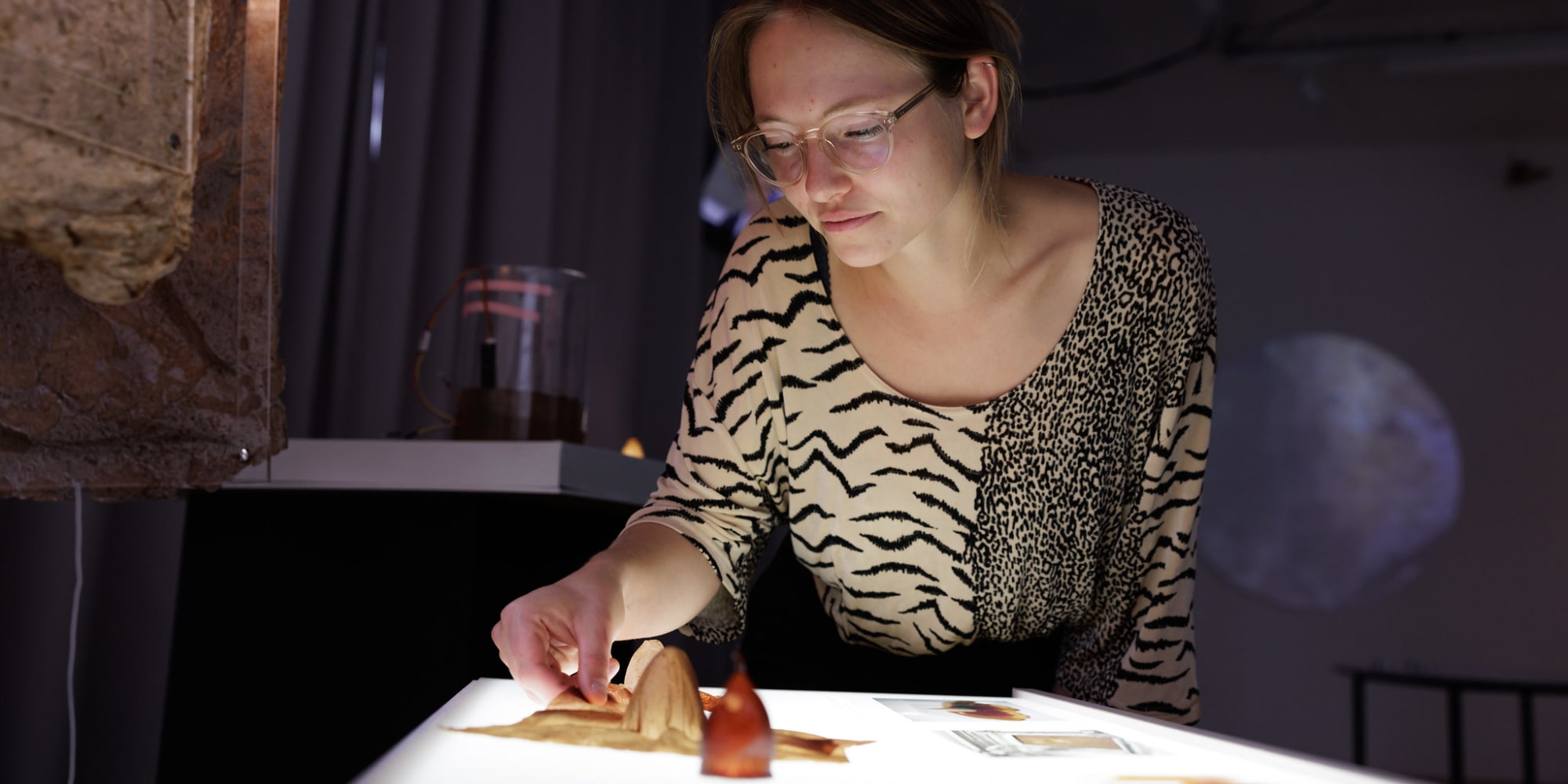
The multitude of exhibited contributions, which makes it almost impossible to experience everything, have an incredible quality, especially appealing are the interactive works that invite the audience to participate. In the evening, the Sound Campus in the courtyard of the Kunstuni, curated by Fadi Dorninger and Stefan Tiefengraber, invited to listen to partly danceable, partly experimental sounds and cool drinks.
Wednesday, September 7, or: The Opening Day
There was no time to sleep in, however, because on Wednesday morning the starting signal for the coming days was given at several locations. At noon, Kepler’s Garden on the JKU campus opened its doors for the first time and visitors swarmed in to be the first to take a look at the diverse exhibitions.
Last but not least, the good weather attracted the audience to the festival grounds, where especially the Sound Park invited to linger, to pause after the many impressions or to enjoy regional and mostly vegetarian snacks from the festival’s food trucks.

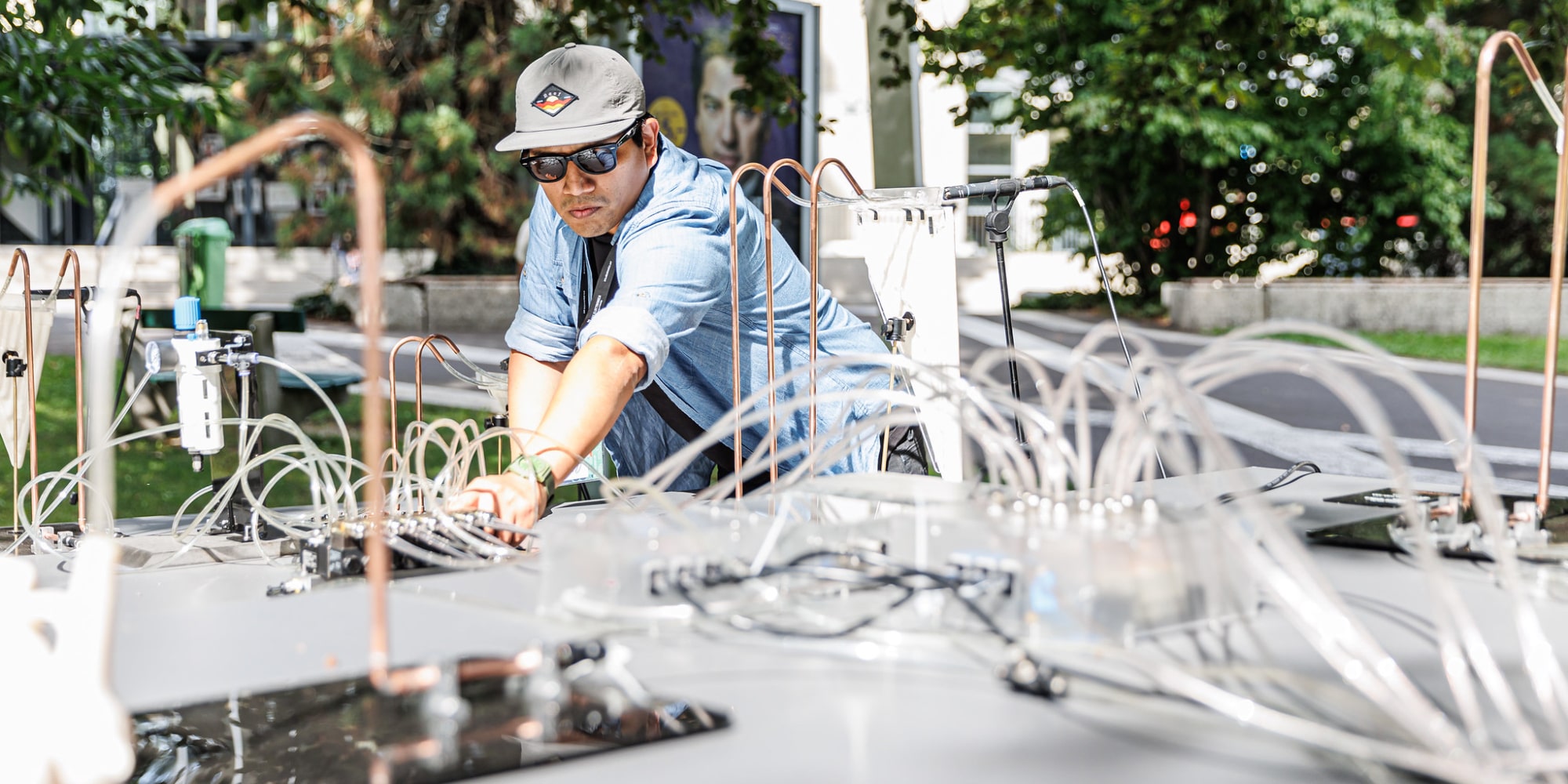
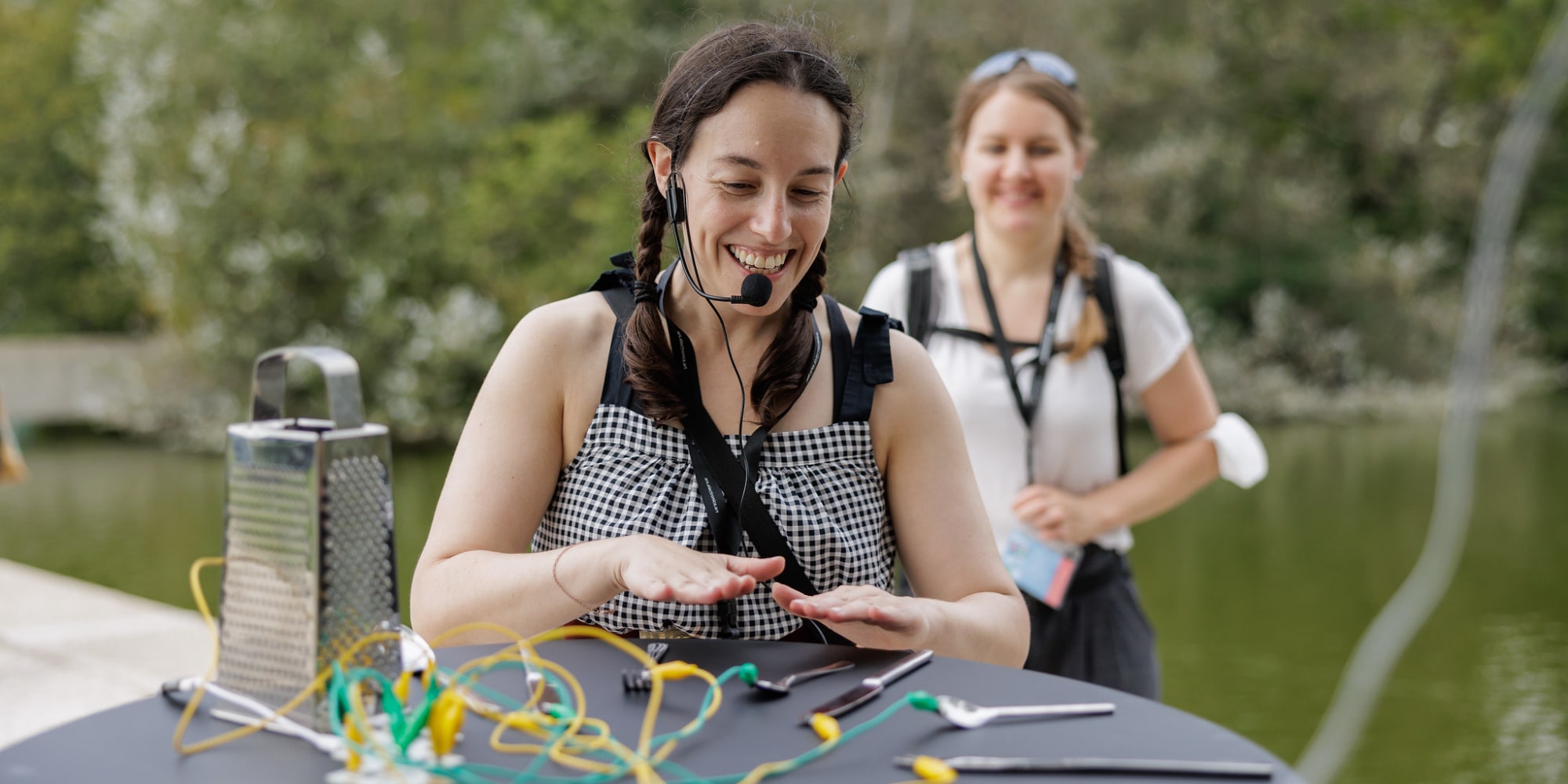
Continuing with the theme exhibition, STUDIO(dys)TOPIA was dedicated to the life on Planet B and thus to the festival theme. The artists here skillfully shed light on individual aspects of the climate crisis that get less attention (such as methane in the bogs of Scotland, microplastics in the oceans, or plants that are about to become extinct because no more female specimen can be found) and transformed the premises of Science Park 4 into a unique exhibition location.
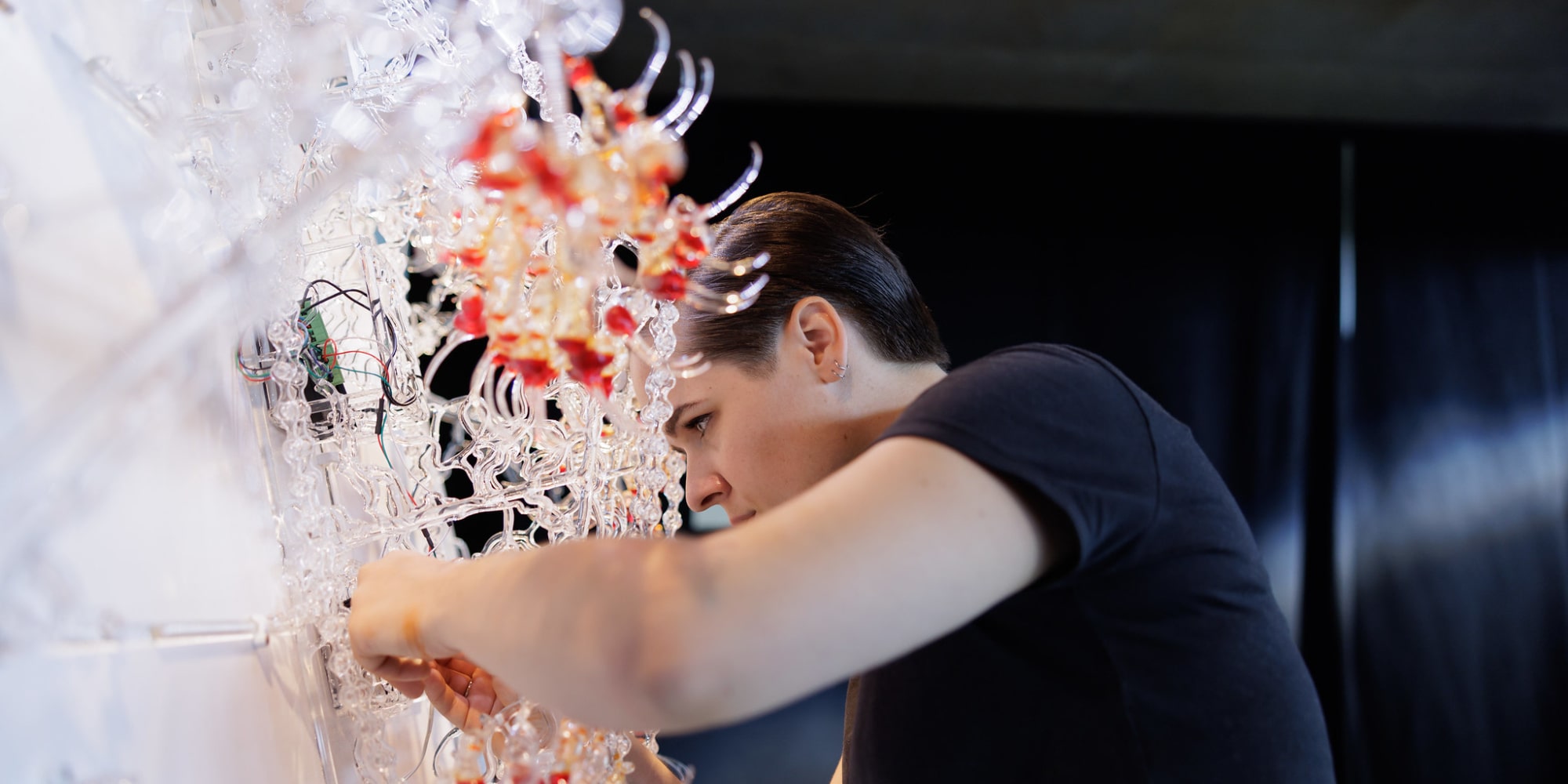


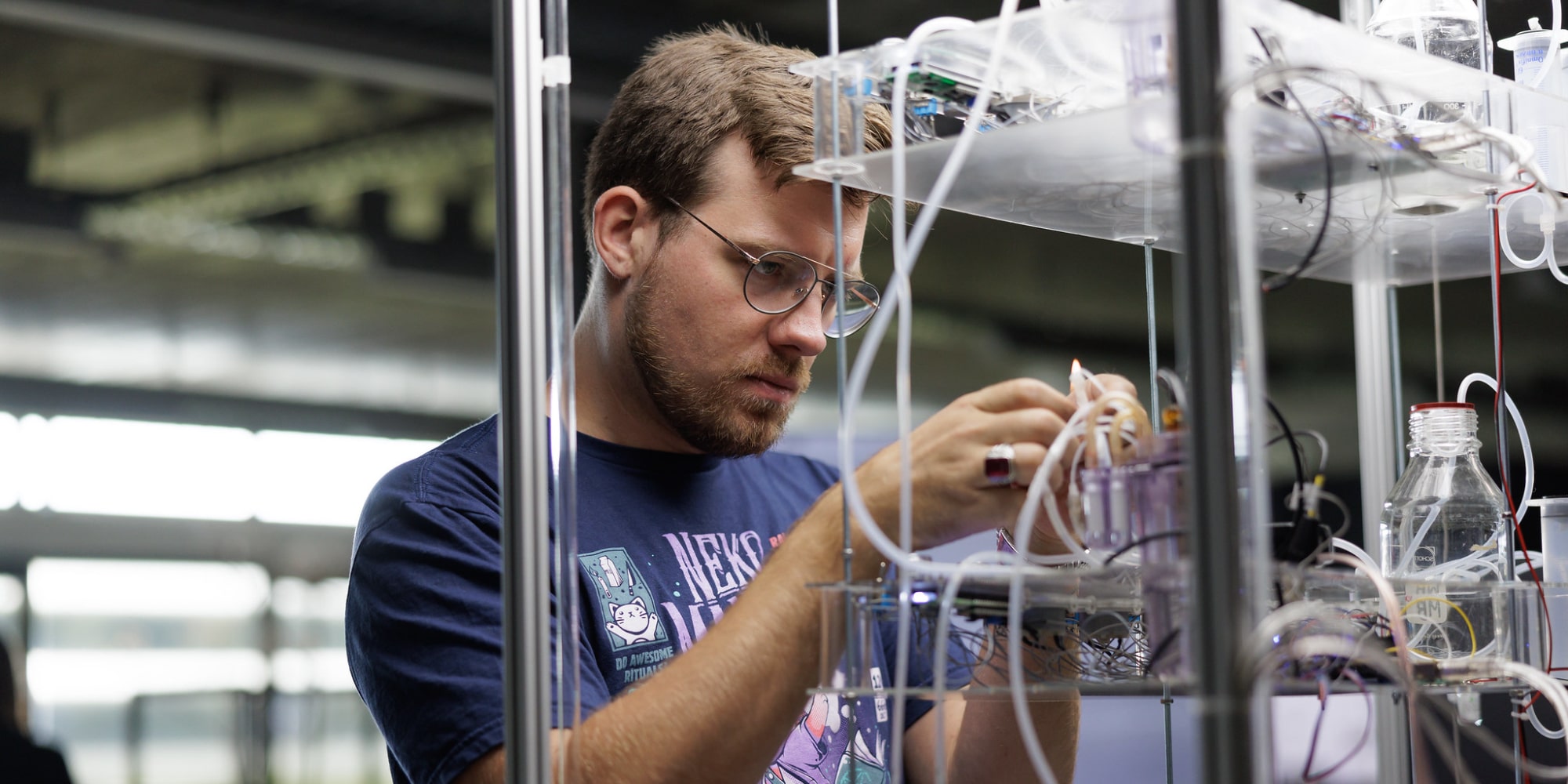
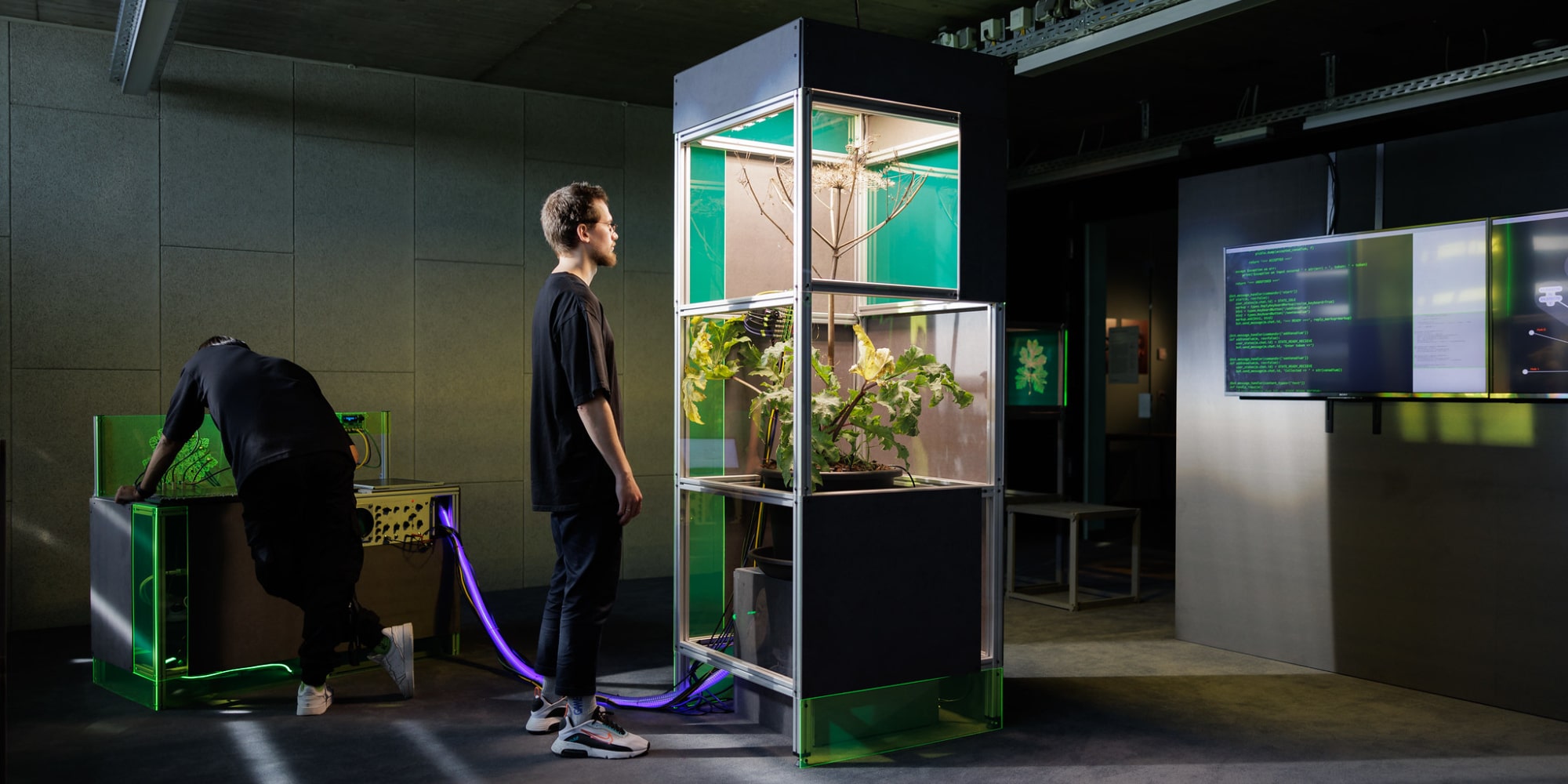
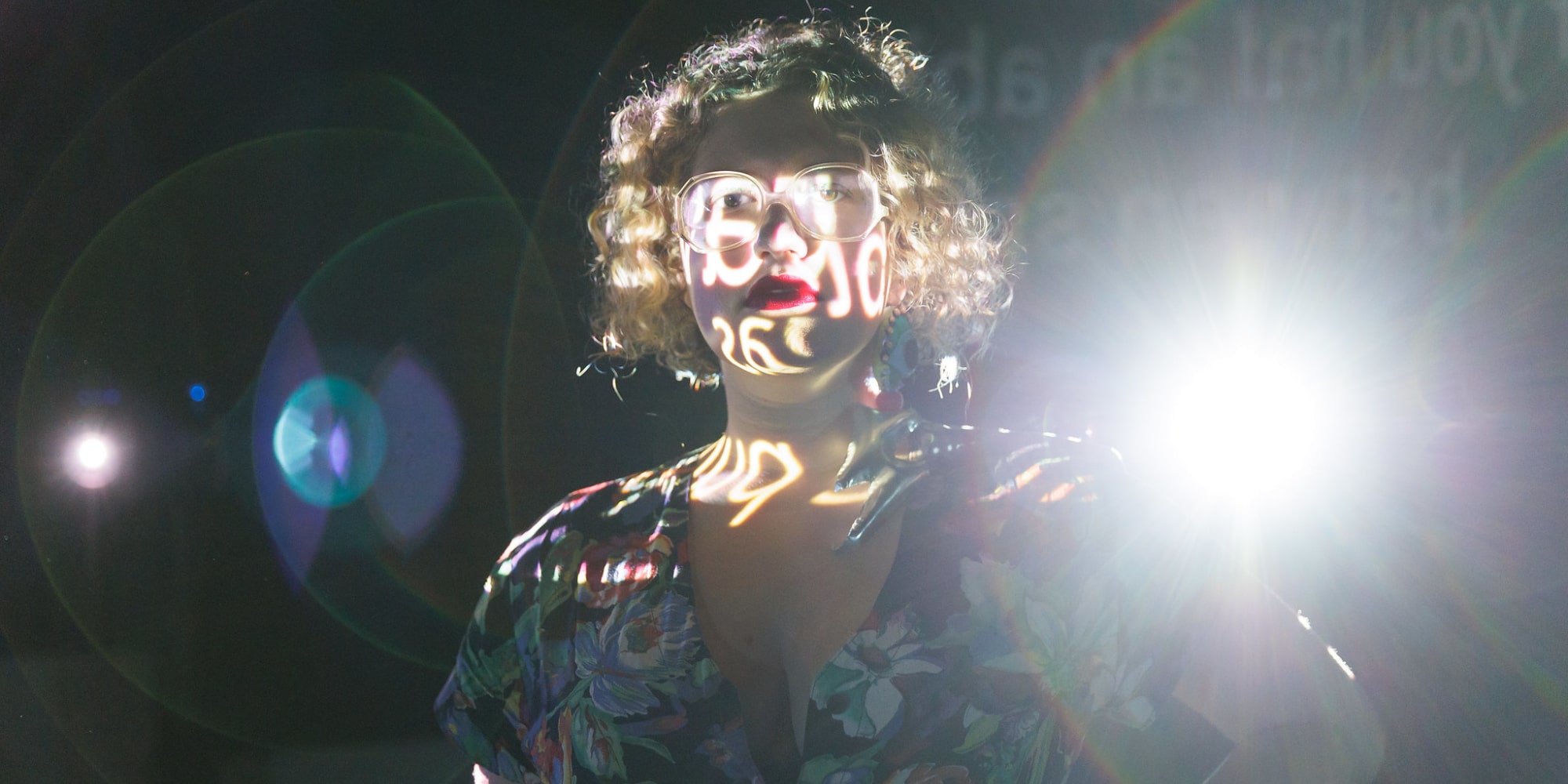
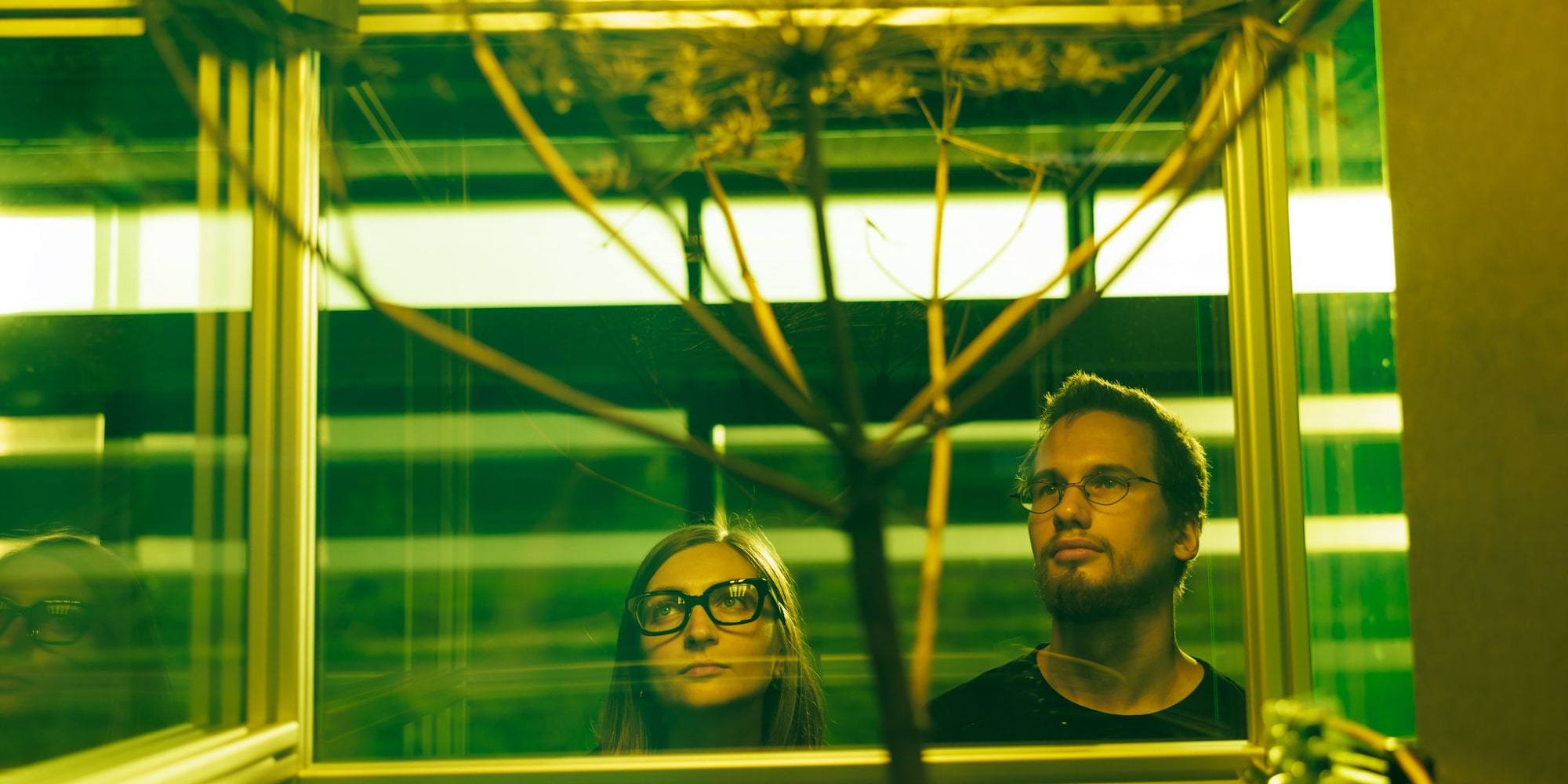
The Ars Electronica Gardens, introduced in 2020 and 2021 as a decentralized, hybrid communications experiment and, so to speak, “correspondence sites” of Ars Electronica, showed this year on site in Linz what consequences global warming has around the globe and how people in Auckland, Barcelona, Bologna, the Bahamas, New York, Seoul, Tokyo, or Utrecht deal with those.
Exactly 2,338 artistic projects by artists from 88 countries were submitted to the Prix Ars Electronica 2022 – a small, extremely fine selection of which was shown at the CyberArts exhibition – presented this year for the first time by Ars Electronica itself. And with success! The rooms were among the most visited at the festival, and the quality and visual presentation of the works were convincing.

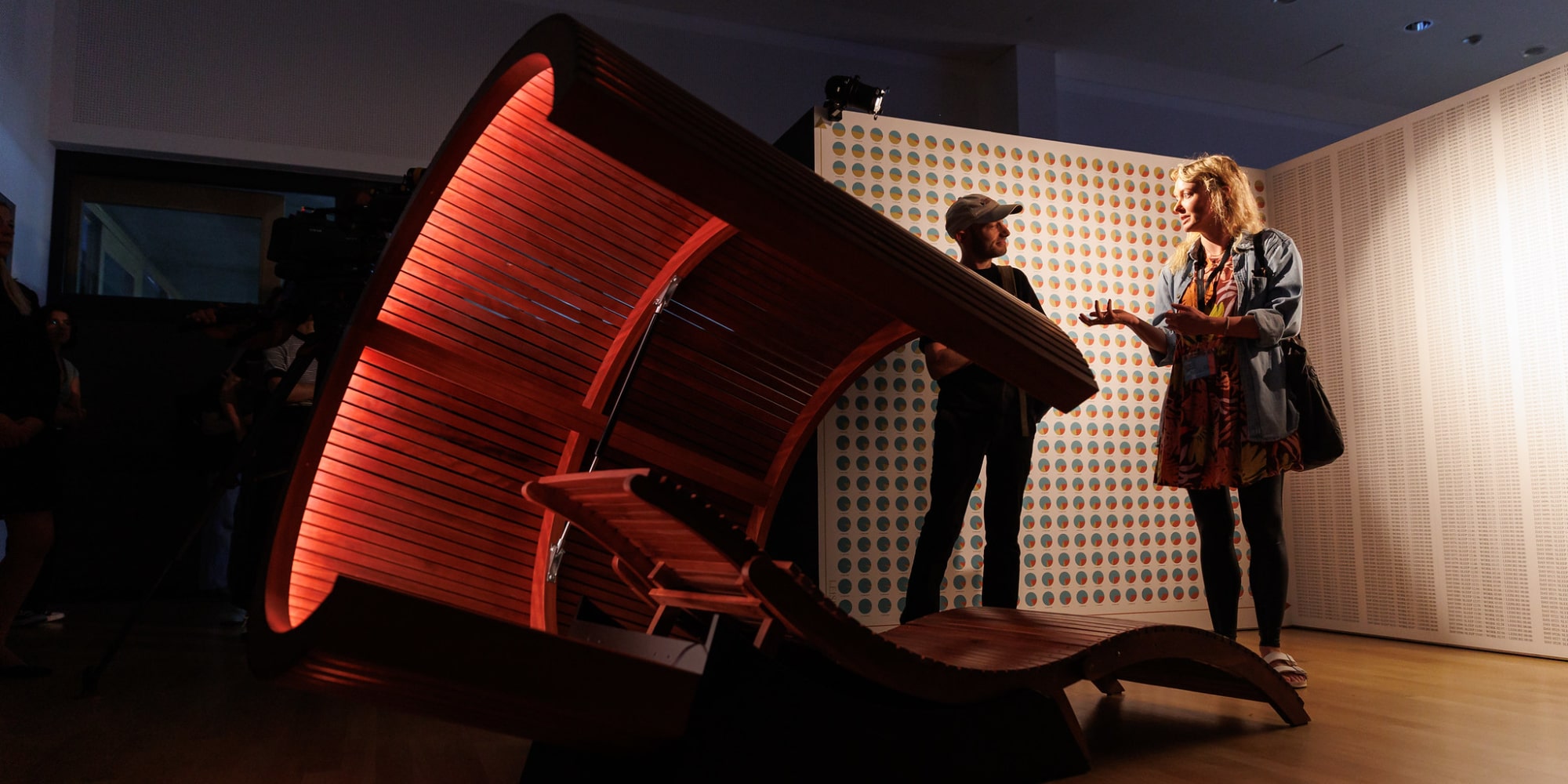


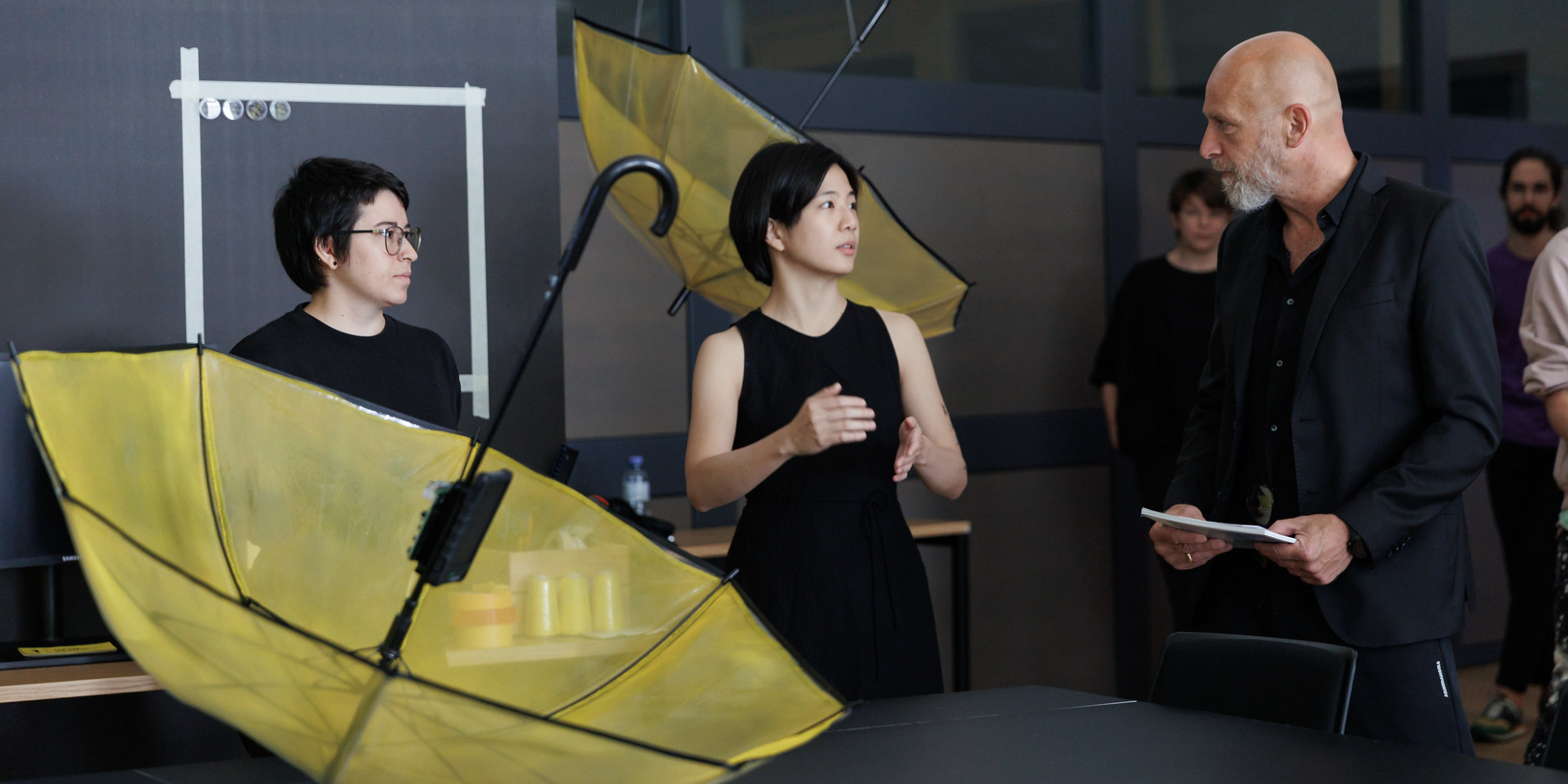
The exhibition for this year’s S+T+ARTS Prize of the European Commission showed what innovation in the 21st century should look like. Eleven projects at the intersection of science, technology and art were presented, which promise not only economic, but above all ecological and social benefits.

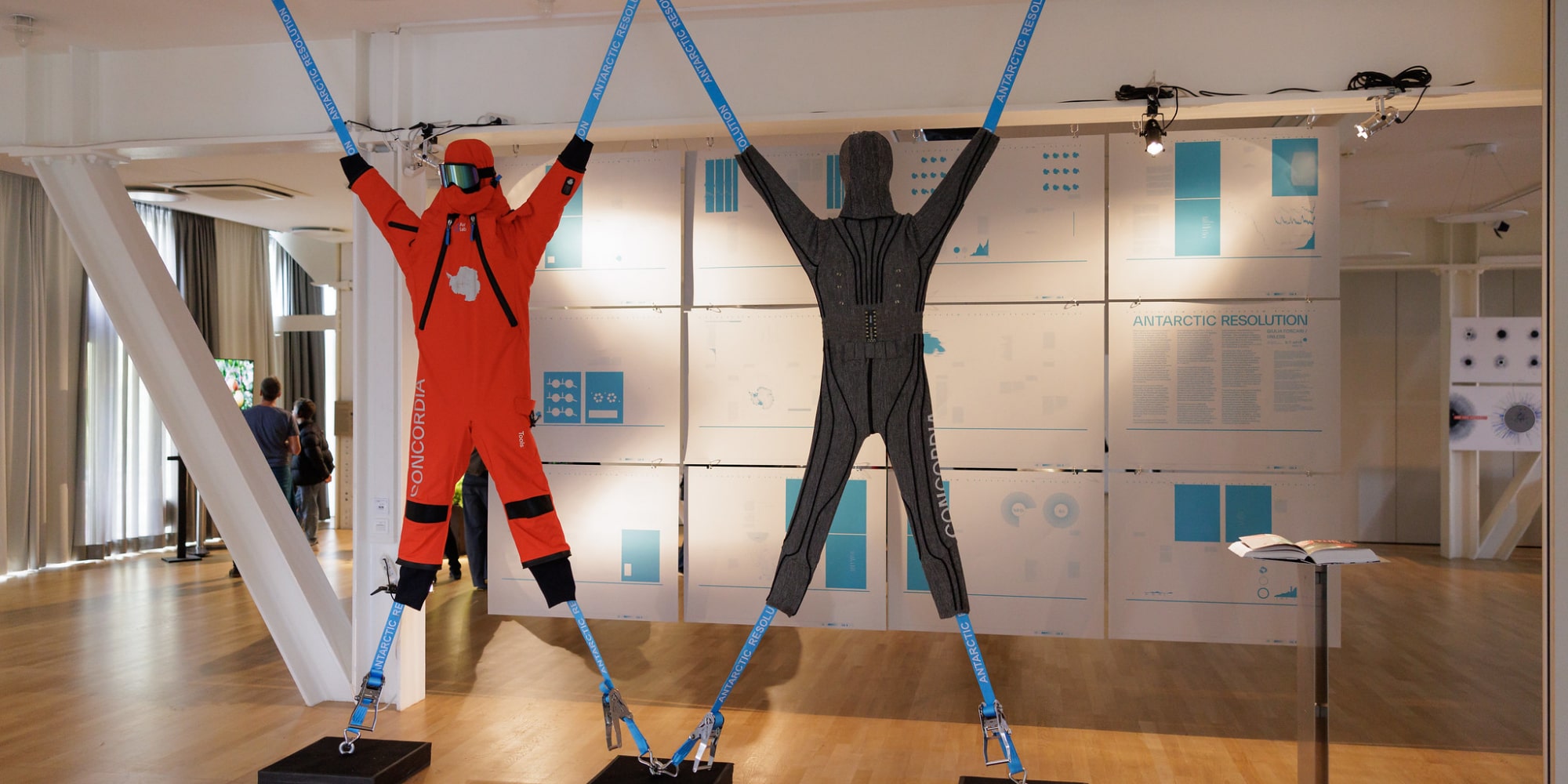

Interweaving art and science in a sustainable way, initiating an open transfer of knowledge and establishing a concept of technology that puts people at the center – these are the core concerns of the collaboration between the Linz Institute of Technology (LIT) and Ars Electronica. This became visible once again this year in the form of the exhibition that the LIT once again contributed to the festival. Themes included digital “black holes” whose algorithms unleash a gravitational pull that swallows up everything else, art no longer made for us humans but for the omnipresent technology, or a lance for the circular economy and inviting all visitors to creatively recycle plastic.

Because of its visual appeal, one of the most sought-after festival performances was undoubtedly the 4D Box, SH4D0W – An AI Performance in 3D: It is the first theater production in which an AI system plays the leading role. The piece by Mikael Fock (DK) is inspired by the wise scholar and his shadow in the fairy tale of the same name by H.C. Andersen. It focuses on the encounter between humans and their virtual shadow, which is represented by data-driven AI systems.
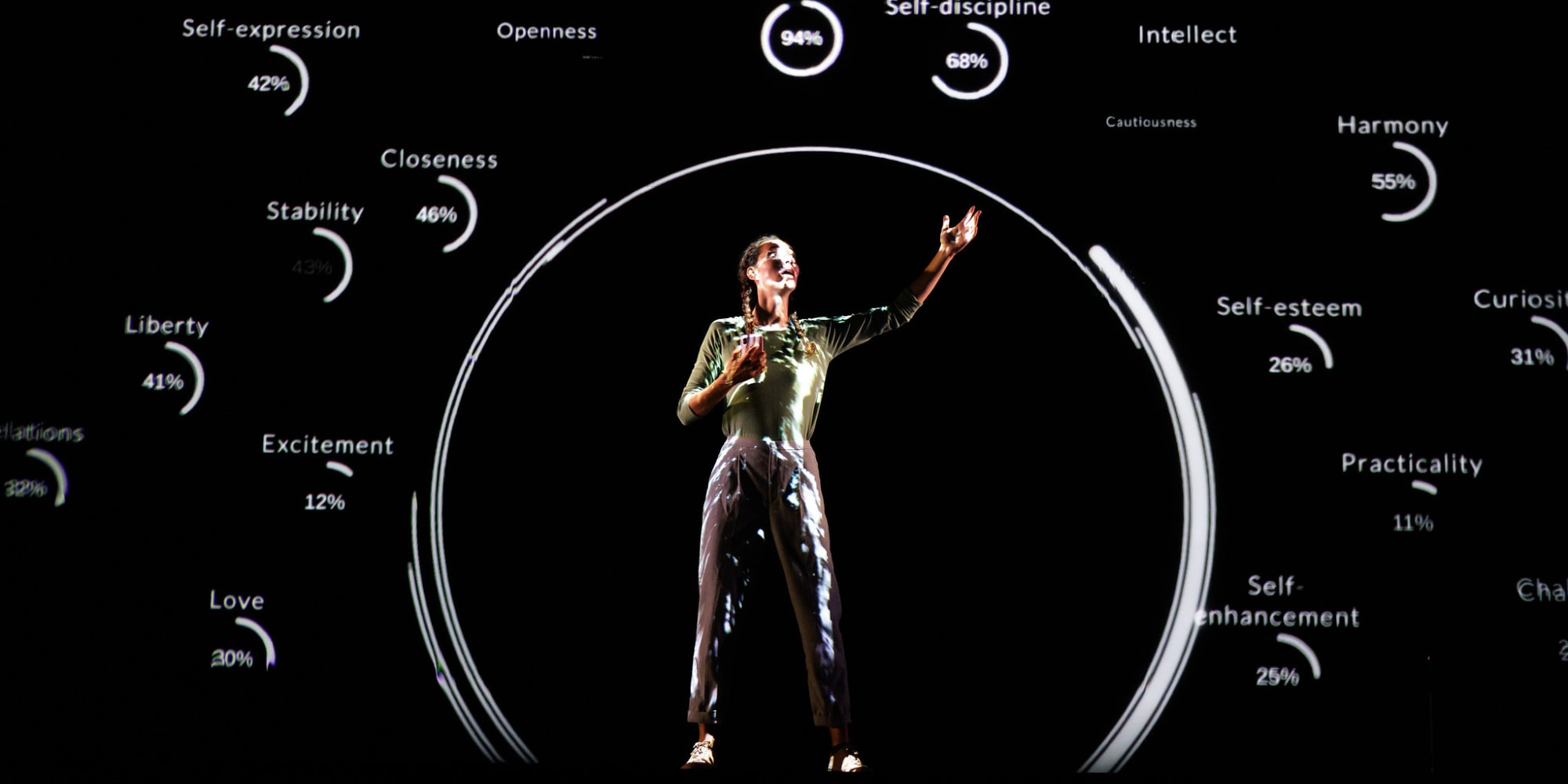

Not far from the 4D Box, visitors stumbled across a huge scaffold, which was also conquered by human and dog (!) at fixed performance times: Maja Smrekar’s !brute_force operated at the interface between robotics, artificial intelligence, humans and dogs.

And another performance, this time as part of the campus exhibition, inspired us greatly: Ballet Metanique by K-ARTS playfully pointed out the consequences of climate change and in the process once again made use of the connection between technology and art – or in this case, ballet.
And while we’re on the subject of the many unique performances, let’s not forget Kat Austen’s “This Land is Not Mine”, which captivated the audience on Wednesday to the point where they didn’t want to leave their seats in front of the Festival University Stage: With a homage to a landscape, consisting of sounds of everyday life like water or traffic and not least with her own presence, she enchanted her listeners.
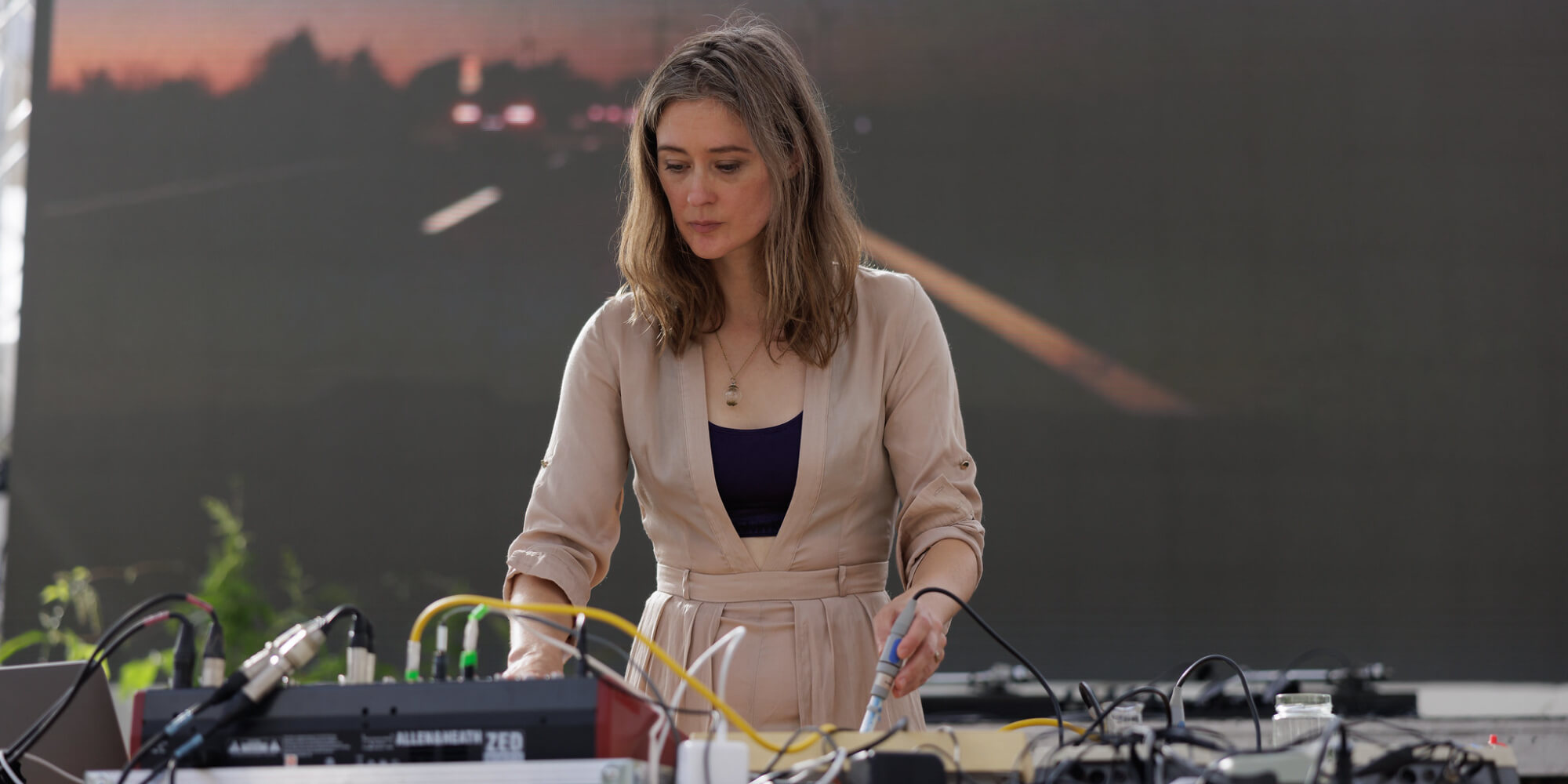
In the evening, the opening was on the program, the official opening, although we have already anticipated some of the program at this point. Karl Markovics and Julia Franz Richter read excerpts from two literary masterpieces by Stefan Zweig and told a saga about rise and fall, beginning and end. The oceans, so unfathomable and deep, served as projection surfaces for all our dreams, fears, cruelties and longings, were the scenes of our great deeds and achievements, but also victims of destruction, exploitation and extinction by us humans – illustrated, for example, by videos from Sea Shephard and amplified by the voice of Stuart Freeman, known from FM4.



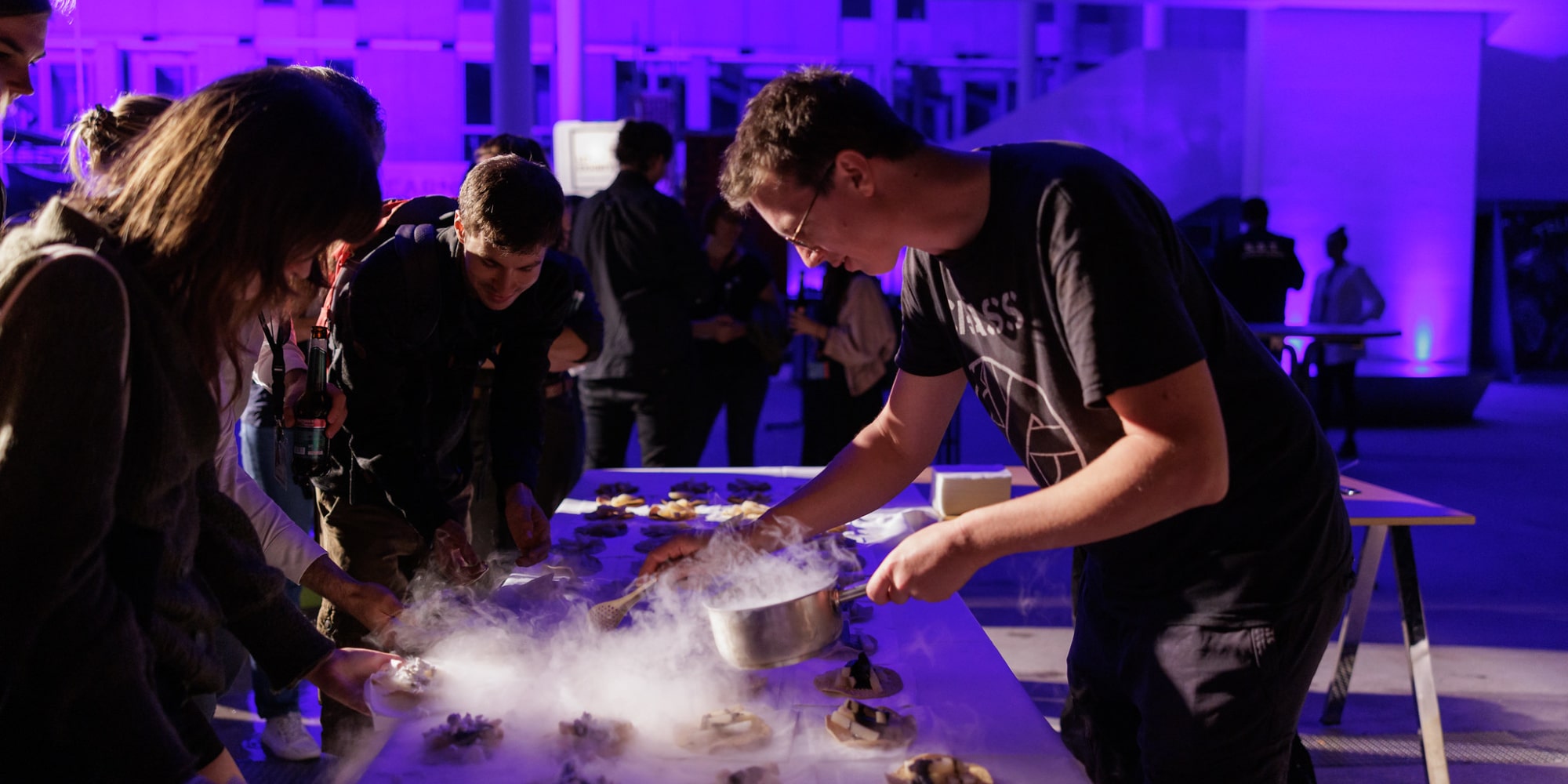
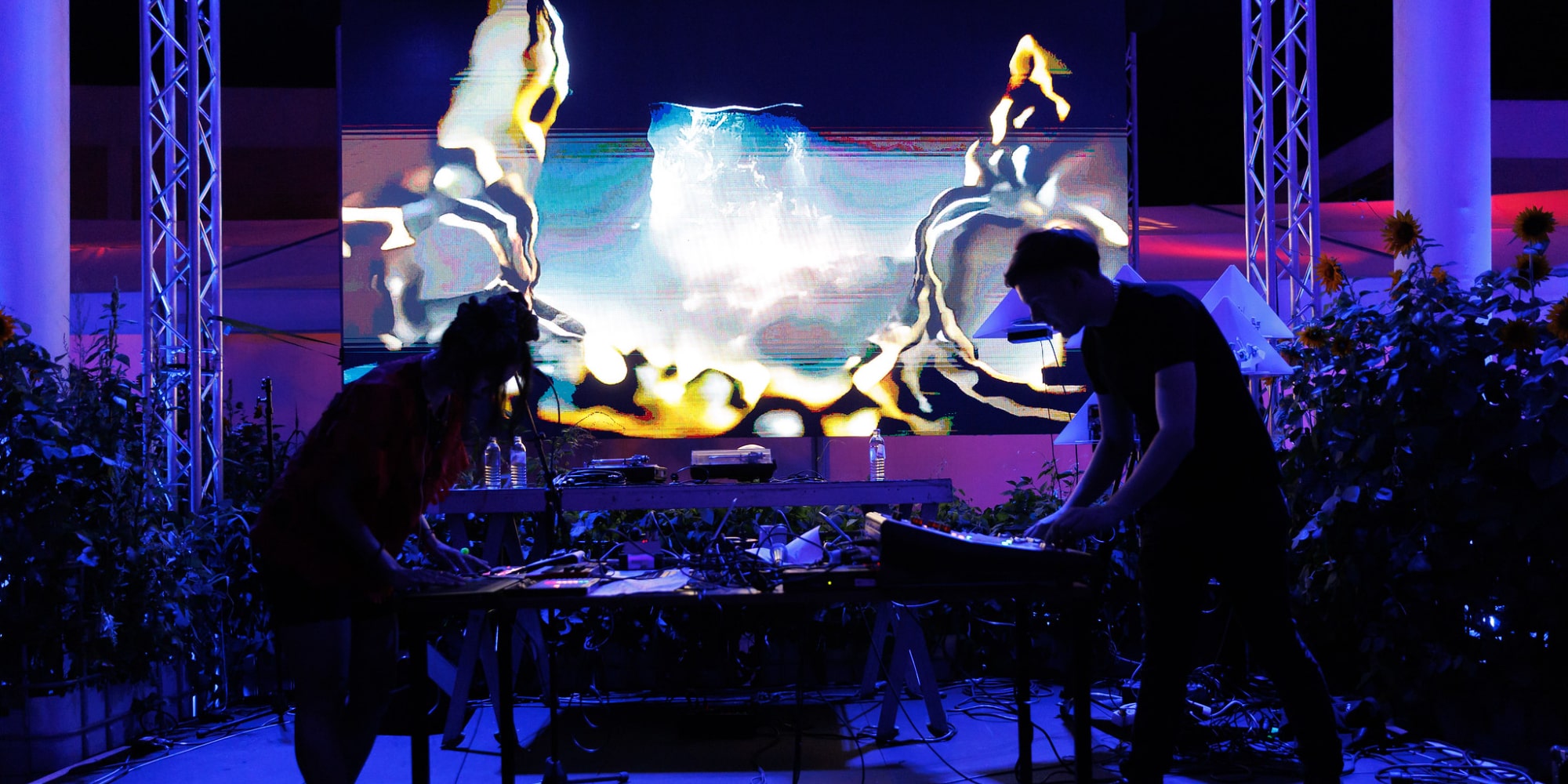
The atmosphere became really depressing when Selina Neirok Leem, activist and artist of the Marshall Islands, entered the stage and gave an emotional speech describing how water is already up to her and her compatriots’ necks – literally! All in all, the entire evening had a poetic as well as stirringly shocking message: we humans have used up the resources of the world, of the ocean, and there is no more time to think – we must now steer in a different direction because the water is up to our necks. In the end, however, there was also the optimistic message of the Festival University Students, who clapped with the audience to “We will save the planet” and thus to rescuing the earth.
Thursday, September 8, or: The Futurelab Day
How can creativity, art and technology help us cope with the ever-present crises, overcome the challenges that lie ahead and shape a different, positive future? Under the motto “Creative Resilience for a Planet B,” the Ars Electronica Futurelab hosted an entire day of “round tables,” workshops and immersive presentations, all of which focused on the future. The Linz-based think tank’s artists, researchers and developers were there, as were many of their colleagues and research partners from around the world.
As representatives of industry, experts such as Adrian van Hoodydonk (Senior Vice President BMW Group Design (NL)), Gianpaolo Barozzi (Cisco People Experience Global Lead (IT)) and Nobuyuki Oishi (Sr. Producer, Digital Business in Nikkei Inc. (JP)) were present. Perspectives from art and science were provided by Martina Mara (Professor of Robopsychology at Johannes Kepler University Linz (AT)), Hiroshi Ishiguru (PhD Professor at the Graduate School of Engineering Science of Osaka University and Director of Hiroshi Ishiguro Laboratories (JP)), Natalia Rivera (TW) and Jung Hsu (US) (both from “Bi0film. net: Resist like bacteria”) or Yuima Nakazato (fashion designer and founder of Yuima Nakazato Co, Ltd (JP)).
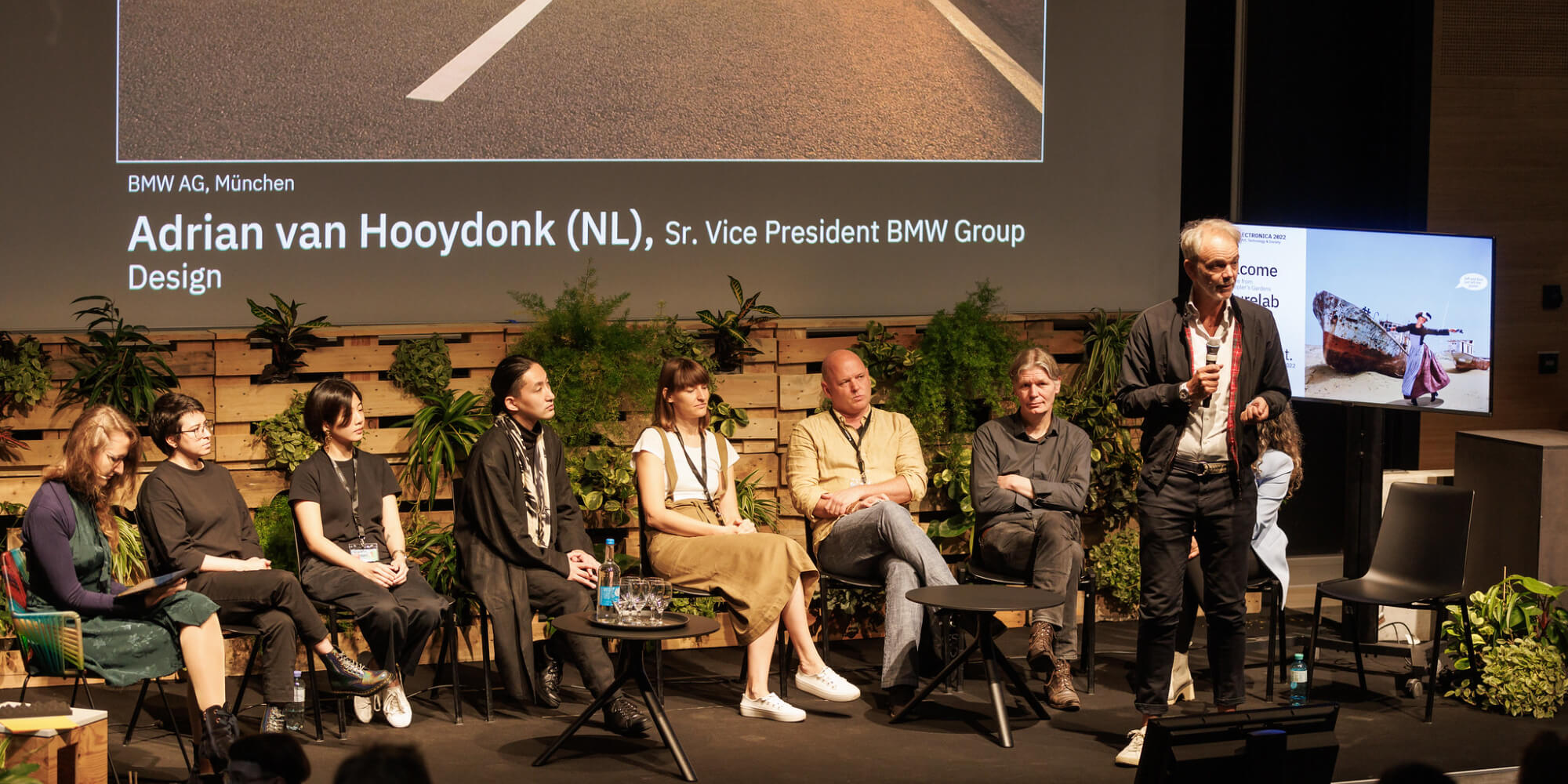
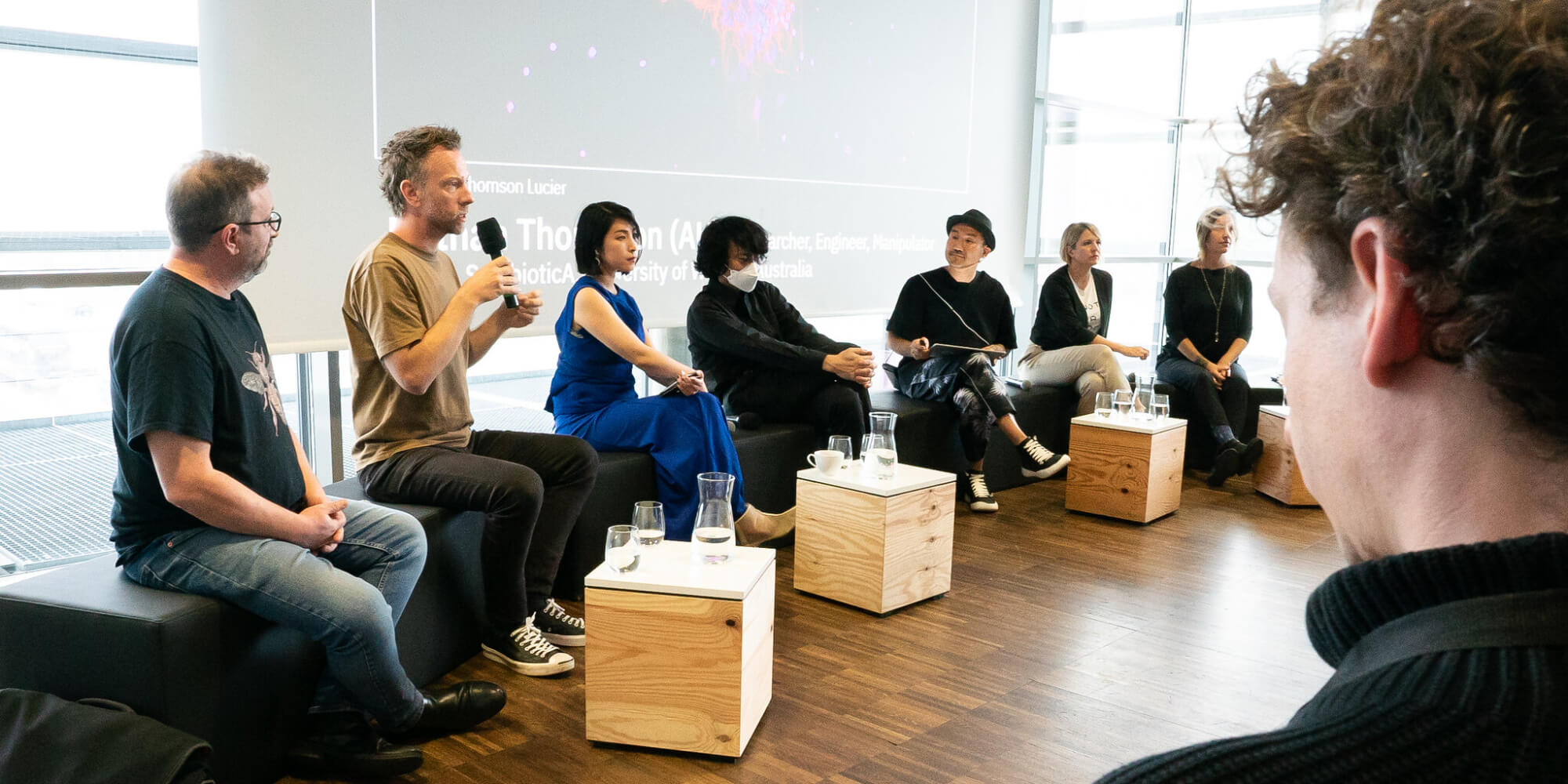
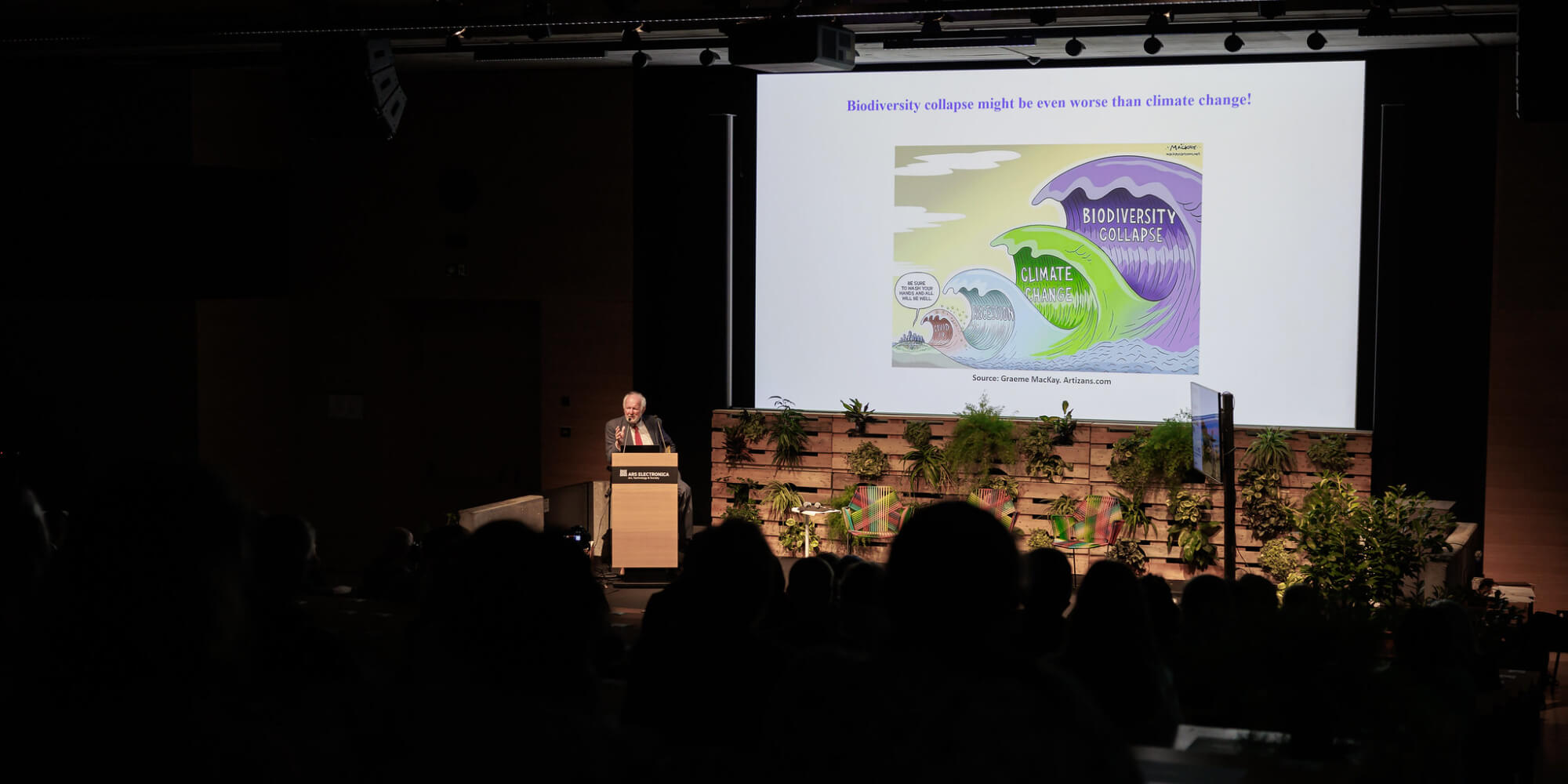


In any case, a highlight was the captivating lecture by Ernst Ulrich von Weizsäcker (scientist, author and politician (DE)), who presented the latest report of the Club of Rome and gave the audience a core message: “If growth means destruction, it is a big mistake!”
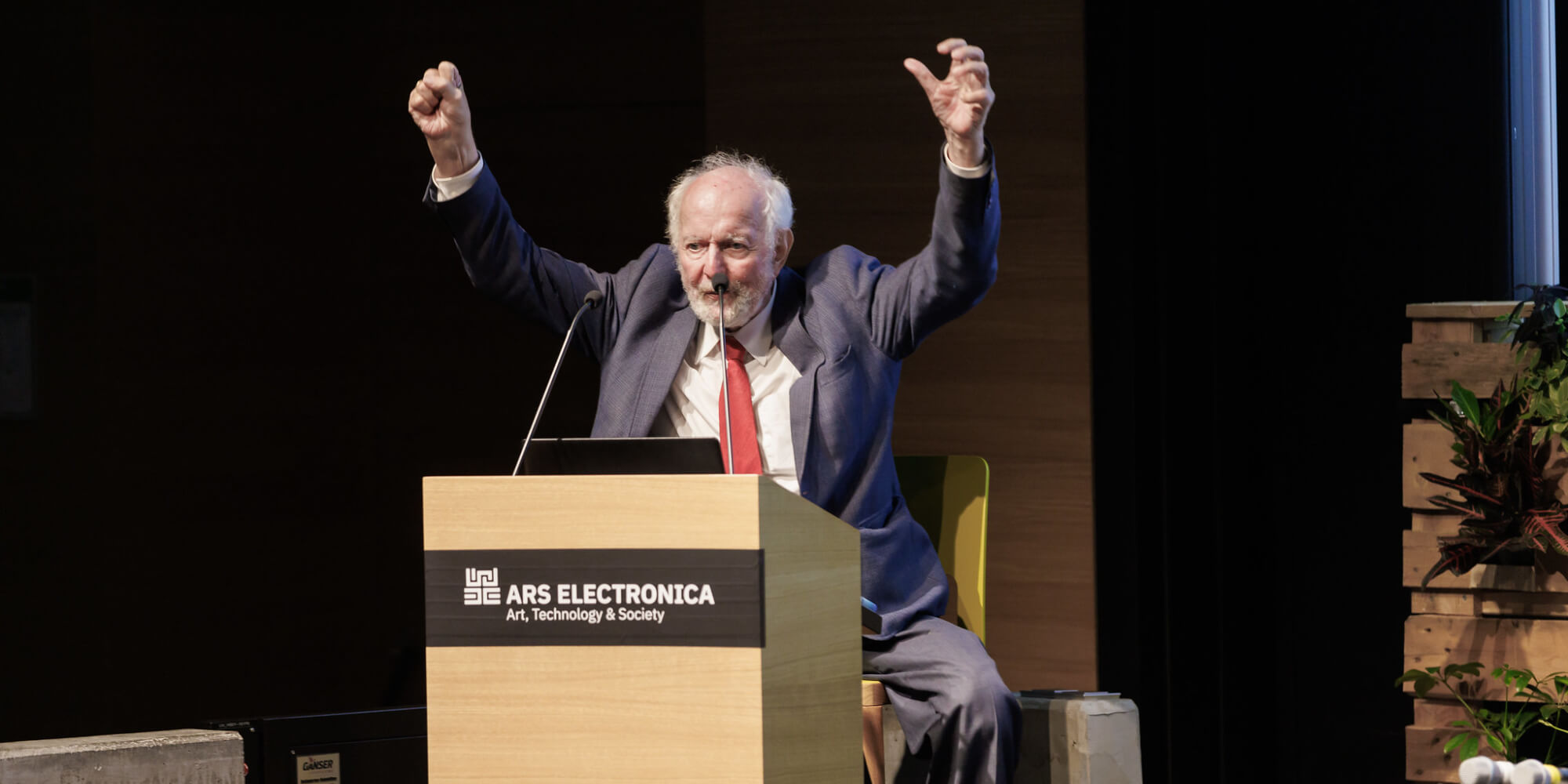
In the evening, there were the Night Performances in Deep Space 8K, to which all festival visitors were warmly invited. Concerts, presentations and performances were marked by the very special desire for experimentation that characterizes Futurelab. The packed Deep Space 8K proved them right to continue on their path with the involvement of the public.
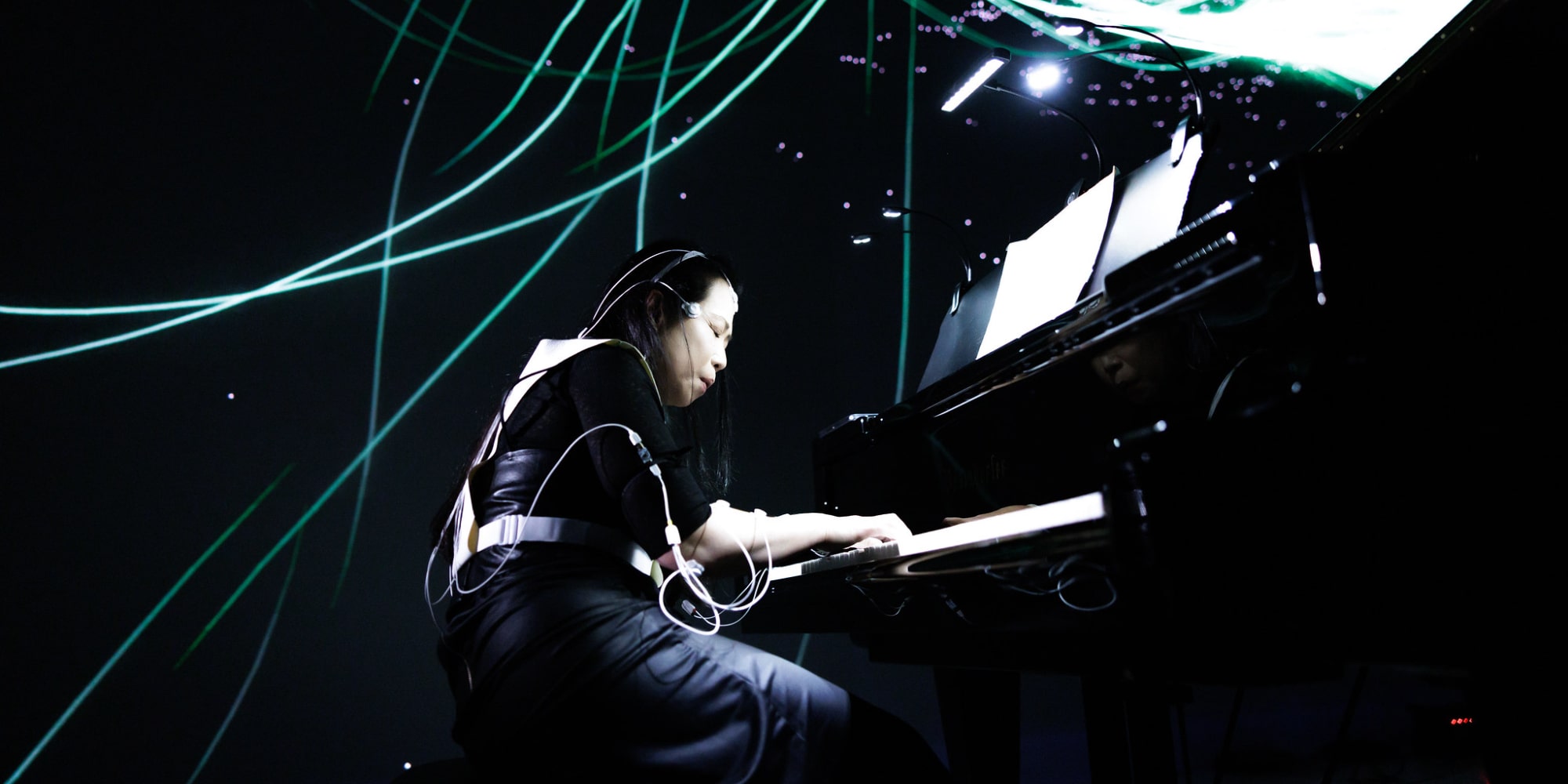
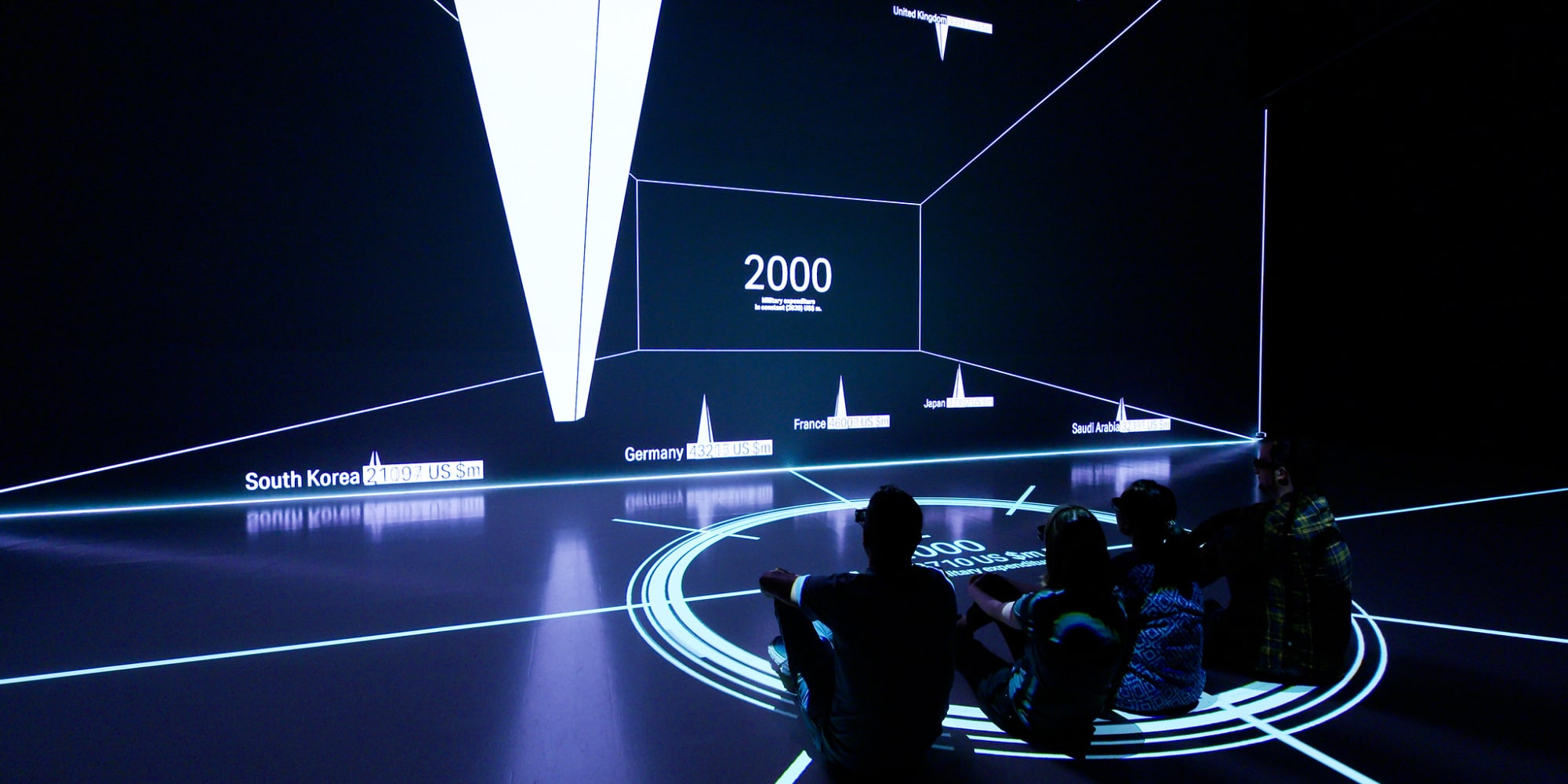
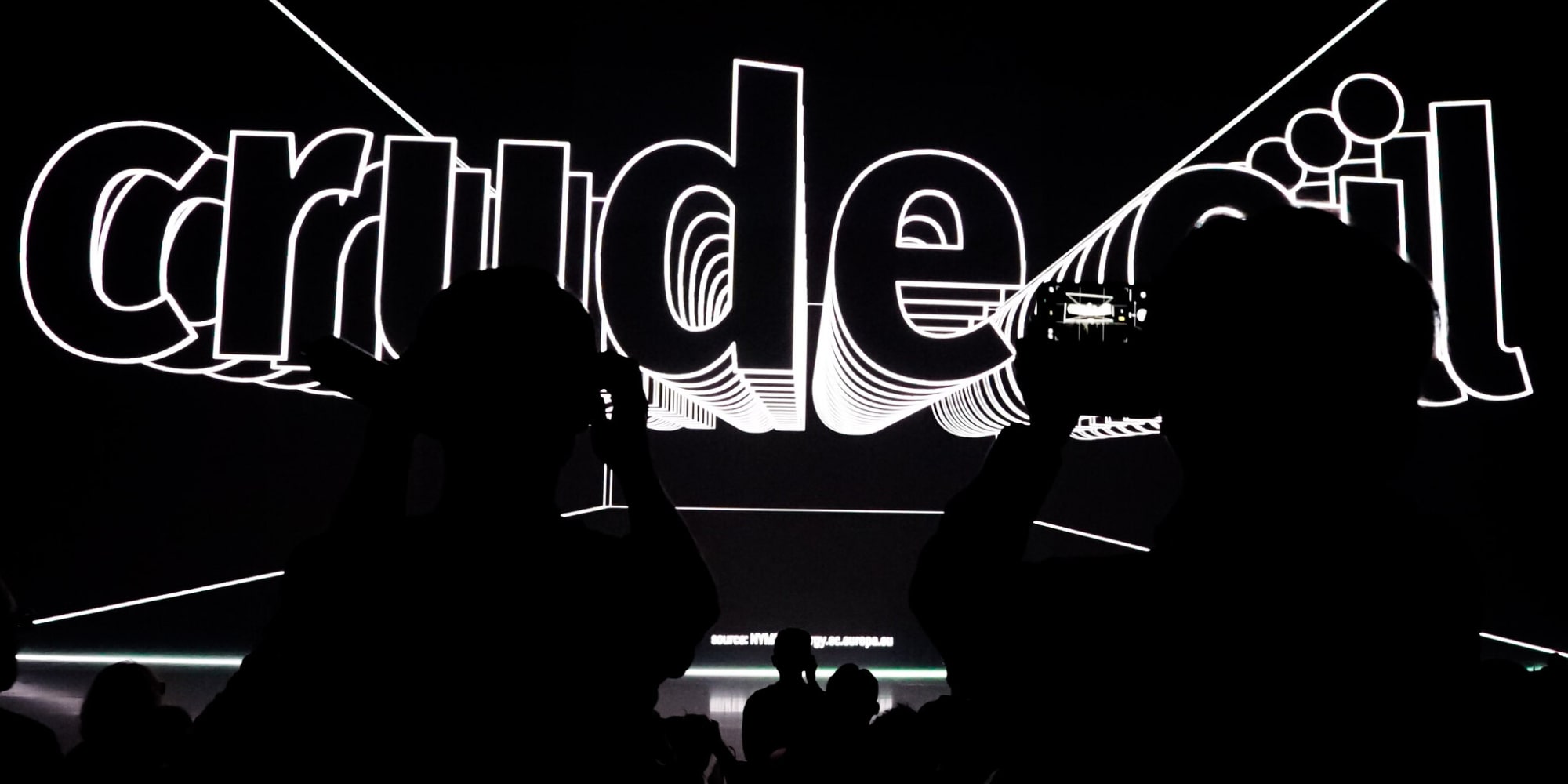
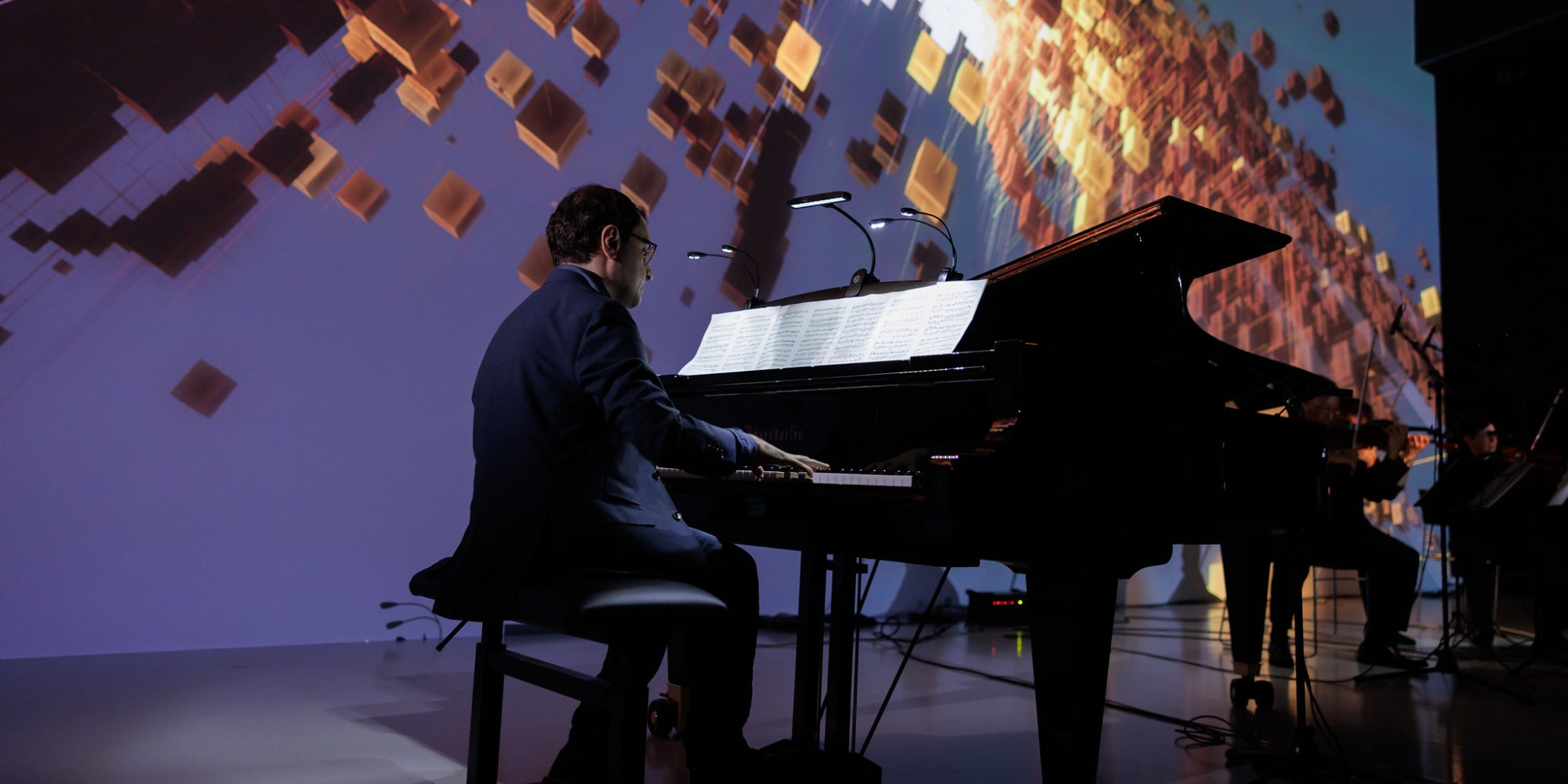
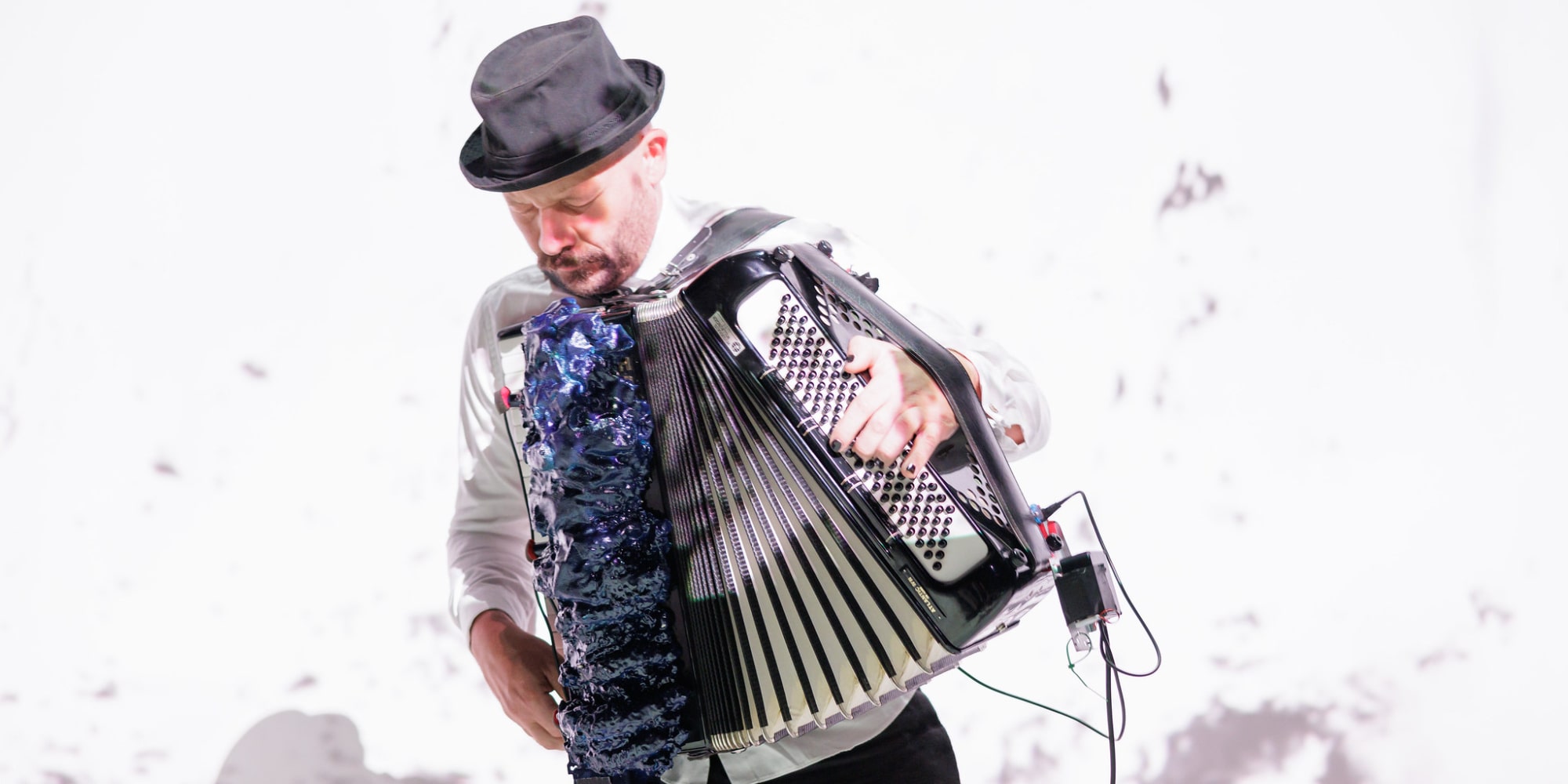
But let’s take a brief look back at a few other program items that took place simultaneously with Futurelab Day, such as a diverse workshop program: Kat Austen and Fara Peluso, for example, spoke about bioplastics in “Dive into Plastic”. The interest was so big that an extra table had to be brought in for the numerous participants. Or the workshop Water in (post)Anthropocene, where water samples from the Danube were taken and analyzed together with the visitors.
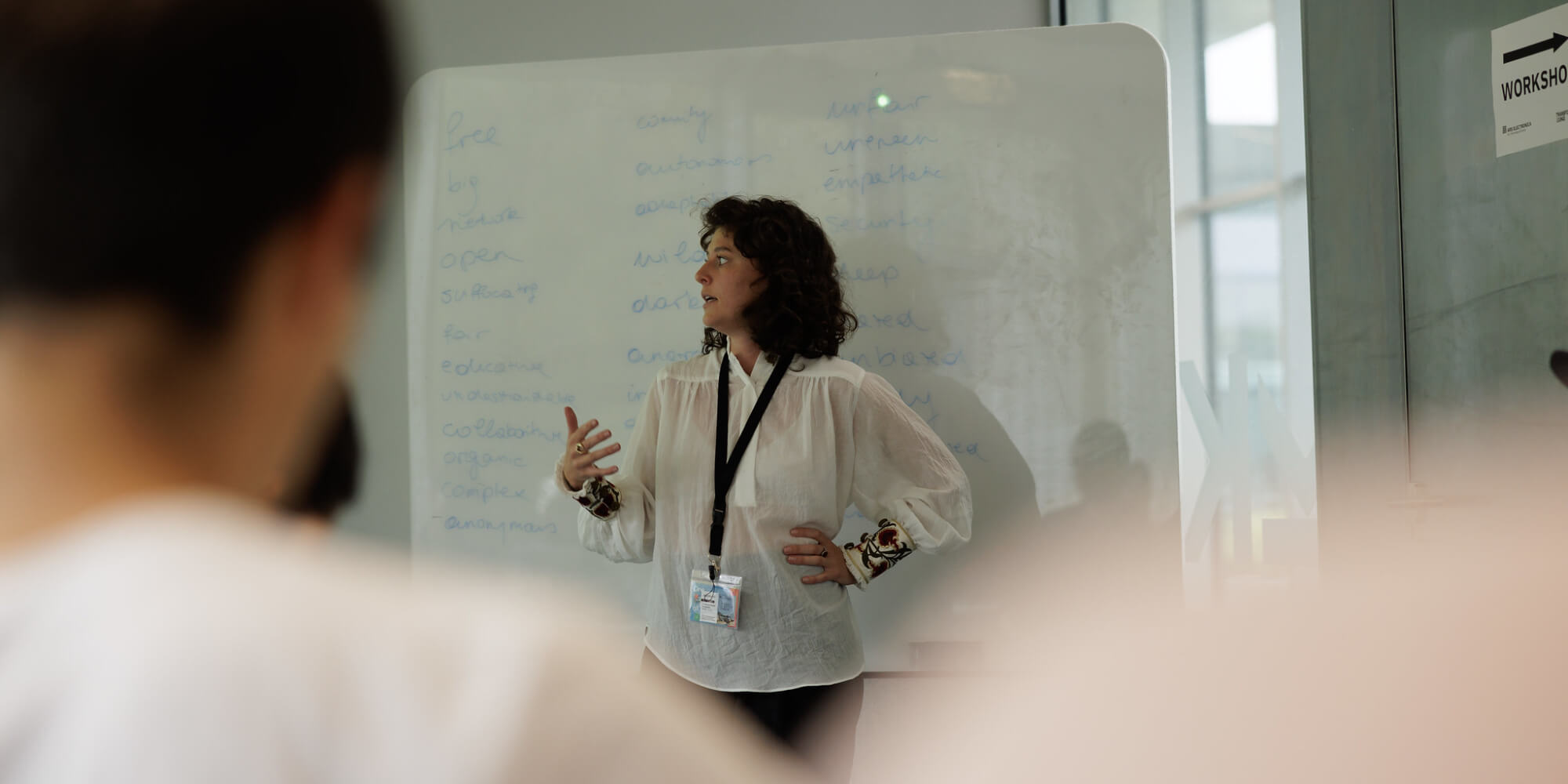


In Kepler’s Garden in the Circus of Knowledge, another concert was scheduled for the evening, a collaborative project between the Circus of Knowledge and Ars Electronica: Lullaby for Mariupol. The piece, created especially for the Circus of Knowledge and the Ars Electronica Festival 2022, featured rare recordings of Mariupol mosaics from the 6th and 7th centuries, most of which were destroyed during the March 2022 siege of the city by Russian forces. A very stirring and emotional performance with microtonal string instruments, live video and choir.

Let’s stay in Ukraine. 357 submissions from 40 countries were received for the State of the Art(ist) open call that Ars Electronica and the Austrian Federal Ministry for International and European Affairs launched this summer in response to the Russian invasion of Ukraine. It was a worldwide open call addressed to all artists who are threatened, arrested or persecuted because of the political dimension of their works. Björn Geldhof, artistic director of PinchukArtCentre in Kiev, Boris Magrini, curator at HEK in Basel and Marita Muukkonen, co-founder and co-director of Artists at Risk, reviewed all 357 submissions and selected eleven that reflect the “State of the ART(ist)” 2022 and were shown in a virtual art gallery since August 23. Some of the artists also came to Ars Electronica and have told us here what they’re standing up for and why they’re unwilling to give up their resistance despite even the greatest danger to life and limb.
Friday, September 9, or: The S+T+ARTS Day
Science, Technology and Arts form the content and name-giving triangle of the S+T+ARTS initiative of the European Commission. The aim is to promote contemporary innovations in and for Europe. The S+T+ARTS Prize is a high-profile instrument for bringing best practice examples to the forefront, and the S+T+ARTS Day is an annual format that serves as a forum for network partners from all over Europe. The day-long program included lectures, panel discussions, guided tours and workshops.

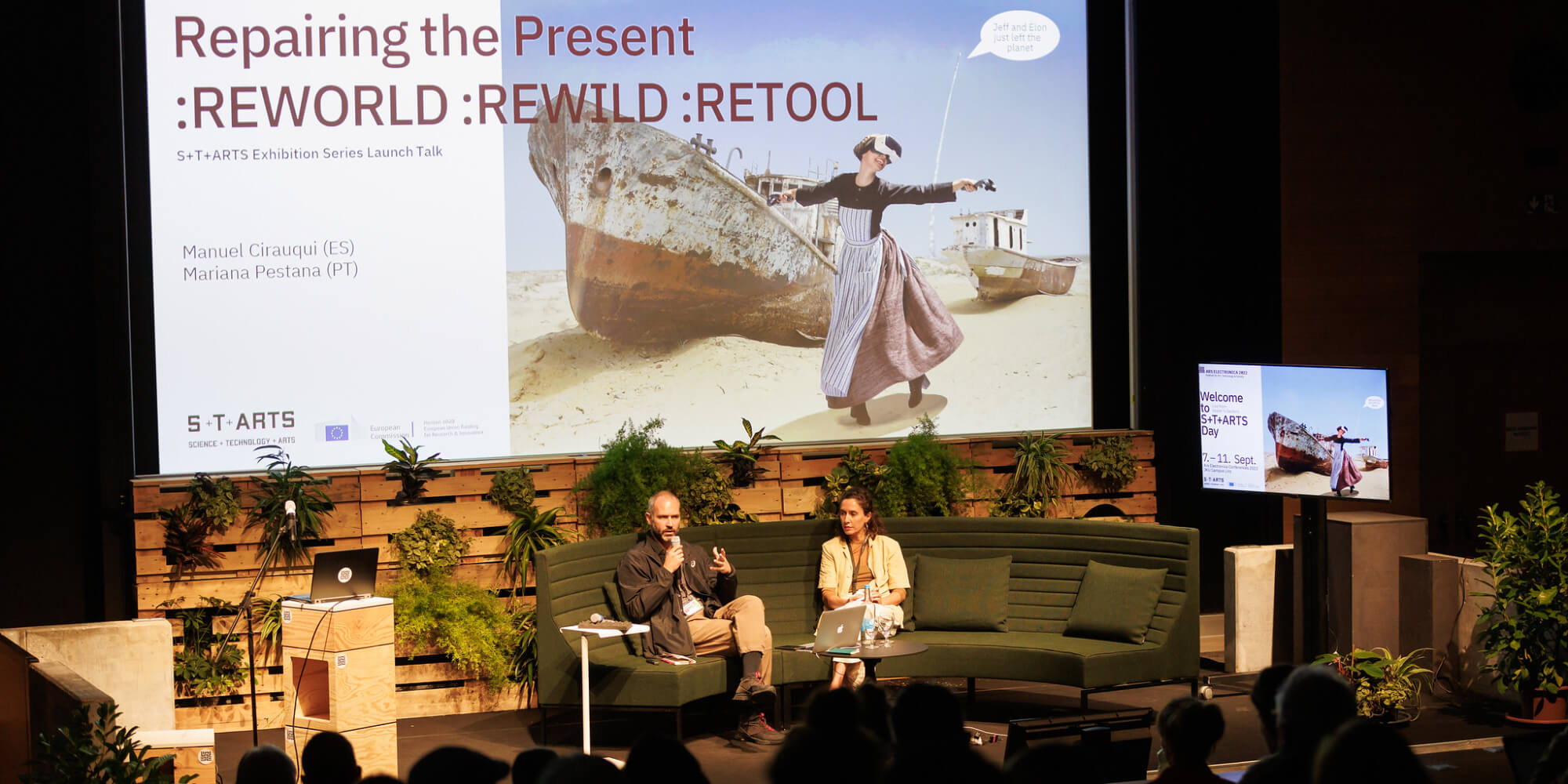
Once again, 24-year-old activist and artist Selina Neirok Leem was painfully inspiring, punctuating her talk about the Marshall Islands as a symbol of the climate crisis with many personal images, such as a cemetery being destroyed by the rising ocean.
After STARTS Prize winners Guilia Foscari and Holly Herndon and Mat Dryherst, the first person to take the stage at this year’s Ars Electronica was someone who captivated the audience from the very first sentences-and didn’t even need images, sound or other background music to do it: Laurie Anderson, Ars Electronica’s Visionary Pioneer of Media Arts, had the packed Auditorium 1 at JKU hanging on her every word.
Since 2003, Ars Electronica and the Bruckner Orchester Linz have been experimenting with all kinds of unusual bridge-building between analog and digital, between the music of the past and the sounds of the present, between art and science. In 2022, the joint project presented itself – once again – in a completely different way: ensembles and soloists of the Bruckner Orchester Linz, together with their artistic director Norbert Trawöger, put together a three-hour program that created Chamber Musical Paths through Kepler’s Gardens. The musicians played under the open sky and wandered between pieces, styles and epochs. Last but not least, the atmosphere and the location itself formed part of the program and made up the charm of what was performed, as for example at the Somnium, which was a unique acoustic experience.


Now, we’ re jumping into Deep Space 8K at the Ars Electronica Center: As part of the festival, the immersive space became the setting for a tête-à-tête with the high-resolution Mona Lisa (The Mona Lisa / Vincent Delieuvin (FR), Christelle Terrier (FR), Roei Amit (FR)). Frescoes from the Sistine Chapel were staged on a giant scale as well, offering insights into the work and life of the great Pietro Perugino with an introduction by the director of the Vatican Museum herself. (Gigapixel Images from the Vatican Museums – The Frescoes by Pietro Perugino in the Sistine Chapel: Beauty Leading to Faith / Dr. Barbara Jatta (IT), Dr. Rosanna Di Pinto (IT)).
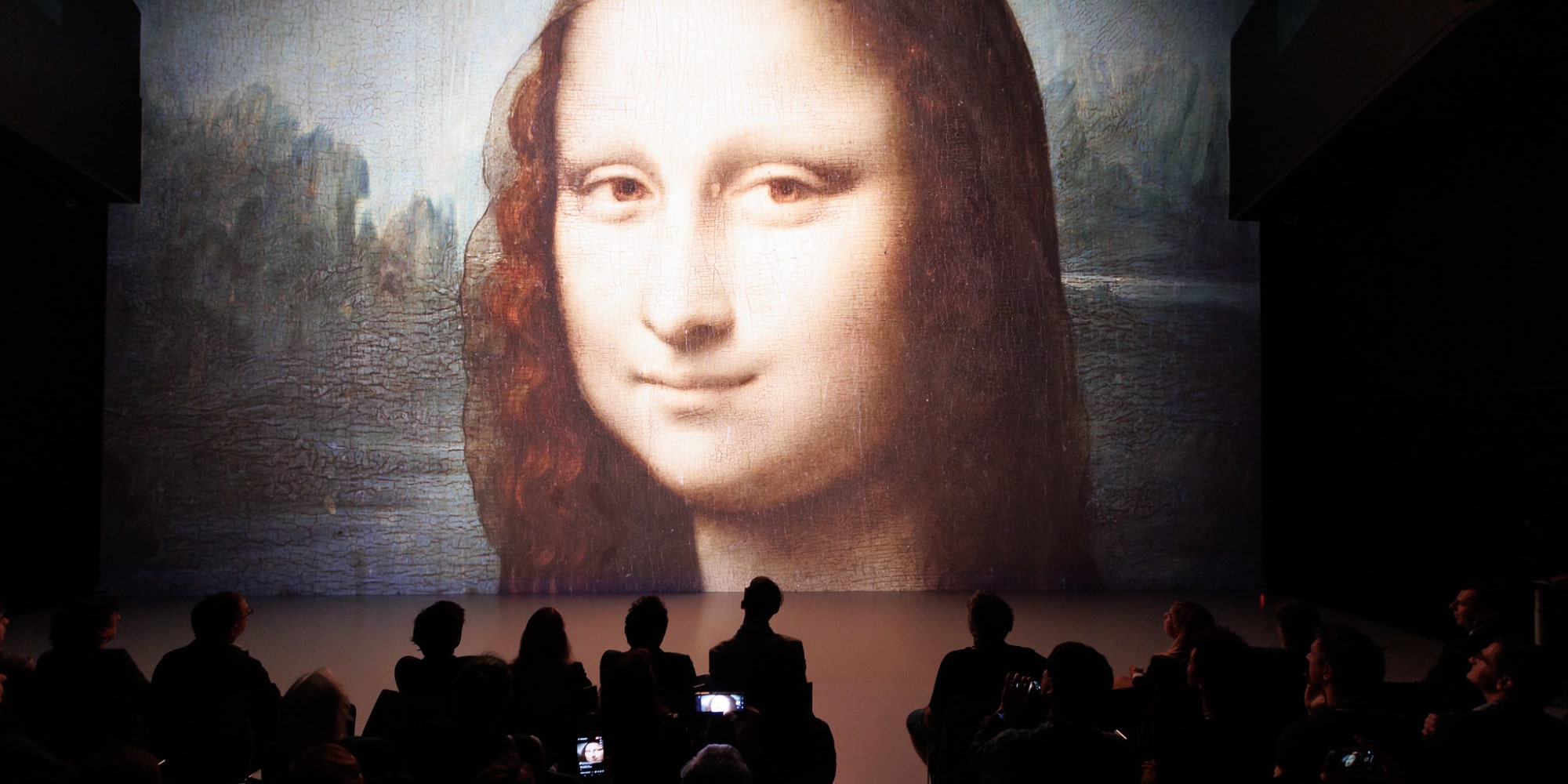
We would like to introduce two special collaborative projects that were also shown at Deep Space 8K:
Taiwan is an island full of digital and humanistic expertise, a unique ecosystem where all actors – from technology producers to content creators – can be found in one place. As part of a Taiwan special, the Taiwan Creative Content Agency (TAICCA) presented Taiwanese artworks in an immersive collection. An introduction to the project was followed by the presentation of Project %, Blue Tears and Sandbox. The Deep Space provided an ideal stage for the works as one was drawn into the works and the story being told.
The VH AWARD recognizes and supports emerging artists who have contextually engaged with Asia. The award encourages artists who push the boundaries of audiovisual arts and challenge our understanding of the past, present and future. The works shown were rather serious, the mood in Deep Space somber and moving.
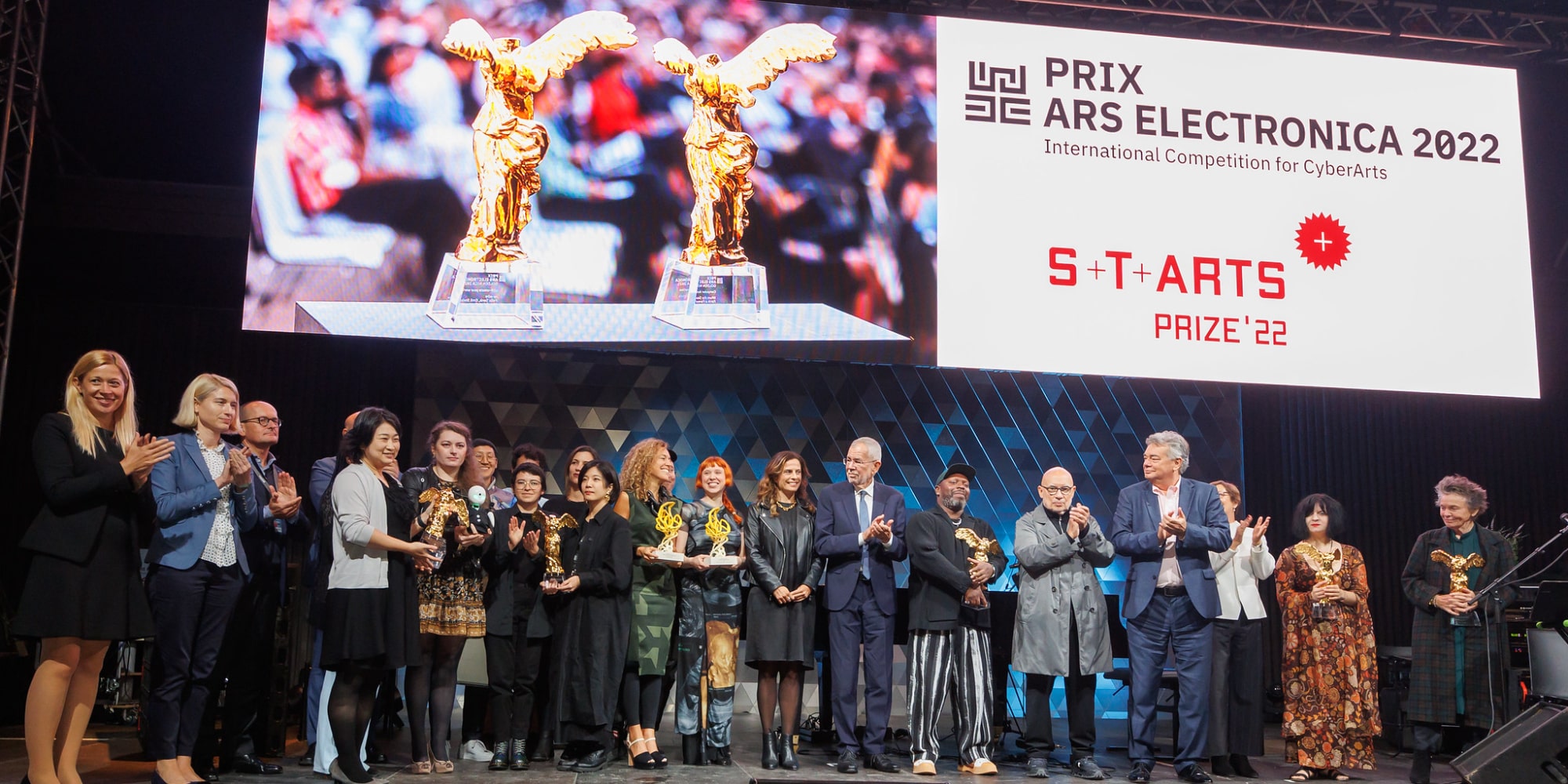


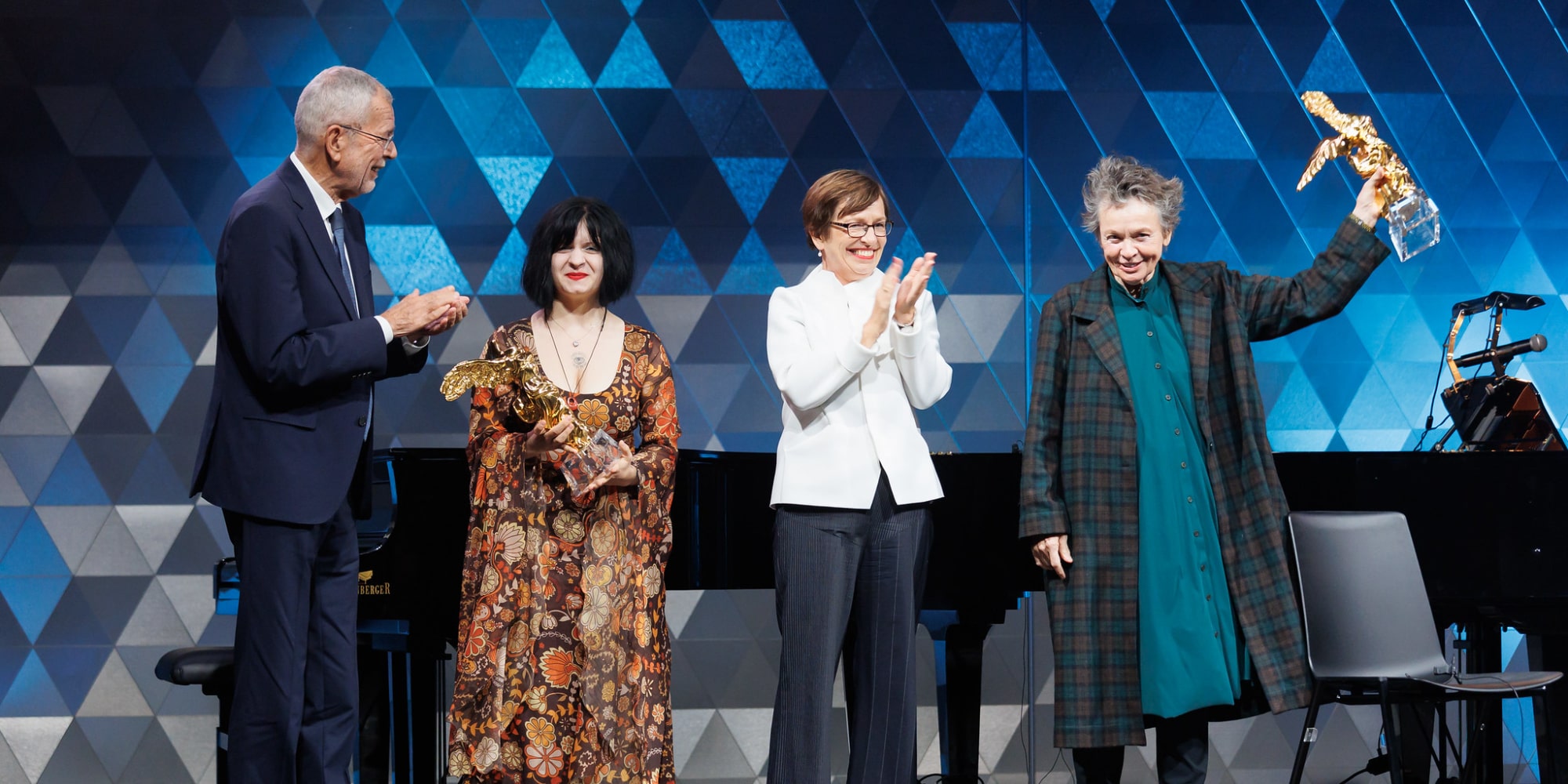
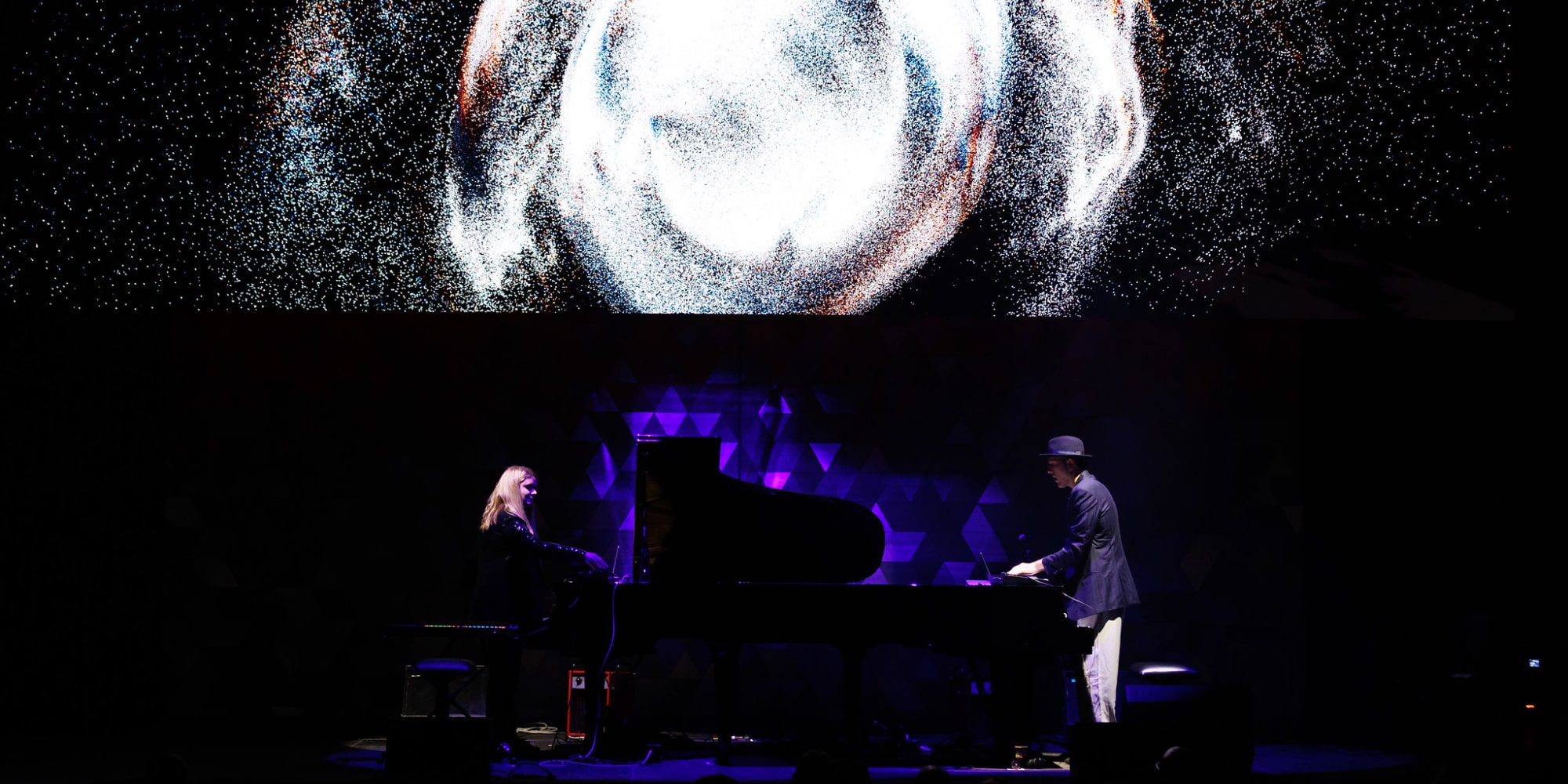
Back again in Kepler’s Garden: In the evening, the winners of the Prix Ars Electronica, the S+T+ARTS Prize of the European Commission and the Ars Electronica Award for Digital Humanity of the Austrian Ministry for International and European Affairs were the center of attention: Time for the Award Ceremony! Among the congratulators were Federal President Alexander Van der Bellen, Vice Chancellor Werner Kogler, Foreign Minister Alexander Schallenberg and Doris Schmidauer, initiator of the Initiative Digitalisierung Chancengerecht (IDC).
“I am deeply convinced of people’s ability to learn. I firmly believe that we are capable of mastering the present – and doing so for the sake of the future and future generations.” – Federal President Alexander Van der Bellen
Saturday, September 10, or: The Plan B Day
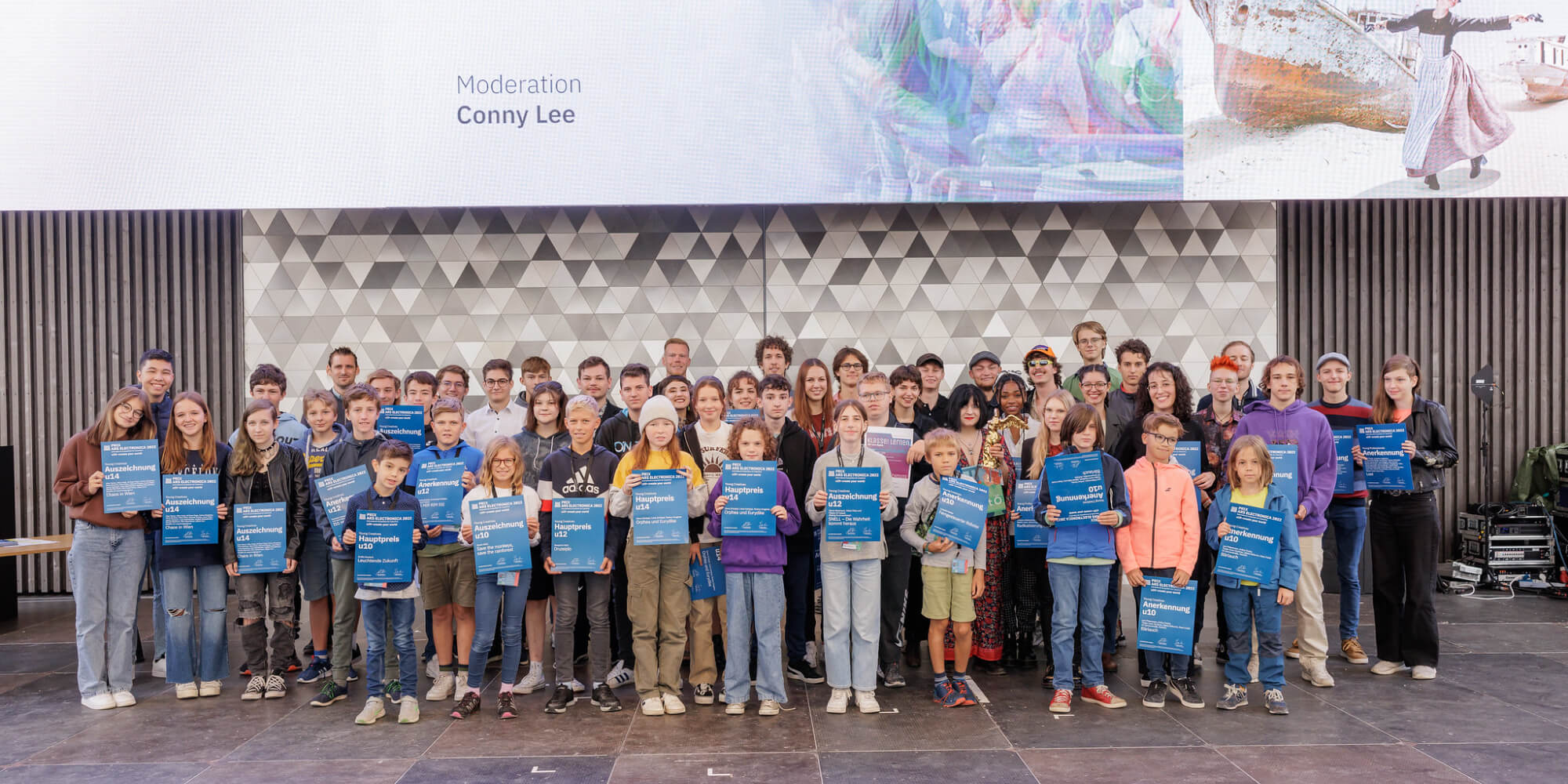
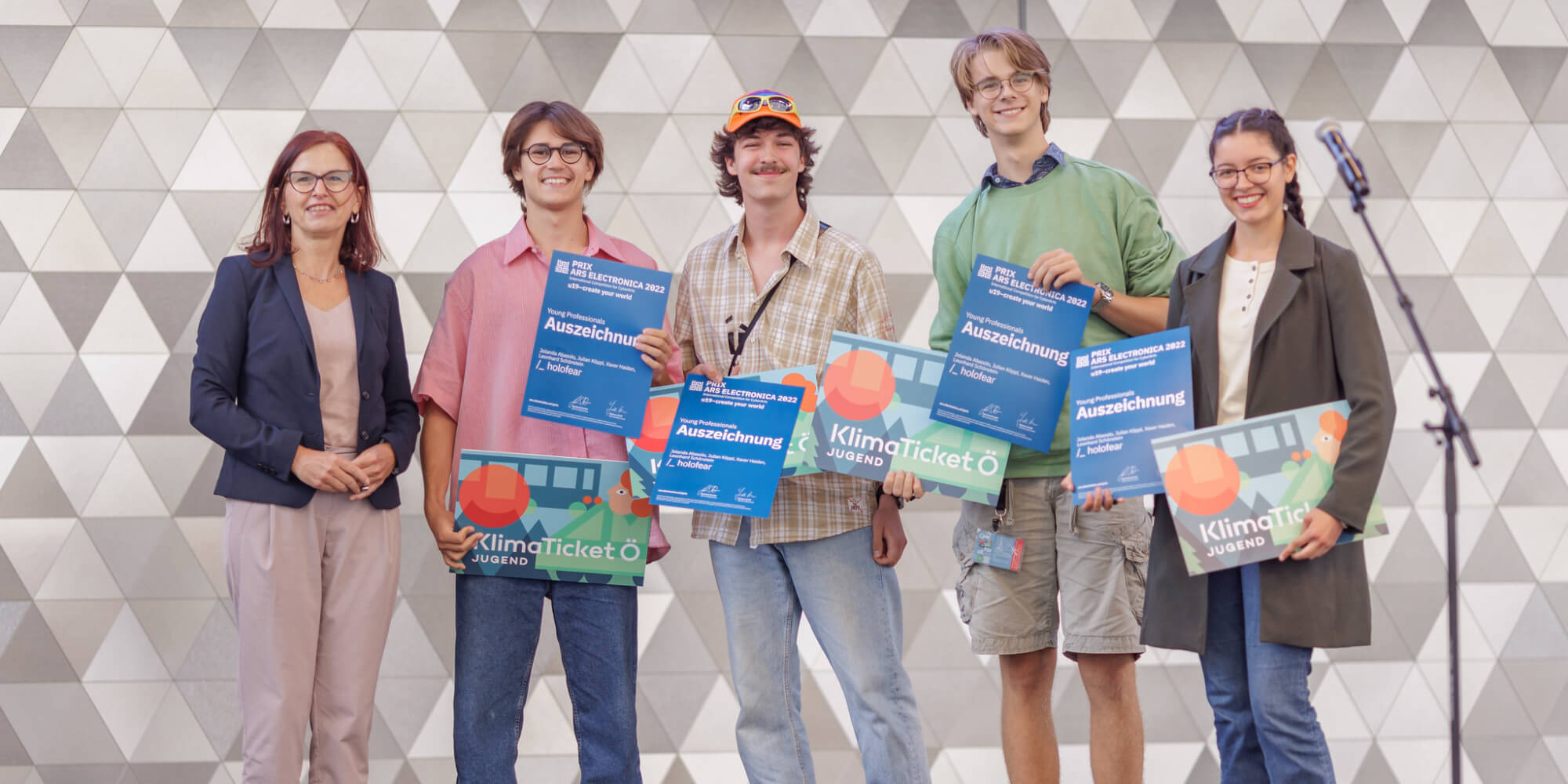
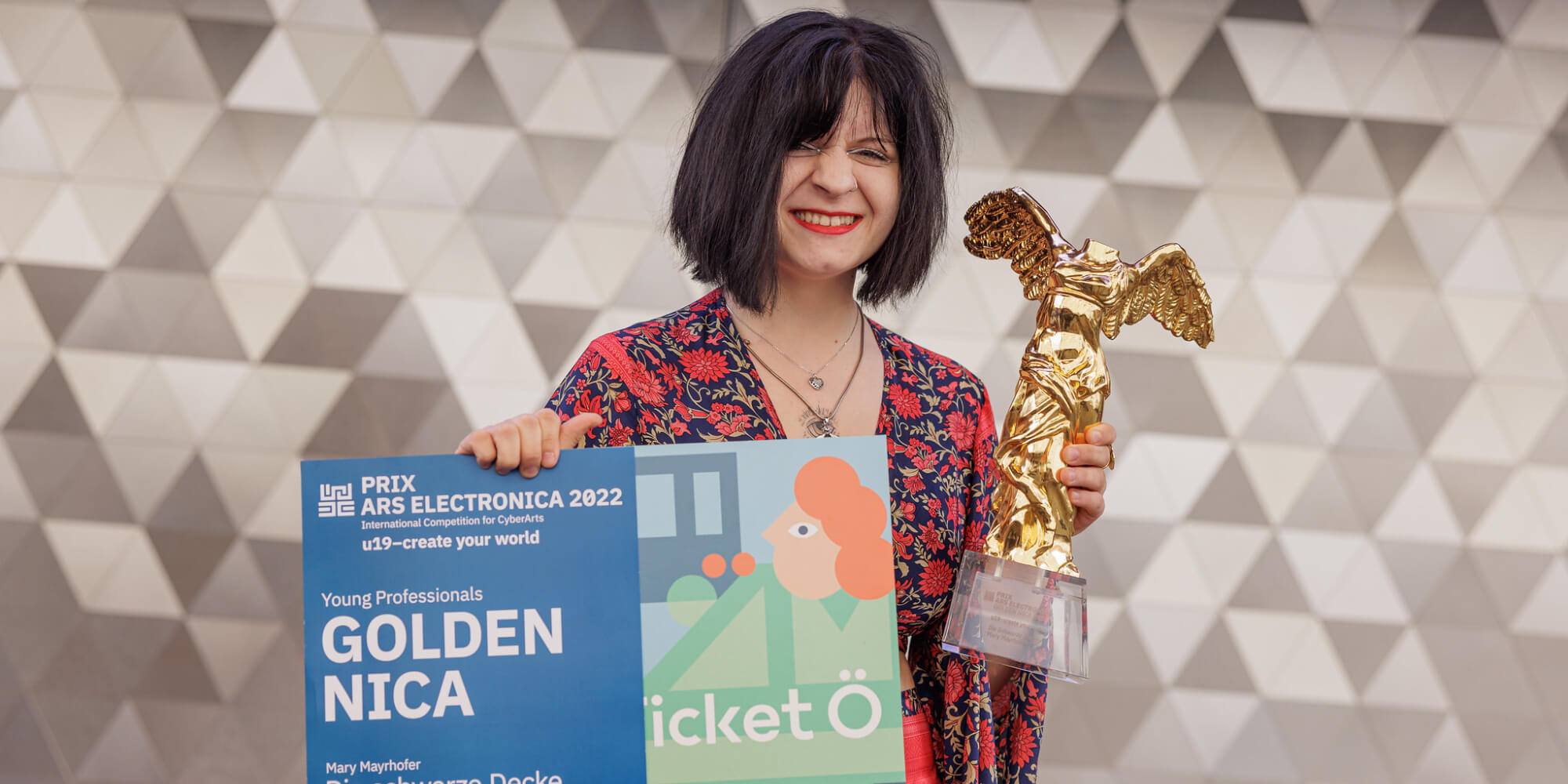
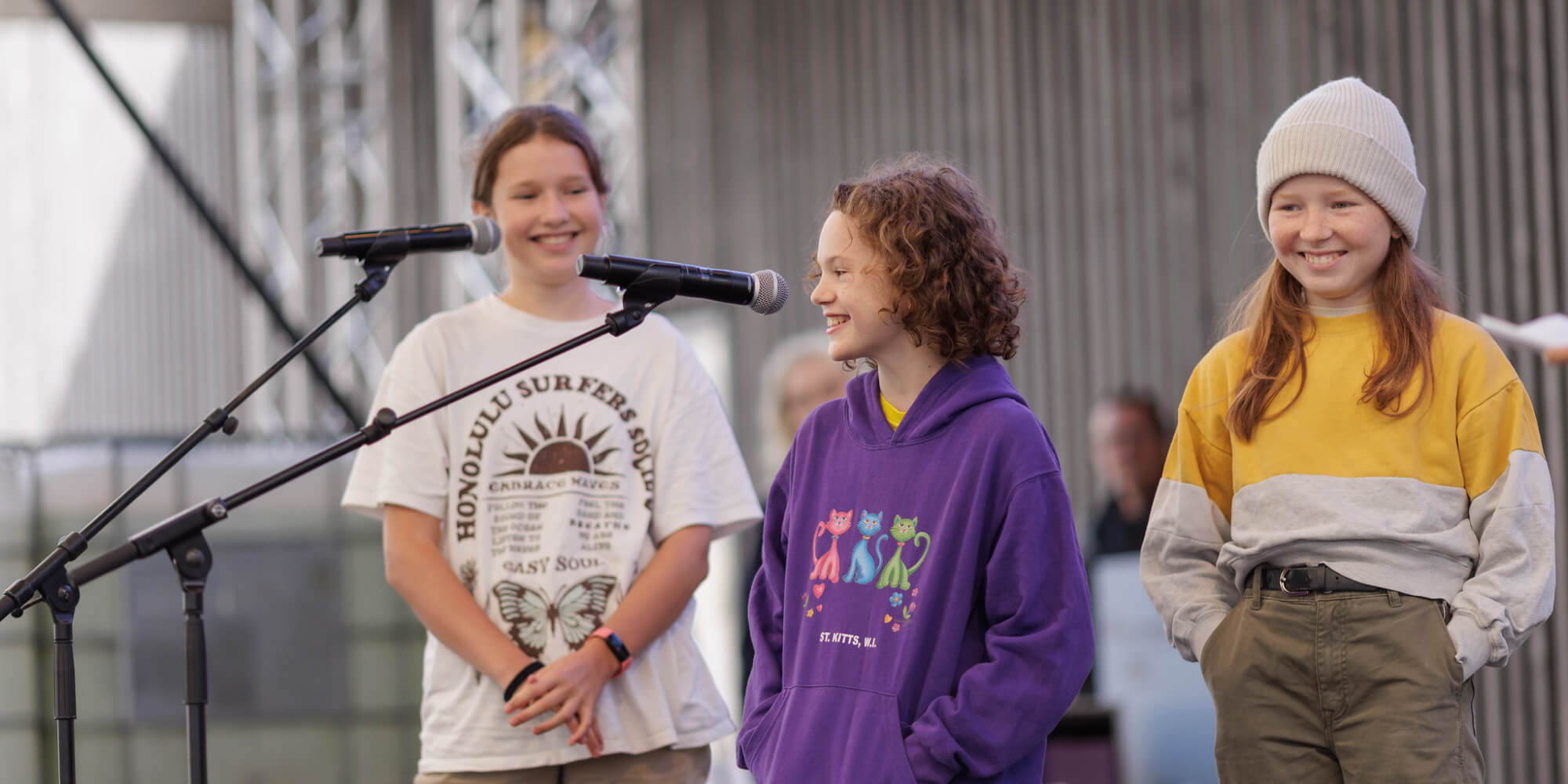

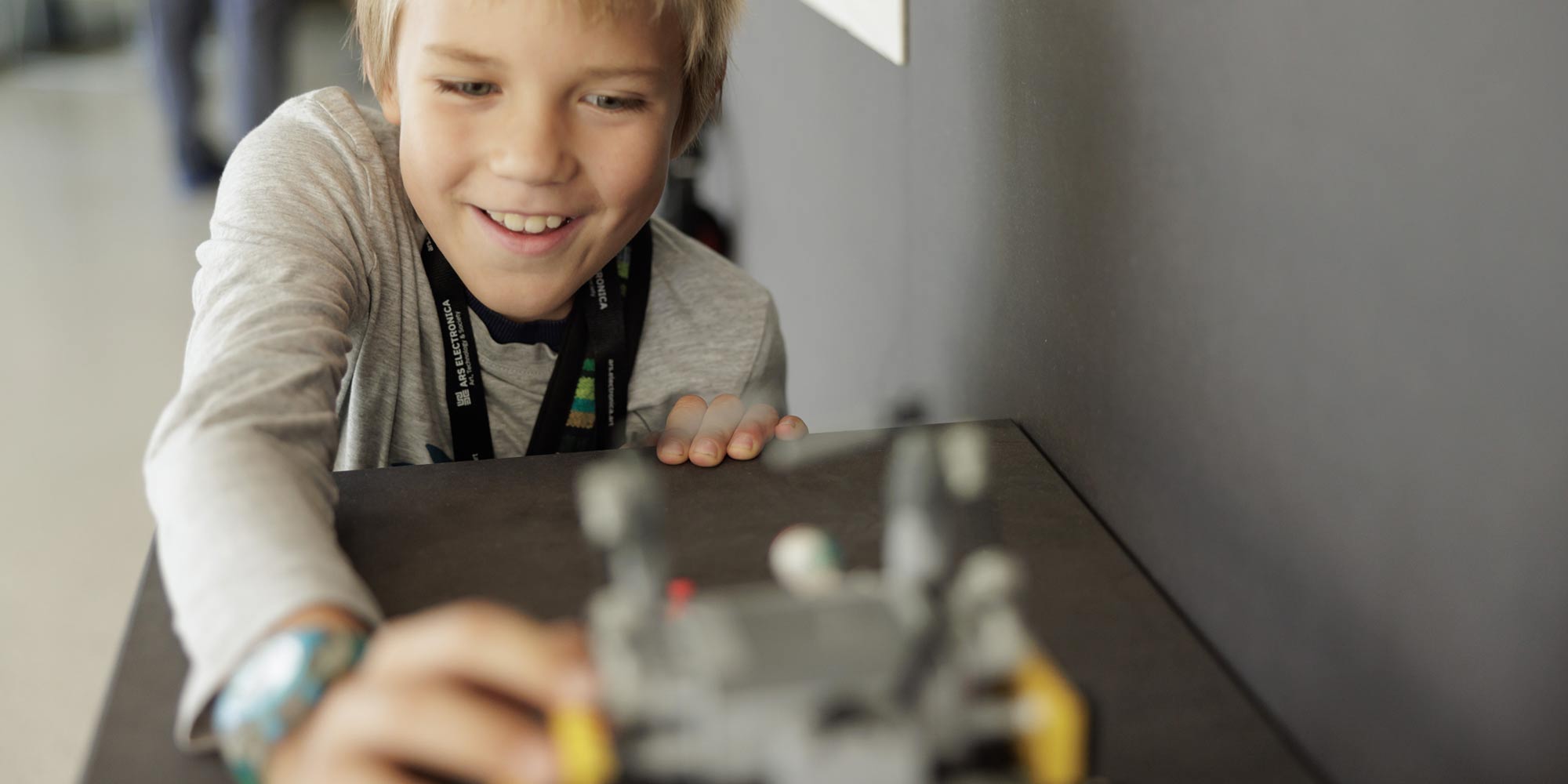
Saturday begins as the previous evening ended: With winners! This time, they’re u19 years old and have won the u19-create your world category of the Prix Ars Electronica as well as the new Klasse! Lernen. Award in cooperation with the Ministry of Education. Their work was on display in the Prix exhibition in the Mensa building during the festival.
After several packed days at the festival the Bio Austria farmers provided the necessary nourishment on Saturday morning with their products in their usual manner at the Bio Austria farmers’ market.
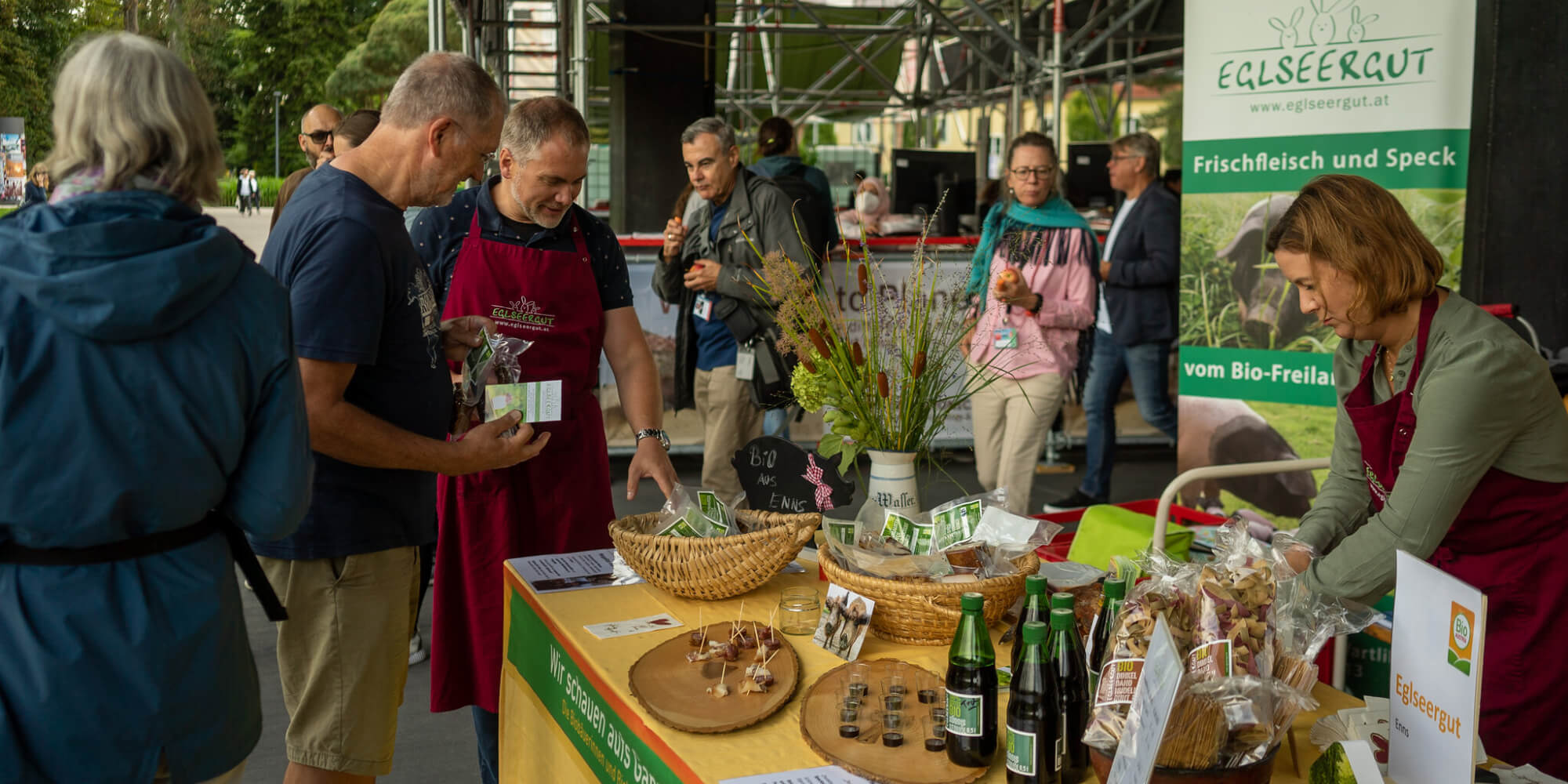
Thus fortified, we moved on to Lecture Hall 1, where the “Studiotopia Day” was on the agenda, the themed conference program of this year’s festival. STUDIOTOPIA – Art meets science in the Anthropocene is an initiative that aims to promote collaboration between cultural and research institutions, universities, innovation centers, creative professionals and citizens. In line with the festival theme, both the speakers and the audience were invited to think creatively and critically about the ecological and socio-political implications of the Anthropocene.
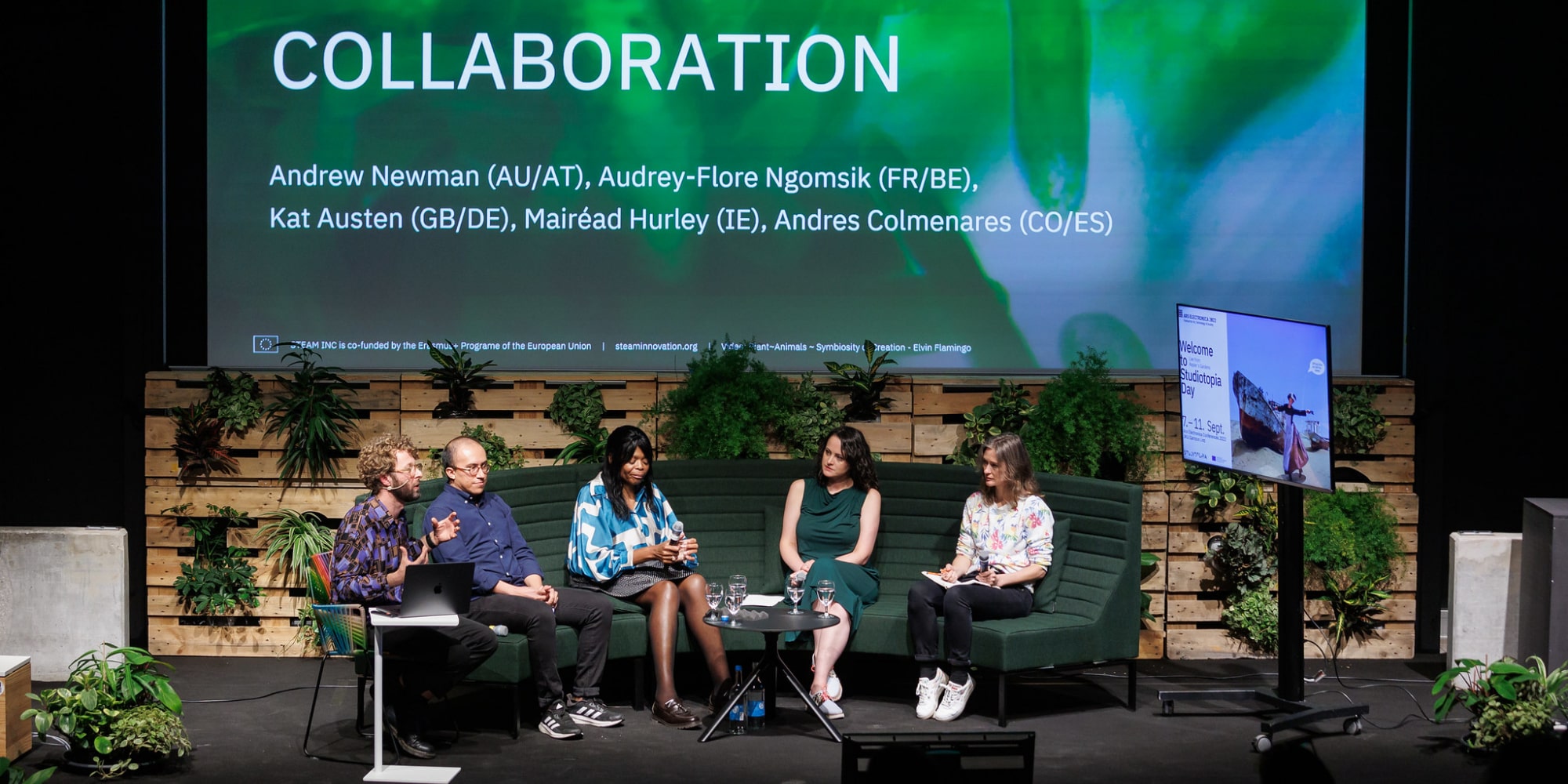
It was an experiment – and it worked. The “Job Buffet”, held for the first time in cooperation with AMS Upper Austria, was intended to give employers and jobseekers the opportunity to get to know each other on a completely different terrain and to engage in conversation. Saturday, September 9, was the day, and representatives from the companies Schwarzer Bär, IKEA, Habau Group, HAKA Küche, Kreisel, Reform, Lenze, OÖG, Diakoniewerk, AfB, Familienbund OÖ, Teufelberger and Ars Electronica itself mingled at the Uni-Center. The result was interesting eye-to-eye discussions that will lead to a series of concrete job interviews later this week.
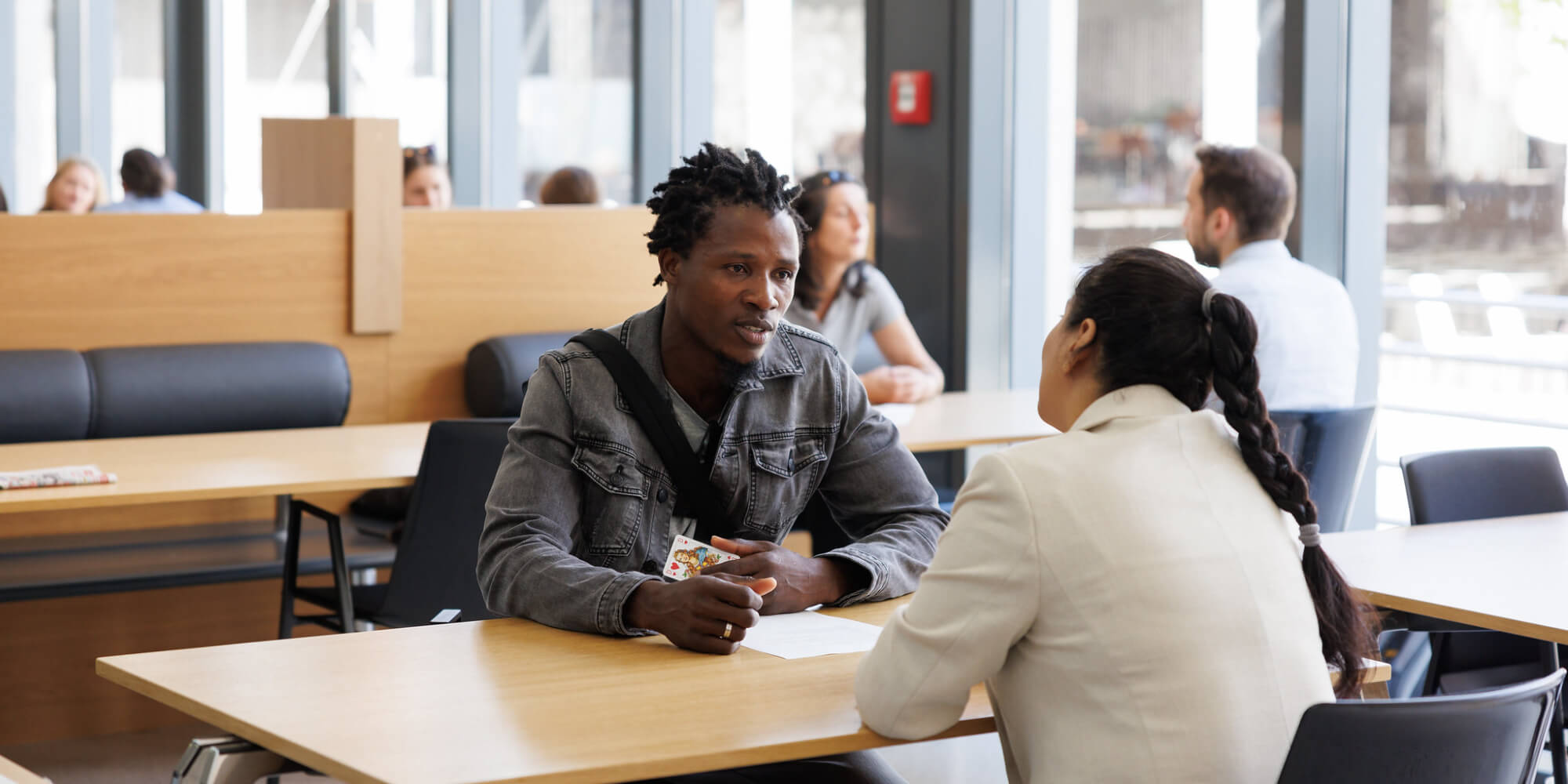
One of today’s highlights, or rather highlights of the entire festival, was then on the program (twice) in the evening: Laurie Anderson took the stage again! Together with the Filharmonie Brno (CZ), Dennis Russell Davies (US/AT) and Rubin Kodheli (US) three compositions were played: “Study for String Orchestra”, composed by the Czech composer Pavel Haas in 1943 and “Symphony No. 3” by Phillip Glass by the Filharmonie Brno conducted by Dennis Russell Davies and “Songs for Amelia Earhart” with Laurie Anderson, together.Thunderous applause was given to all participants, but Laurie Anderson is undoubtedly the favorite of the audience.
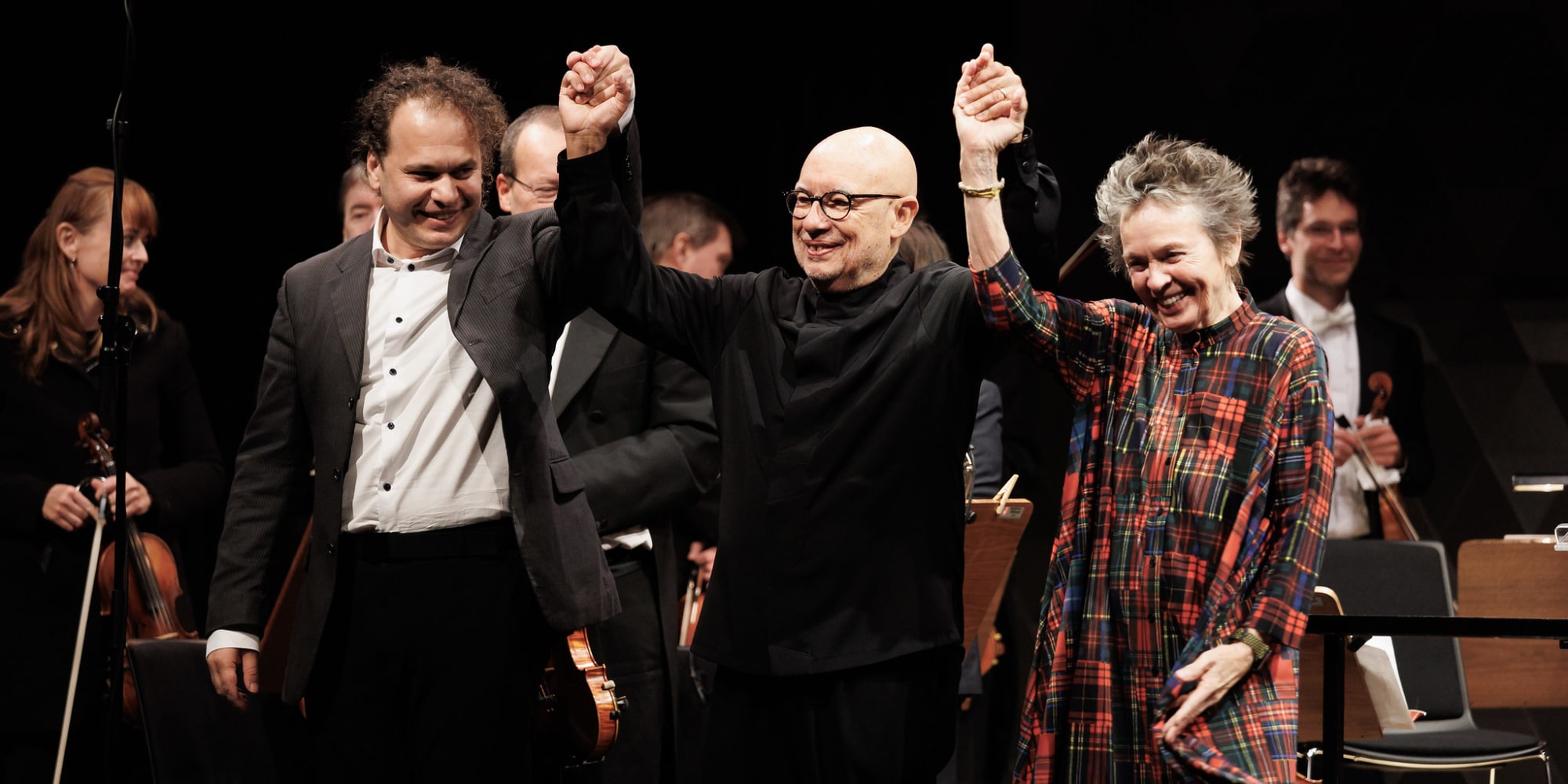
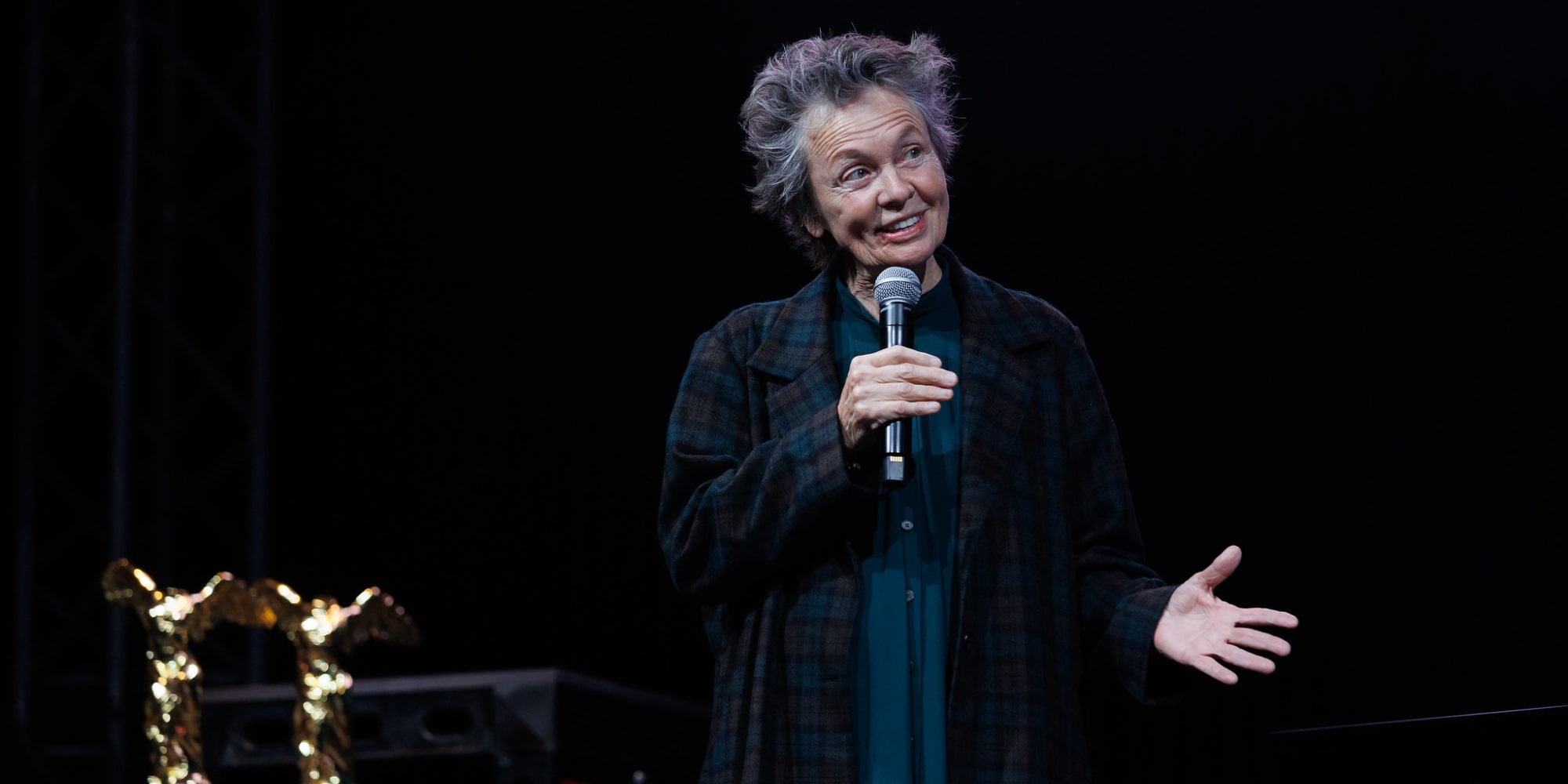
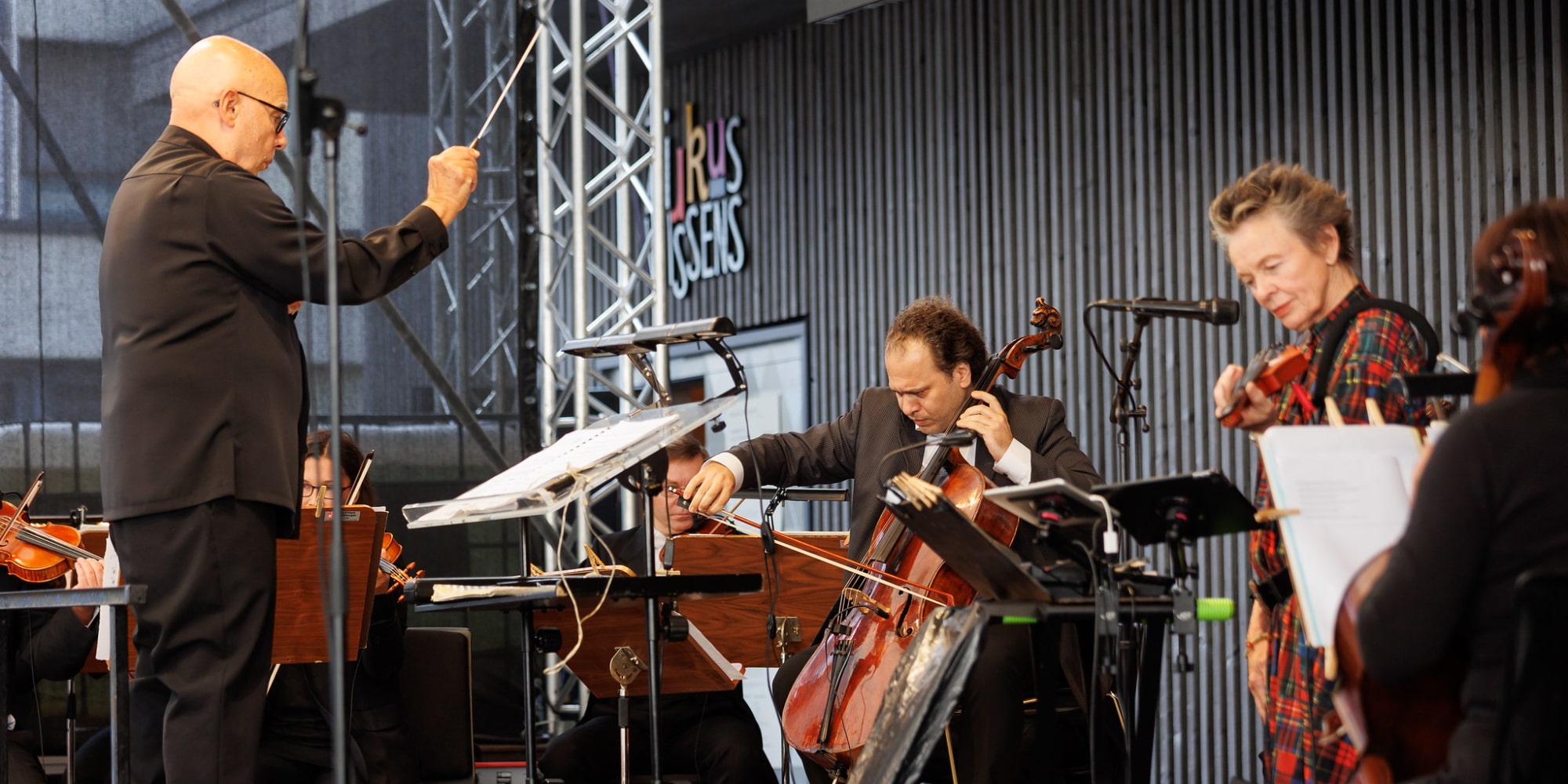
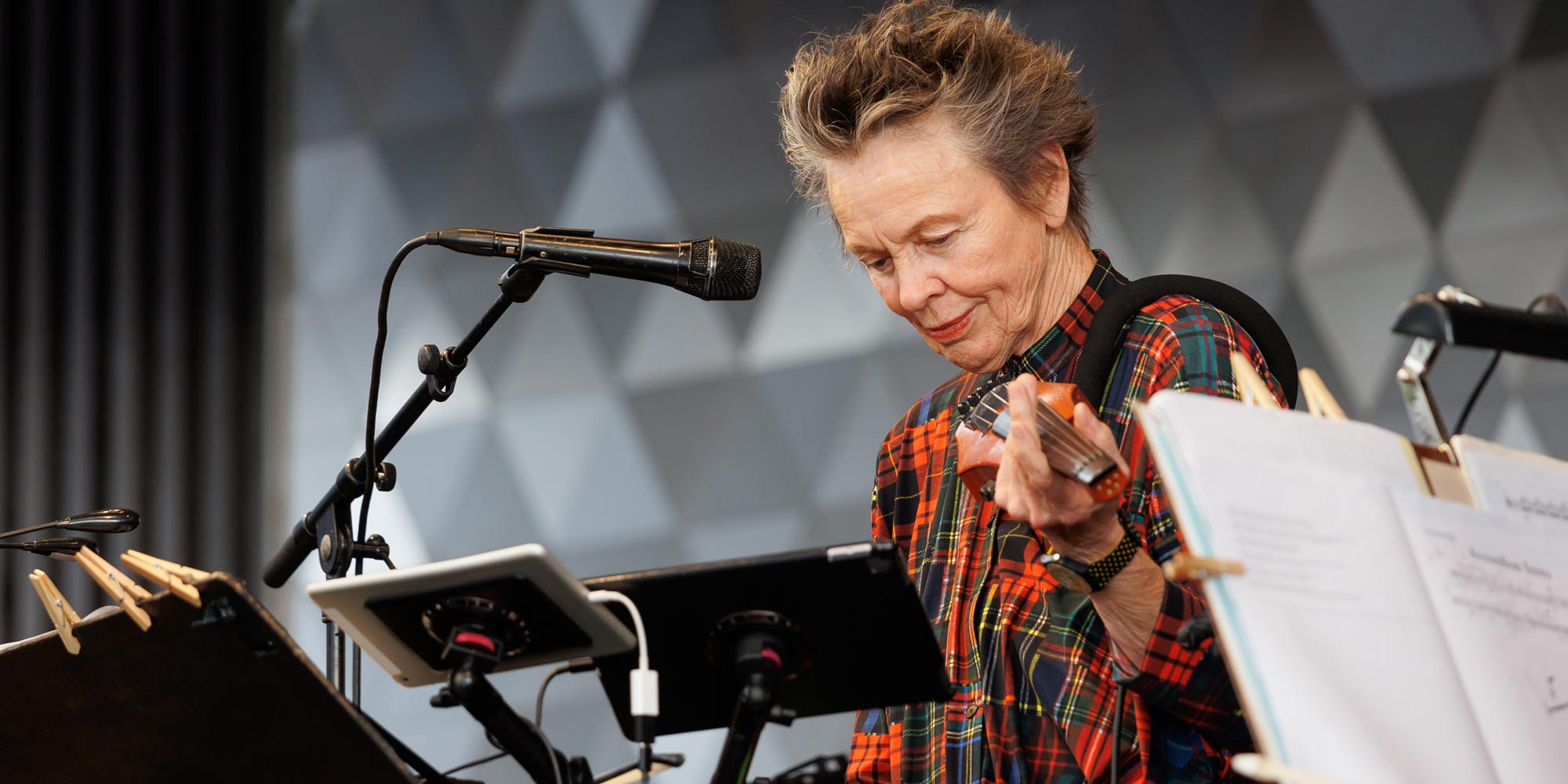
Sunday, September 11, or: The Prix Day
Sunday is all about the Prix Ars Electronica, the world’s most traditional media art competition. Along with the CyberArts exhibition, the Prix Forum is one of the highlights of the Ars Electronica Festival and a good opportunity to get to know the Prix Ars Electronica prizewinners. The audience learned more about what makes the artists curious, what themes or technologies they explore, and what creative processes shape their projects. The encounter between the artists and the jury that previously awarded the prizes is exciting every year and provides the basis for deep dives into the works and the underlying themes.
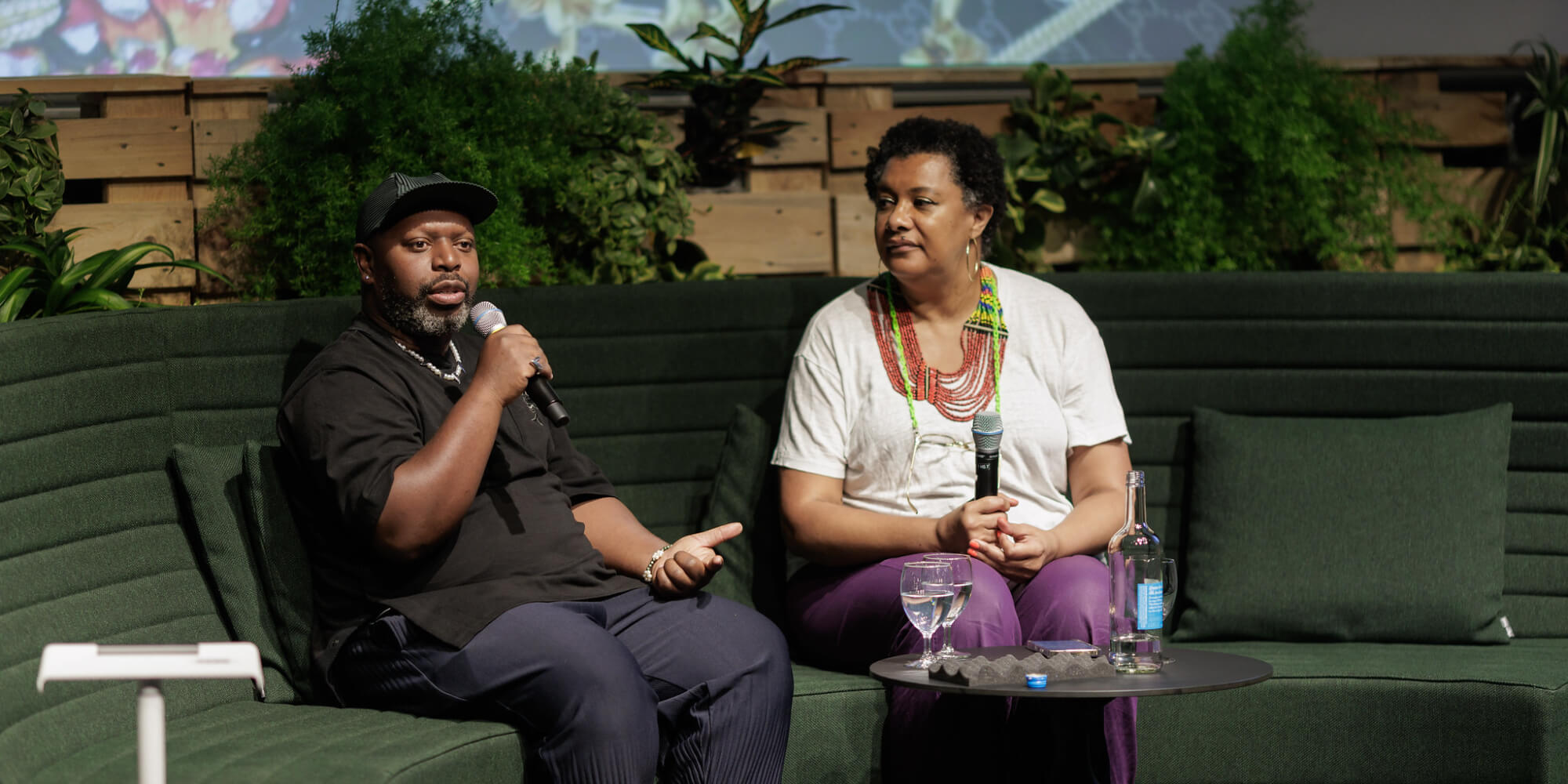
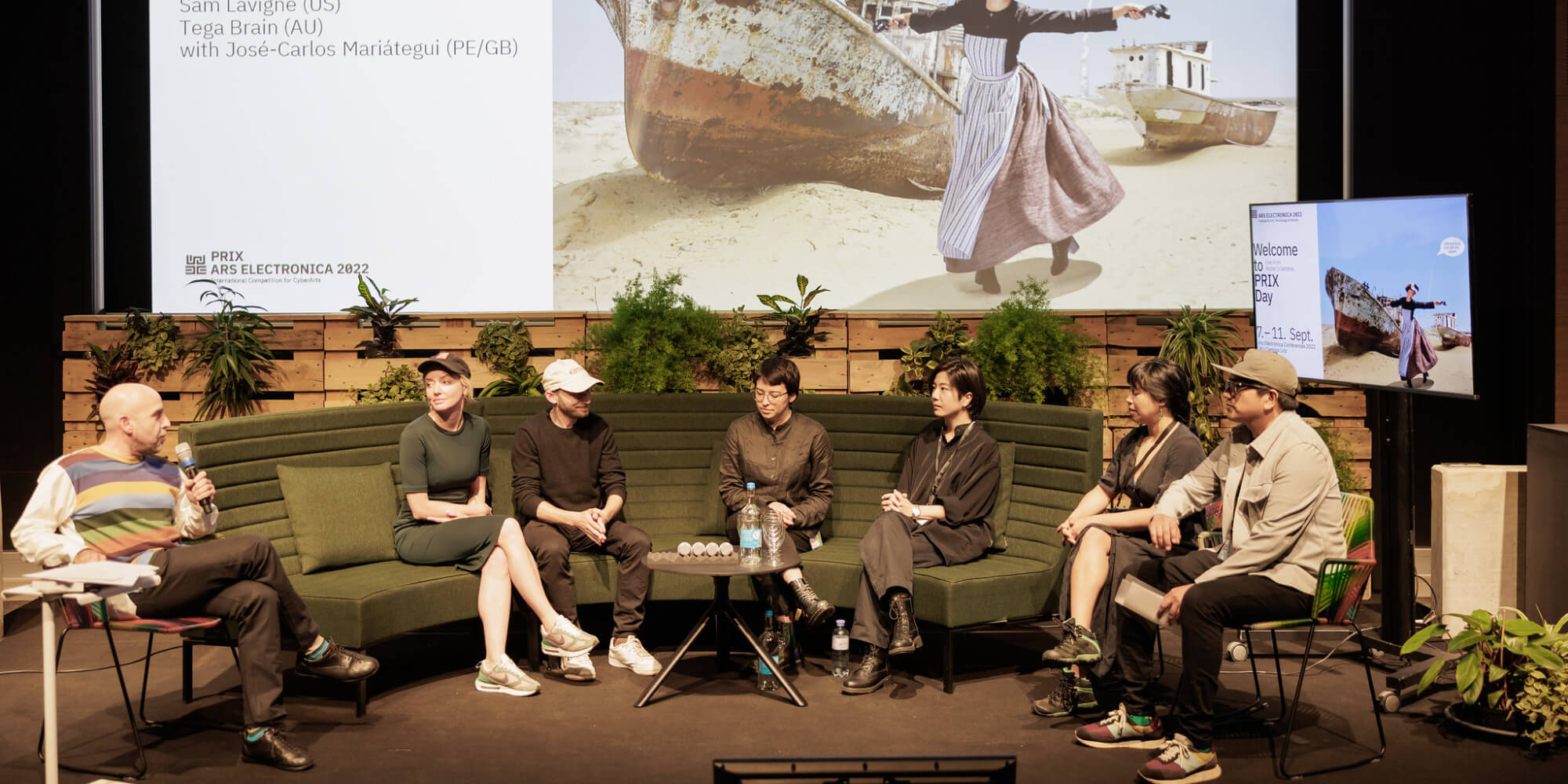

Because Sunday was marked by Linzer rain, the dry indoor programs in particular were very popular, including, for example, Deep Space 8K.
In the afternoon, the create your world area was the scene of a well-known competition: In “Hebocon Reloaded,” the goal was to build your own low-tech robots as “alter egos” out of various materials and to have them compete against each other. However, the aim was not to win, but to come together and do something creative as a team – and the fun certainly wasn’t neglected either.
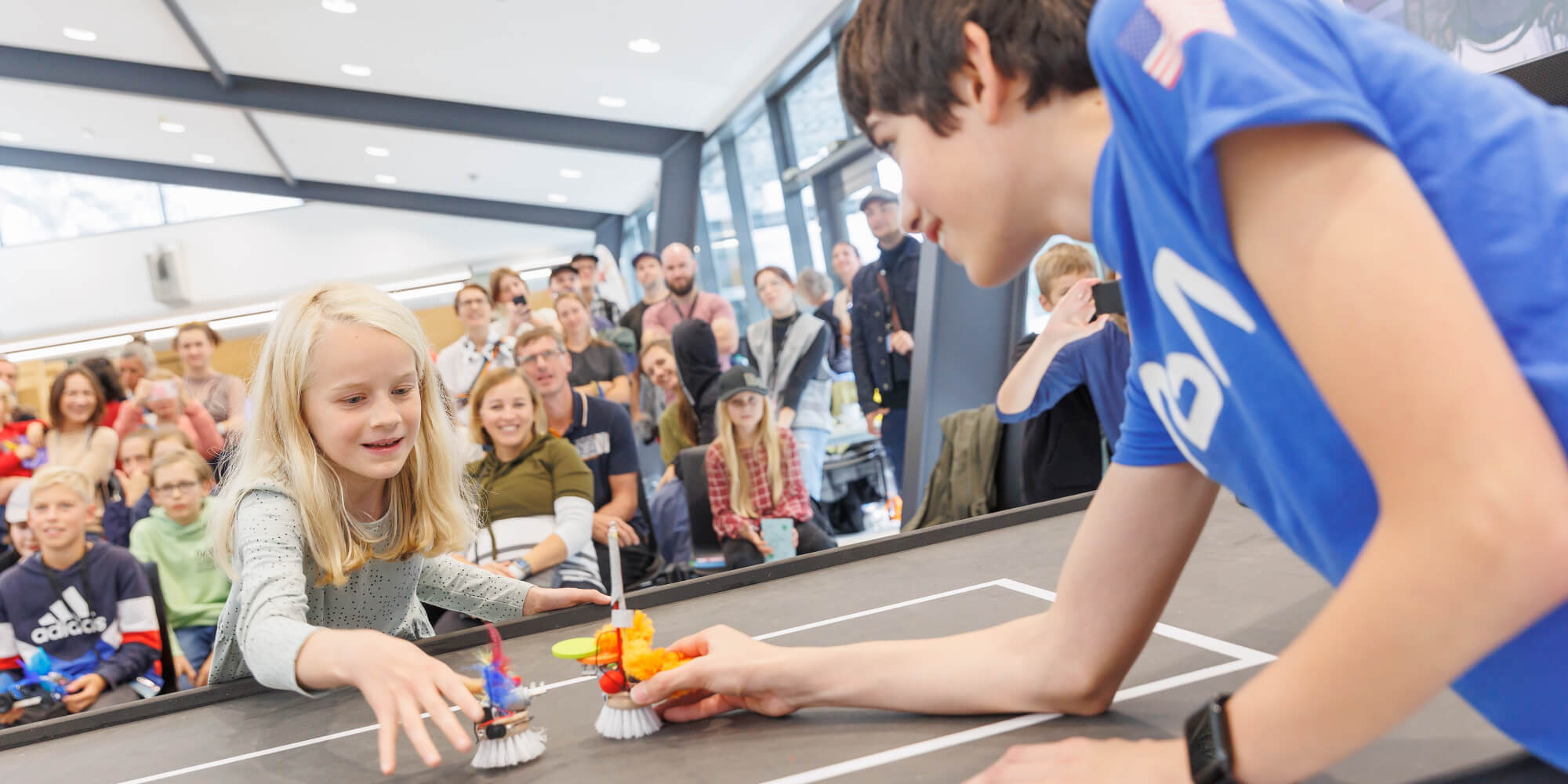
A perfect Sunday program in rainy weather was also represented by the Animation Festival (which took place over the entire festival period). In a relaxing atmosphere, however, stirring works were shown above all, such as the Absence by Marc Hericher below, which won an Award of Distinction in the Computer Animation category and draws the story of a homeless person.

In the established tradition, the festival ends (although it actually continues until evening) with Pianographique, a piano concert by Maki Namekawa with real-time visualizations by Cori O’lan. After Ligeti and Chick Corea last year, Maki Namekawa once again took us on her explorations of the music of our time, presenting a rediscovery and a new commissioned composition.

The -very public- finale of the Festival University was exciting. After excursions throughout Upper Austria, workshops and lectures with high-ranking experts from the Ars Electronica cosmos, the 200 students from 70 countries were invited to a fictitious international environmental and climate trial. This field trial was chaired by Mathis Fister, Professor of Constitutional Law and Administrative Law at Johannes Kepler University Linz. The questions publicly negotiated were whether water should be a private or public good, whether nuclear energy can be considered green and how the status of “climate refugee” should be defined. Regardless of whether the groups of “Applicants” or “Defendants” won or lost in the end – everyone felt like winners because they learned a lot and can take many inspirations, established contacts, new thoughts and suggestions back to their home countries.
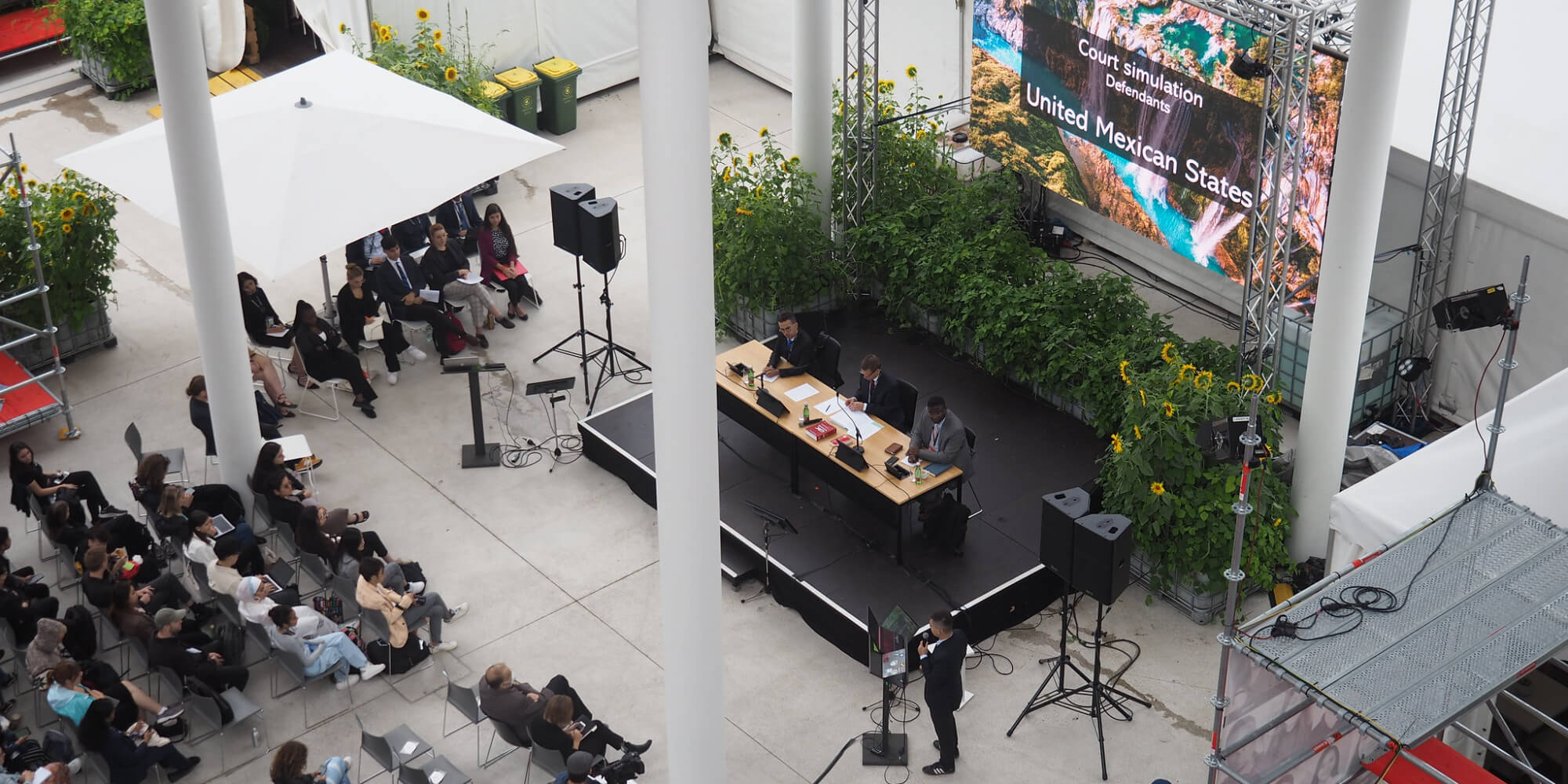
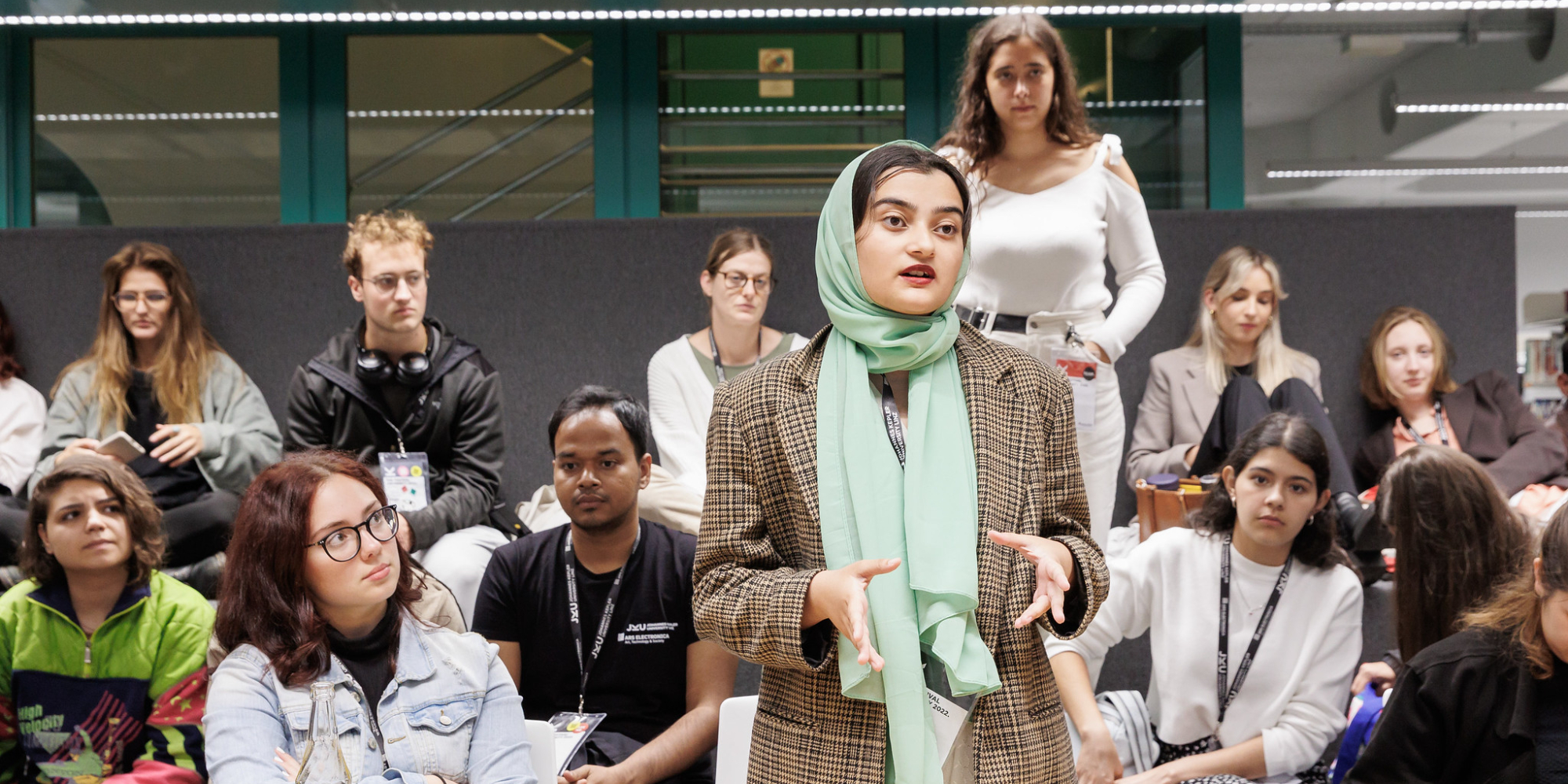


Last but not least, we would like to thank the 337 cooperation partners who made this festival possible, and with whom we hope to continue implementing great projects together in the future. Among them, for example, City of Linz, European Commission, Johannes Kepler University, Linz Art University, Lentos Art Museum Linz, ÖAD, BMKÖS (Federal Ministry of Arts, Culture, Civil Service and Sports), BMEIA (Federal Ministry for European and International Affairs of the Republic of Austria), Hakuhodo, BMW, Ramon Llull Institute, CIFO, Hyundai, AfB, Teufelberger, Upper Austrian Tourism. Many thanks!
We hope you enjoyed our journey through five festival days, to different locations and through many different topics and exhibition formats. In this sense, we wish you peaceful days to process these impressions, stimulating conversations about what you have seen and experienced, and many new ideas and projects that may arise from them and contribute to the beginning of the change that we so urgently need! We are looking forward to welcoming you all again from September 6 to 10, 2023!
